THE R ECORD
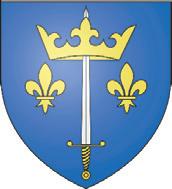




THE FINAL THE 24 hours
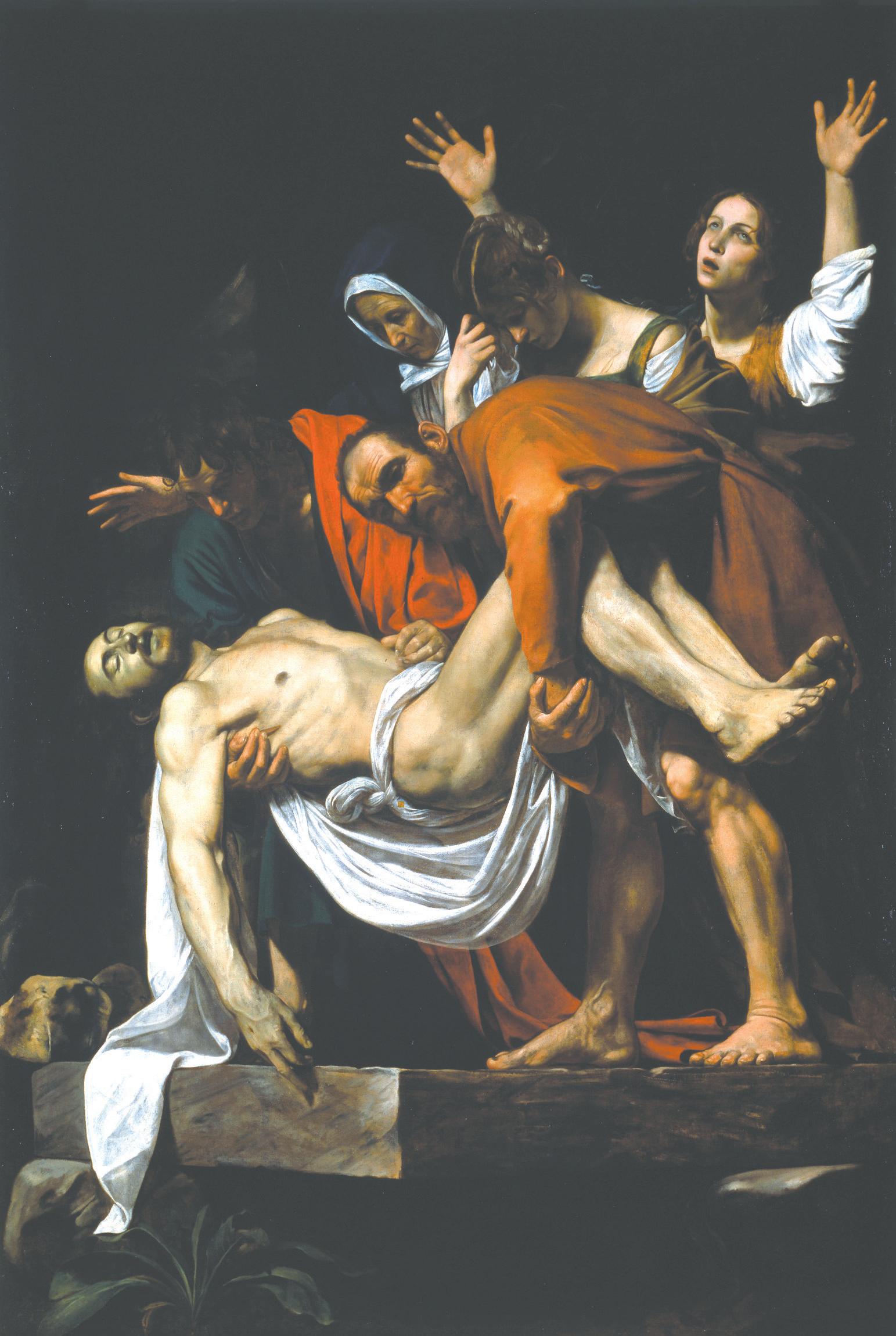
The people, the events; an hour by hour account of the greatest e the events; an hour hour account of the greatest stor y ever told: Jesus Christ ’ s final night and day alive. story ever told: Jesus Christ’s final and alive. Pages 6-11 6-11
Western Australia’s Bishops preach on the meaning of Easter - Pages 10-11
Western Australia’s award-winning Catholic newspaper since 1874 - 31 March 2010
www.therecord.com.au
Perth, Western Australia
the Parish. the Nation. the World.
“Be indefatigable in your purpose and with undaunted spirit resist iniquity and try to conquer evil with good, having before your eyes the reward of those who combat for Christ.”
-Bishop Matthew Gibney
FREE Easter 2010 SPECIAL EDITION
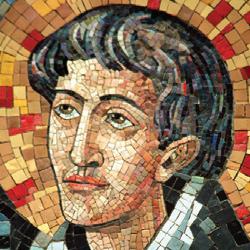
Time is no longer normal, anymore
A message from the staff of The Record
In this special edition of The Record, we have departed from our usual weekly format because Easter is no normal time of the year. At Easter, we are given a unique chance to see the meaning of our lives in a completely different way - through a prism that conveys light of an eternal kind and in the context of the life of Christ who died for us. At this spectacular feast, the greatest in the Church’s year, which is also the ultimate paradox - a defeat that becomes a victory - we are no longer living in normal time. In fact, how can there be such a thing at all anymore since the moment of Christ’s death and His resurrection? All time since Christ’s sacrifice upon the Cross, in a very real sense, can now only be described as extraordinary time. In this edition of The Record we have decided to focus on the last days of Jesus, brought alive in word and pictorially, to offer a much longer than usual but still superbly rendered account of the last days and moments of Christ’s life and of His suffering. We hope you find it as riveting and illuminating as we have. Take this edition of the paper home, read some of it, put it down and, later, pick it up again. Let the story and its meaning come alive for you. Walk with Him.
In this edition: The Last 24 Hours
Forensic eyesWorld Youth Day festivitiesWA screen award winners





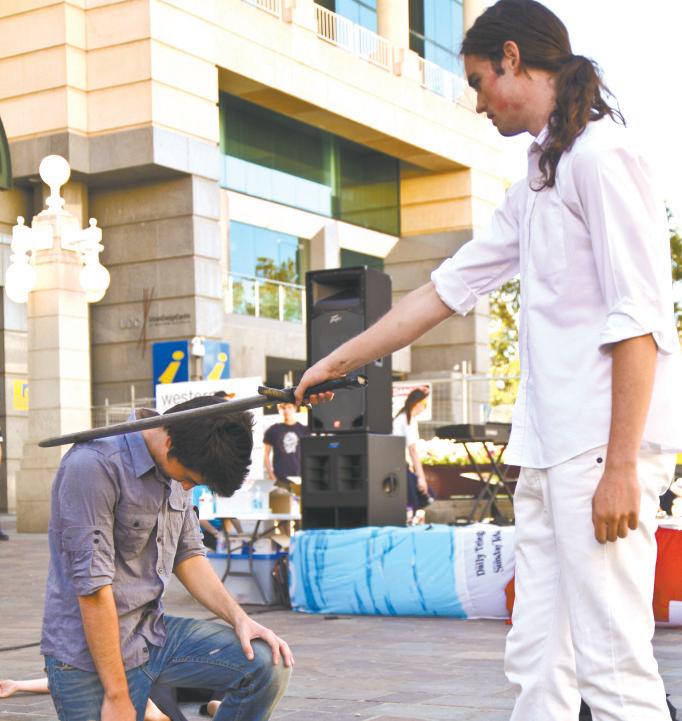
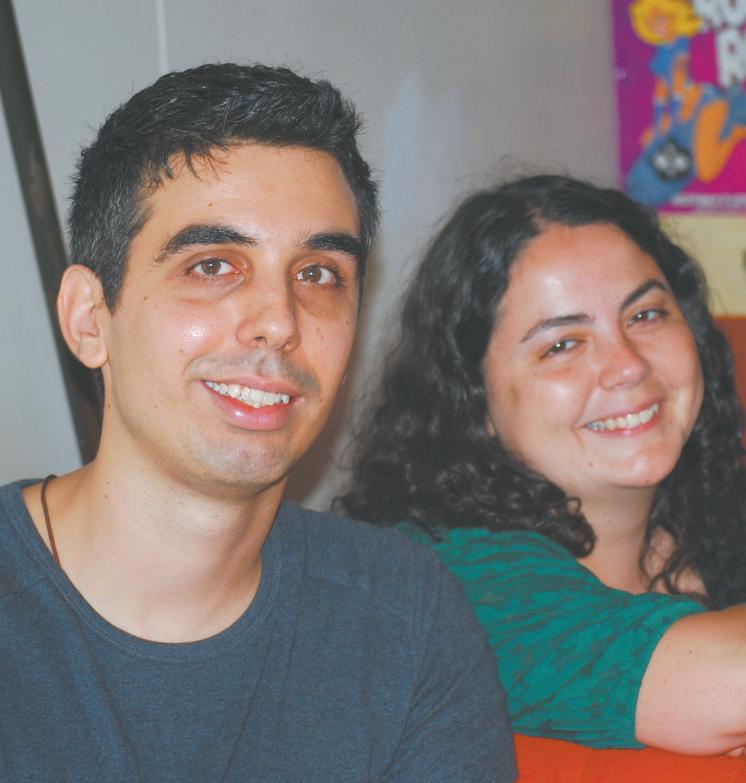
How it really happened: the people, the events, the timeline PAGE 6
A surgeon discusses the medical realities of Christ’s suffering PAGES V49
World Youth Day 2010 is celebrated in Forrest Chase PAGES 1213
Faith and values not unimportant to award-winning team PAGES 45

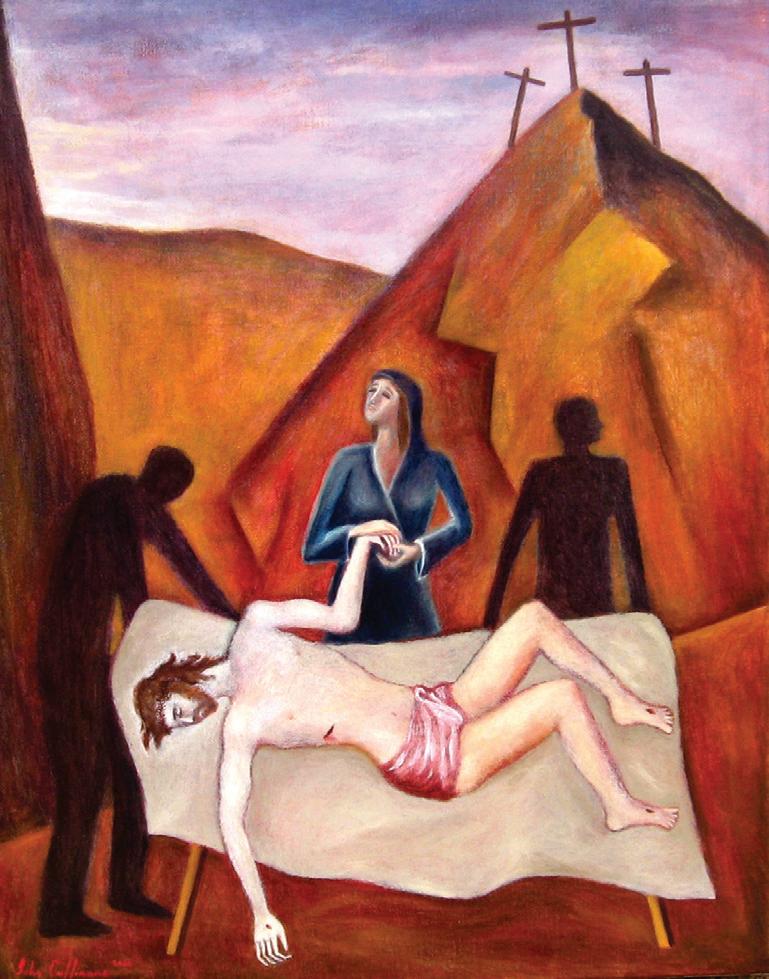
Catholic Church Pope Priest Baptised
Sacrament Season Prayer
Confession
Heaven Rosary Cardinal Consistory
Jesus Trinity
God Mary
Holy Family Culture Journey Pilgrimage Catholic Church Pope Priest Baptised
Sacrament Season Prayer
Confession
Heaven Rosary
Cardinal Consistory
Jesus Trinity God Mary
Holy Family
Culture Journey
Pilgrimage Catholic
Church Pope
Priest Baptised
Sacrament
Season Prayer
Confession
Heaven Rosary
Cardinal Consistory
Jesus Trinity
God Mary
Holy Family
Culture Journey
Pilgrimage
Catholic Church Pope
Priest Baptised
Sacrament
Season Prayer
Confession
Heaven Rosary
Cardinal Consistory
The Parish. The Nation. The World. The Church. Clarity for complex times. The Record.
Jesus Trinity
God Mary
Holy Family
Culture Journey
Pilgrimage Catholic Church Pope Priest Baptisedw
Page 2 31 March 2010, The Record THE PARISH 200 St. George’s Terrace, Perth WA 6000 Tel: 9322 2914 Fax: 9322 2915 Michael Deering 9322 2914 A division of Interworld Travel Pty Ltd ABN 21 061 625 027 Lic. No 9TA 796 michael@flightworld.com.au www.flightworld.com.au • CRUISING • FLIGHTS • TOURS • Travel Dream LIVE YOUR FW OO3 12/07 SAINT OF THE WEEK Vincent Ferrer c. 1350-1419 April 5 Born in Valencia to an English father and Spanish mother, Vincent joined the Dominican friars in 1367 and became a noted preacher, making converts even among Jews and Muslims. After years of backing the Avignon papal claimants, Vincent withdrew his support, helping to end the papal schism that had divided the Western church. He did intensive mission work in France, Spain and Italy, drawing huge revival-type crowds and gaining fame as a miracle worker. He died during a preaching tour of Brittany. Crosiers Saints Editor Peter Rosengren cathrec@iinet.net.au Local News Bridget Spinks baspinks@iinet.net.au Mark Reidy reidyrec@iinet.net.au National News Anthony Barich abarich@therecord.com.au Advertising/Production Mat De Sousa production@therecord.com.au Accounts June Cowley recaccounts@iinet.net.au
Kwaramba administration@therecord.com.au Record Bookshop Jing Ping bookshop@therecord.com.au Proofreaders Christine Jaques Eugen Mattes Contributors Debbie Warrier John Heard Karen and Derek Boylen Anthony Paganoni CS Christopher West Catherine Parish Bronia Karniewicz Fr John Flader Guy Crouchback The Record PO Box 75 Leederville WA 6902 587 Newcastle Street, West Perth Tel: (08) 9227 7080, Fax: (08) 9227 7087 Website: www.therecord.com.au The Record is a weekly publication distributed throughout the parishes of the dioceses of Western Australia and by subscription. The Record is printed by Rural Press Printing Mandurah and distributed via Australia Post and CTI Couriers. Want the news? Stay informed. Every way. Video The Parish Podcasts The Nation Print The World Try the CNS Mediaplayer on The Record’s website www.therecord.com.au WESLEY UNITING CHURCH PERTH CNR HAY AND WILLIAM STREETS, PERTH UNITING CHURCH IN THE CITY PRESENTS An Easter Celebration of the STATIONS OF THE CROSS An annual exhibition by Western Australian Artists Exhibition Times: Saturday 27th March to Monday 5th April, 2010. Open daily: 9am to 5pm Easter Services: Good Friday 10.00am, Easter Sunday 10.00am Enquiries: Tel: 6103 4222 or Email: admin@ucic.org.au Web: www.perthunitingchurch.org.au Participating artists Karin Wallace, Tania Spencer, Peter Fitzsimmons, Hans Arkeveld, Vincent Elliott, Peter Kovacsy, Ron Nyisztor, Jane Martin, Sally Stewart, Wendy Lije, Connie Petrillo, Norma MacDonald, John Cullinane, Patrizia Tonello, Jennie Nayton Cover image: Deposition (Station 13) by John Cullinane (2010)
Classifieds/Panoramas/Subscriptions Bibiana
Science and faith not at loggerheads
Science and faith can be partners in truth, Pope says at audience
VATICAN CITY (CNS) - Science and faith are not at loggerheads, but are two distinct paths that together can lead to the truth, Pope Benedict XVI said.
Many scientists, in fact, have carried forth their research inspired by the wonder and gratitude they feel for God and his creation, thus turning “scientific study into a hymn of praise,” he said on 24 March during his weekly general audience in St Peter’s Square.
“Despite some episodes of misunderstanding that have occurred in history, faith and science are not in opposition,” he said.
The Pope’s audience talk focused on the life and teachings of St Albert the Great, a 13th-century Dominican, doctor of the church and patron saint of the natural sciences. St Albert, who also taught St Thomas Aquinas, was a prolific scholar and theologian and immersed himself in the study of chemistry, astronomy, geology, botany and zoology, the Pope said.
He showed that a person of faith and prayer “can serenely cultivate studies of natural sciences and make advancements in the understanding of the micro- and macrocosmos, discovering laws pertaining to the material world” in a quest driven by thirst and love for God, the Pope said.
The saint demonstrated that faith is not opposed to reason and that creation “can be seen as a ‘book’ written by God and capable of being ‘read’ in its own way by the various sciences,” he said.
St Albert showed that the pre-Christian Greek philosophy of Aristotle was not to be feared as being incompatible with the

A fifth-grader watches a test tube for a chemical reaction during science class at Our Lady of Pompei Catholic School in Syracuse, New York in 2006. Pope Benedict XVI said the common perception pushed by atheists that science is at loggerheads with faith could not be further from the truth. CNS
Christian faith because “that which is truly rational is compatible with the faith revealed in sacred Scripture,” he said. While philosophy and theology represent two different methodologies, he said, they are “in dialogue with each other and cooperate harmoniously in the discovery of humanity’s true vocation” to truth and happiness.
Editor’s Note: The text of the Pope’s audience remarks in English will be posted online at: www.vatican.va/holy_father/ benedict_xvi/audiences/2010/documents/hf_ben-xvi_ aud_20100324_en.html.
New diocese for Medjugorje?
ANDREA Tornielli, the Italian journalist who last week named some members of a special Vatican commission investigating the reported apparitions at Medjugorje, now reports that one among many steps under consideration is the creation of a new diocese to include the Bosnian town.
Taking territory currently under the jurisdiction of three other dioceses, including Mostar, where Medjugorje is located, the diocese would “permit a better administration of the flow of pilgrims.”
The veteran Vatican writer Andrea Tornielli reported in the Saturday edition of Il Giornale, an
Correction
FATHER Michael Rowe did not take over as chaplain of the Perth Archdiocesan Latin Mass community from Fr Augustine Cummins CSsR, as mentioned in the front page story of the 17 March edition of The Record
The schismatic Cisalpine Lefebvrists did, without any reference to the Archbishop of Perth, Perth’s Vicar General Mgr Brian O’Loughlin told The Record
Later, Archbishop Barry Hickey wrote to the Cisalpine Lefebvrists asking whether they accepted his authority as Archbishop of Perth, but never received a reply. So they are in schism, the Vicar General said. Also, the story referred to Fr Rowe celebrating the Tridentine Mass.
The correct term is Mass in Latin according to Summorum
Italian newspaper, on the renewed possibility of the erection of a diocese that would make Medjugorje independent from the Diocese of Mostar, which is run by Bishop Ratko Peric. He has been vocal in his scepticism of the authenticity of the apparitions.
Tornielli wrote that the decision to create the new diocese, with a possible See in Makrska, was nearly made last September, but was put off in part by the opposition of Bishop Peric.
The new diocese would be created from territory currently falling within the dioceses of Dubrovnik, Mostar and Spalato.
-Catholic World News
Pontificum as The Record correctly stated in the first paragraph of the story. The extraordinary form is according to the 1962 Missal, abbreviated by Fr Rowe to Traditional Latin Mass.
Mgr Michael Keating, Dean of St Mary’s Cathedral, also clarified that the Pro-Cathedral of St John the Evangelist, from which the Latin Community is moving to St Anne’s Church in Belmont, is not being taken over by the Third Order of St Francis, as may have been implied. They will use it once on the fourth Sunday for each month for meetings. Mgr Keating told The Record that the Pro-Cathedral is open to use by anyone, by permission from himself, as well as serving as a historical venue for general interest as the original Cathedral in the Archdiocese of Perth before St Mary’s was built. The Record apologises for any confusion.
Catholic Health questions Rudd reforms
Catholic Health Australia says Prime Minister Kevin Rudd’s hospital reform plans aren’t clear enough yet for endorsement. CHA submitted a private eight-page response to the government the day before last week’s debate between Mr Rudd and Opposition Leader Tony Abbott. While there was “merit in some aspects” of the plan, CHA said, a “yes or no answer is not yet possible. Not enough detail has yet been made available.”
Mary MacKillop Canonisation



















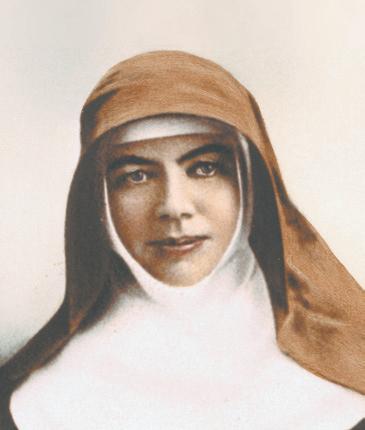







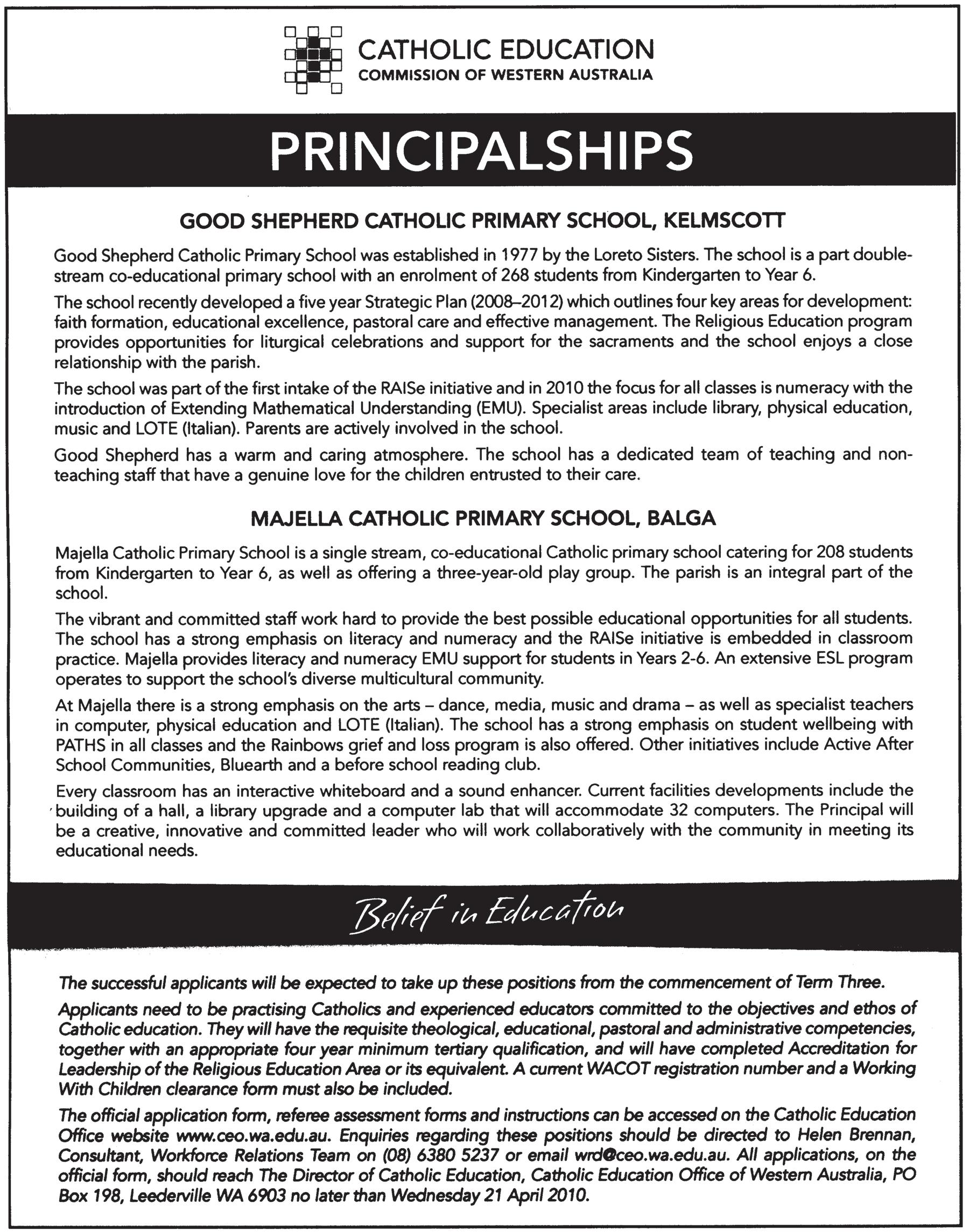
31 March 2010, The Record Page 3 THE PARISH
CANONISATION HARVEST TRAVEL OFFICE Appointed by Sisters of St Joseph, Catholic Archdiocese of Sydney & Australian Catholic Bishops Conference Fully Escorted 5 & 7 day Rome Pilgrimages Wide choice of airlines, hotels & pilgrim houses Canonisation tickets guaranteed Featuring: • Custom designed Rome program with Sisters of St Joseph • Entry passes to all official ceremonies & events • Professional Escorts and guided sightseeing • Quality accommodation options Rome
Itinerary Featuring: Lourdes • Paris • Chartres • Paray Le Monial • Taize & more A RomeHoly Land Itinerary Featuring: Bethlehem • Sea of Galilee • Jerusalem • Nazareth • Mt Tabor & more It Rome Scotland Following Mary’s journey of 1874 through the MacKillop heartland of Scotland... Itin • P Rome Italy Itinerary Featuring: Venice • Padua • Cinque Terre • Florence • Assisi • Loreto & more CHOOSE FROM A RANGE OF PACKAGES & TOURS OFFICIAL CANONISATION TOUR OPERATOR CUSTOMISED GROUPS For special group enquiries from parishes, schools or movements contact us for an immediate quotation Reserve your place in history... Rome Direct 4 & 6 Night programmes Fully Inclusive Packages from $ 3190 Call Centre: 1300 GO ROME (1300 467 663) • www.canonisationtravel.com
France
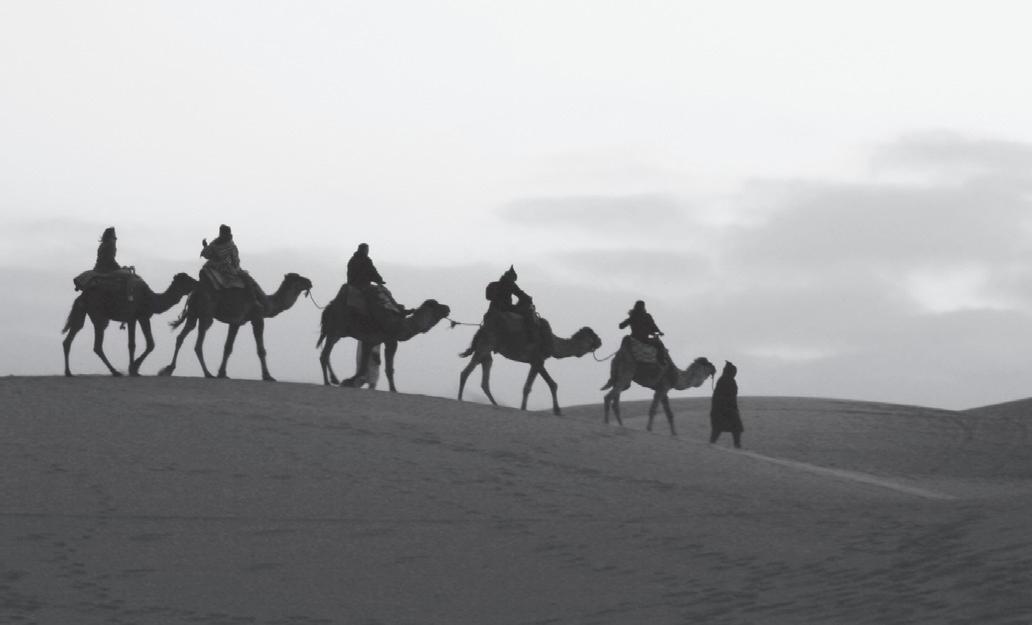
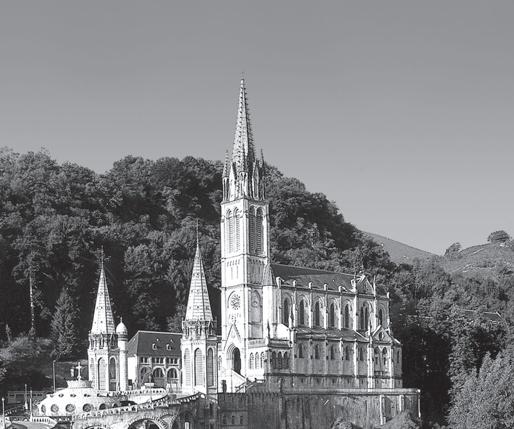

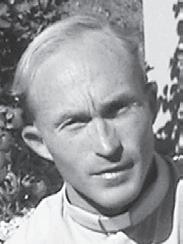

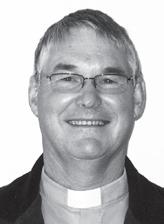
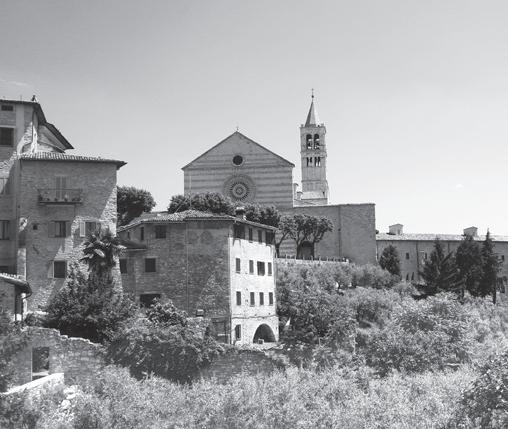

Creative team with
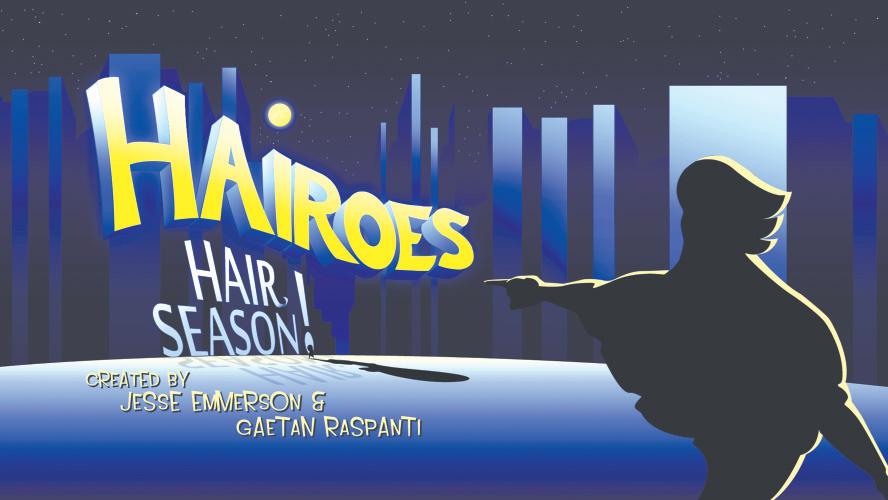
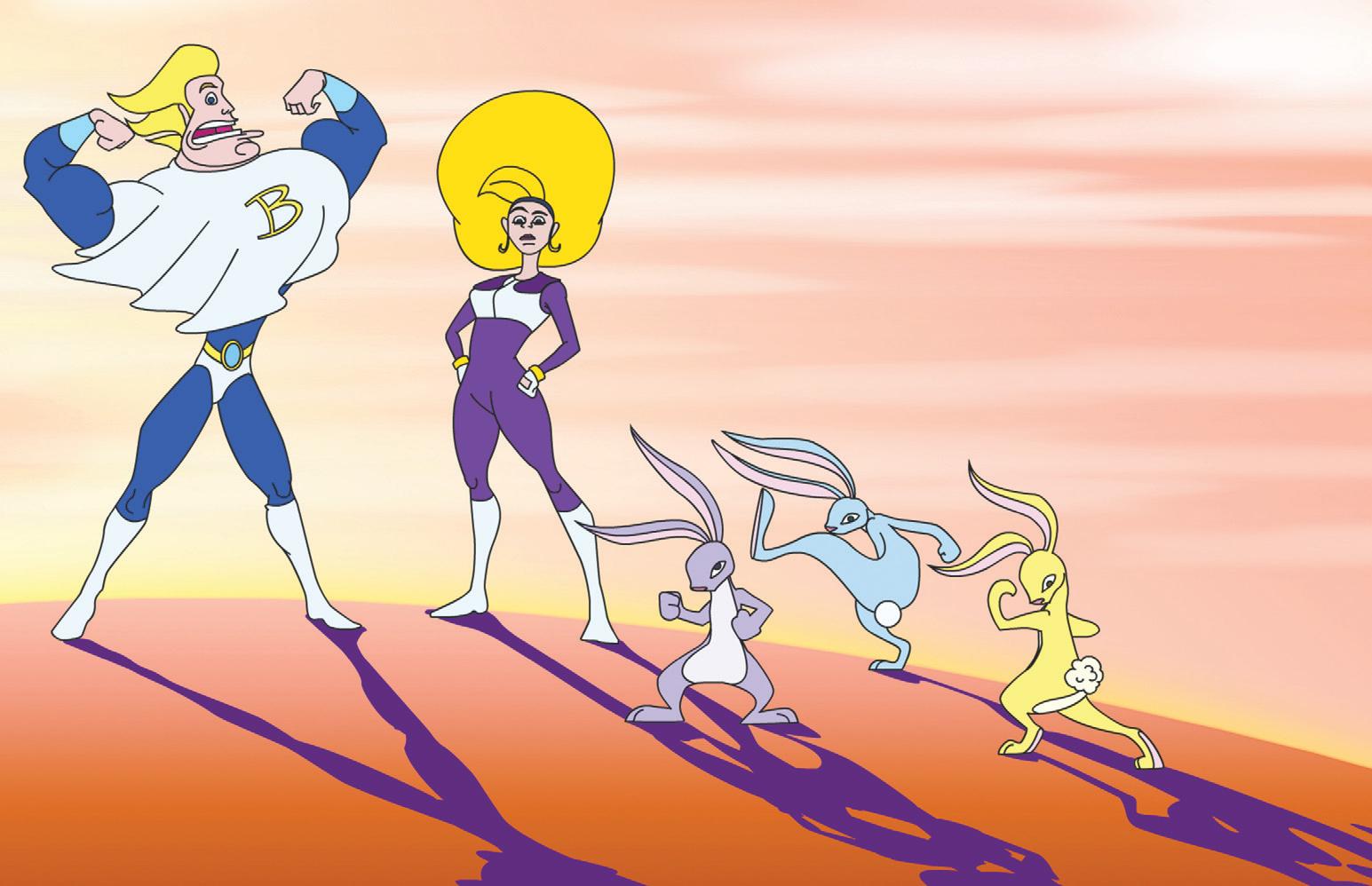 BY BRIDGET SPINKS
BY BRIDGET SPINKS
FIVE years ago, the three main characters of a short Western Australian award-winning animation were just names on a page: James Blonde, Goldie Rocks and the Three Hares.




up in a Catholic family and he says the faith “has always been there, [and it’s] been a natural part of my life; especially going to a youth group at a young age. It was more than just Mass on Sunday, it was a real culture, no doubt about it”.
He grew up playing music at his Midland Antioch youth group and also dabbled in acting. His music has been featured on Triple J’s Unearthed website and he’s been working in graphic design for several years.
But he realised early on, when others started enjoying his music, that his “gifts are actually something to give to others”.


One of the latest writing and directing duos to emerge in Perth, graphic designer Gaetan Raspanti and Jesse Emmerson, were working on another project when the idea for a super hero spoof struck them. Their idea remained dormant until 2008 when documentary maker and producer Bridget Curran noticed a competition for local Perth animators, the Nick Shorts initiative, organised and supported by Foxtel’s Nickelodeon channel, ScreenWest, Lotterywest and the Film & Television Institute WA.
Bridget had known Gaetan socially through Catholic circles for eight years and had always talked about making a film together. She’d asked him if he’d heard about the Nick Shorts initiative and he happened to be already thinking of doing something.
Bridget, Gaetan and Jesse met up soon afterwards and, as Bridget recalls, “the way it came together was a sign it was meant to be”.
“In Scripture, Jesus says ‘If you’ve been entrusted with a lot, a lot will be expected of you’. I look around in the contemporary media and see a lack of good story telling; so that’s where I see my calling ... I’ve got a lot of responsibility to use those talents. It’s a call. It’s never been easy. This [WASA award] is the first real piece of success for Jesse and me - after eight years of developing our creative chemistry,” he said.












The final product was a three-minute animation short called Hairoes, which won Best Short Animation at this year’s WA Screen Awards (WASAs) on 8 March.





For Bridget, it is creative producers “who are generous and resourceful and play a part in the story telling” that are her role models including William Castle, Roger Corman and Jim Henson. “Muppets creator Jim Henson pioneered a style that was meaningful and entertaining for adults and children alike. It had sweetness and heart to it, which is often lacking [in today’s mainstream film and TV],” she said.
Jesse, who co-directed and co-wrote the animation, said that sharing traditional values with Bridget and Gaetan is where he finds common ground, despite the fact that he “has never followed religion” and describes himself as an agnostic.




Their animation hit local West Australian cinema screens in Fremantle on 5 February at the Bohemia Outdoor Film Festival but it began screening Australia-wide on Foxtel’s Nickelodeon pay television channel on 26 January. It is also being repeated as an interstitial. “Hairoes is about the struggle between ‘hairoes’ and villains,” said Gaetan, co-writer and co-director, about the animation, which is set in Fringe City, a fantasy world where characters Blonde, Goldie and the three Hares must save the city from villains who seek to bring imbalance to the city by destroying the beauty of people’s hair and consequently their all-important self image.
“[The story-line] came out naturally. We developed characters and the story began to evolve around them. We found the characters were commenting on things in society that we weren’t expecting, such as vanity and corruption,” Gaetan said.
For Gaetan and Bridget, who see the world through the eyes of their Catholic faith, public story telling is a serious responsibility. Gaetan grew

“It’s no different to working with anyone else. [Bridget and Gaetan] are still openminded people but we share the same core values,” said Jesse, who has worked in web design, illustration and graphics.\“I’ve worked with Gaetan for a few years now, and I’ve always found him to be very calm and non-judgemental. He’s at peace with himself, I’ve noticed that; and I see it in Bridget as well.”
Bridget and Gaetan agree that they are influenced by “classic styles”. “As Catholic creatives, we still feel a connection to past
Page 4 31 March 2010, The Record THE PARISH 2010 GENUINE FAITH ENCOUNTERS VISITATIONS OF MARY GRACES OF EASTERN EUROPE * Now includes all taxes/ levies! from $ 6695 * Now includes all taxes/ levies! from $ 6895 More information at 1800 447 448 Flightworld Travel, Perth City: (08) 9322 2914 Contact HARVEST PILGRIMAGES to request your FREE 2010-2011 Brochure With Fr. Denis Nolan PP A 15 day pilgrimage Departing 23 Aug 2010 Prague • Czestochowa • Auschwitz • Wadowice • Krakow • Divine Mercy • Zakopane • Budapest • Ludbreg • Zagreb • Finish in Venice Optional 9 night Italy or 9 night Croatian extension With Fr. Joel Wallace A 20 day pilgrimage Departing 13 June 2010 Cairo • Mt Sinai • Red Sea • Aqaba • Petra • Dead Sea • Sea of Galilee • Nazareth • Mount Of Beatitudes • Bethlehem • Jerusalem • Also available as Holy Land only • A 13 day pilgrimage journey • From Amman to Jerusalem Departing: 20 June 2010 • From $5995 incl. Taxes / Levies * Now includes all taxes/ levies! from $ 7195 GRACES OF ITALY * Now includes all taxes/ levies! from $ 6695 With Fr Christopher Sarkis PP A 14 day pilgrimage Departing 29 June 2010 Padua • Florence • Assisi • Lanciano • San Giovanni Rotondo Optional 9 night France extension + OBERAMMERGAU OPTION Also Departing: 15 May • 3 Sep • 29 Sep • 19 Oct 2010 With Fr Anthony Denton A 15 day pilgrimage Departing 29 July 2010 Lisbon • Fatima Anniversary • Avila • Burgos • Garabandal • Loyola • Lourdes + OBERAMMERGAU OPTION Also Departing: 9 May • 9 Jun • 9 Sep • 9 Oct 2010 • Optional 9 night Holy Land or 9 night France extension Exodus Journey A LIFE OF PRAYER ... are you called to the Benedictine life of divine praise and Eucharistic prayer for the Church? Contact the: Rev Mother Cyril, OSB, Tyburn Priory, 325 Garfield Road, Riverstone, NSW 2765 www.tyburnconvent.org.uk TYBURN NUNS Mary MacKillop Canonisation CANONISATION HARVEST TRAVEL OFFICE Appointed by Sisters of St Joseph, Catholic Archdiocese of Sydney & Australian Catholic Bishops Conference Fully Escorted 5 & 7 day Rome Pilgrimages Wide choice of airlines, hotels & pilgrim houses Canonisation tickets guaranteed Featuring: • Custom designed Rome program with Sisters of St Joseph • Entry passes to all official ceremonies & events • Professional Escorts and guided sightseeing • Quality accommodation options Rome France Itinerary Featuring: Lourdes • Paris • Chartres • Paray Le Monial • Taize & more A RomeHoly Land Itinerary Featuring: Bethlehem • Sea of Galilee • Jerusalem • Nazareth • Mt Tabor & more It Rome Scotland Following Mary’s journey of 1874 through the MacKillop heartland of Scotland... Itin • P Rome Italy Itinerary Featuring: Venice • Padua • Cinque Terre • Florence • Assisi • Loreto & more CHOOSE FROM A RANGE OF PACKAGES & TOURS OFFICIAL CANONISATION TOUR OPERATOR CUSTOMISED GROUPS For special group enquiries from parishes, schools or movements contact us for an immediate quotation Reserve your place in history... Rome Direct 4 & 6 Night programmes Fully Inclusive Packages from $ 3190 Call Centre: 1300 GO ROME (1300 467 663) • www.canonisationtravel.com T HE PARISH. T HE NATION. T HE WORLD. T HE RECORD
Blonde, Goldie and the Three Hares from Fringe City, the characters and location for award-winning animation, Hairoes. Inset: The Hairoes title screen. IMAGES COURTESY BRIDGET CURRAN
faith, morals wins screen award
generations of storytellers who aspired to a moral Christian lifestyle”, Gaetan said.
This combination of purposefully selected media consumption and a desire to present something that’s deeper and more symbolic than the average is what brings together these award-winning creative contributors.
“There are a lot of themes in some shows that aren’t moral - that are vulgar and adult. For Jesse and me, when we write stories we don’t need to resort to that,” Gaetan says.
“We come from an old school Disney and Warner Brothers background; there was nothing gratuitous or graphic [in those animations], it was always exaggerated or ironic. I think nowadays there are watered-down uninspired shows or there are independent films which are so violent, and there’s nothing in between.”
The strength of a good motion picture lies in its story telling, Gaetan said. “If you can write an engaging and compelling story, you can do things cleverly and subtly without having to resort to using suggestive or profane content. I’ve always thought if you’re a great song writer you’ll make great songs. If you’re not, you’ll use something deliberate to shock people to get that attention. I don’t think they’re always aware of it though. But a great story teller holds themselves higher than that

because they already got attention from writing great stories,” he said.
For Bridget, who is also the author of The Miracles of Mary, a best-selling book about Marian apparitions around the world, prayer was a key element in the process of making the film.
“We had a lot of people praying for us, and we were praying a lot too,” she said. “I think we both pray a lot when we work with other people; and whenever we come across a hurdle, we take it to God. That’s how it develops. It’s a project that’s before God and for God and that’s how we approach it; with the best intentions.”
Gaetan too finds inspiration for his story telling from his faith.
“Our faith tells us the story; in the end, God wins. [It also tells us] that there is good and evil; there’s a definitive separation. Our stories reflect the reality of good and evil; the war and the struggle between these two where the good is always stronger,” he said.
“That’s the interesting thing about living in a secular worldthere’s always a contrast. If you’re in the world, I don’t know what the contrast would be. Your perspective is different being a Christian.”
As Gaetan, Jesse and Bridget continue to enter Hairoes into festivals, they’re aware that audiences around Australia and the world are meeting the Hairoes characters and situations. They say that they hope it finds an audience with both young and old alike and that the truth in the piece will resonate with its audience.
“In a spiritual way, we’re responsible now for how it influences people’s hearts,” Gaetan said.
For more info about the animation short go to: www.hairoes.com.







31 March 2010, The Record Page 5 THE PARISH Booksale Grand Opening Day, Saturday 10th April 2010 9:00am-2:00pm Continuing Mon - Fri 9-5 until 23 April 20 Hayman Rd, Bentley Opposite Curtin University (08) 6313 6288 General non-fiction, fiction, Christian books, children’s books plus CDs, DVDs and magazines Present this ad for $1 off if you spend under $50 $5 off if you spend over $50 Authorised by CSF Pty Limited ABN 30 006 169 286, Trustee of Catholic Super ABN 50 237 896 957. Information is about the Fund and is not intended as financial advice. It does not take into account specific needs, so members should consider their personal position, objectives and requirements before taking any action. Catholic Super and National Catholic Superannuation Fund are merging into one fund on March 31 2010. The merged fund will continue its dedication to the Australian Catholic community with strong investments and personal attentive service. The new fund will continue to be a low-fee, not-for-profit industry super fund, that does not pay commissions, invests responsibly and provides unbiased financial advice to its members. For more information about the merger of Catholic Super and National Catholic Superannuation Fund go to www.merger.ncsf.csf.com.au If you would prefer to telephone us call 1300 550 273 or 1300 655 002 Building the Future AS NE
Award winners: producer Bridget Curran, co-writers and co-directors Gaetan Raspanti and Jesse Emmerson share their award for Hairoes at the West Australian Screen Awards on 8 March. Gaetan and Jesse work on animation, below, left.
PHOTO MARIE NIRME
T HE PARISH. T HE NATION. T HE WORLD. T HE RECORD.
BY WARREN CARROLL
The Last Supper was held at a U-shaped table in the upper room of a house in Jerusalem which may have belonged to the parents of Mark the Evangelist. Peter and John had the places next to Jesus; this had given rise to a petty argument among the Twelve about precedence, which Jesus had terminated in unforgettable fashion by washing the feet of all of them beginning with Peter – and including Judas – as a sign of both the humility to which Christians are so urgently called, and of purification for the forthcoming Eucharist. The prescribed ritual of the paschal meal was in all probability followed without change; but during it, Jesus announced that one of those present would betray Him.
“Is it I, Lord?” each of the Twelve asked fearfully, their then still characteristic presumption for once in abeyance as they contemplated the magnitude of the crime and the certainty with which the Lord had predicted it. Judas joined in the question; to him alone Jesus replied, inaudibly to the others:
“You have said it.” Then John, leaning against Jesus with his head on His breast – as one historian later wrote, “the memory of that privilege was to sweeten his whole life” – at the prompting of Peter, asked Jesus who the traitor was, and to him alone Jesus identified Judas Iscariot. “What you are going to do, do quickly,” Jesus then told Judas, who went out at once; John’s Gospel adds starkly, “and it was night.”
Only the faithful remained. More than a year ago, at the synagogue in Capernaum, Jesus had scandalised many of His hearers and puzzled His Apostles by declaring His flesh to be real food, the Bread of Life, which men must eat to have divine life in them; it seems to have been then that Judas abandoned Him in spirit. Now that promise was to be fulfilled in the Christian feast of love, the Eucharist, in which Jesus Christ gives His own Body and Blood to His disciples to unite them more closely with Him. He took some of the remaining unleavened Passover bread, blessed and broke it, and said: “This is my body which is given for you. Do this in remembrance of me.”
Then He took the cup of wine and said: “This cup which is poured out for you is the new covenant in my blood. Do this, as often as you drink it, in remembrance of me.”
The meaning of the verb is not “signifies”, but is
Thus the central rite of Christianity was inaugurated. The words of institution, repeated in St Paul’s first letter to the Corinthians less than 25 years later, in the context of participation by all the faithful, make it very clear that Jesus intended not that the Apostles partake of His Body and Blood only on this unique occasion, but that they and their successors should continue to partake of It until the end of time. The repetition of the words of institution as the heart and centre of an ongoing rite (later to be called Mass) show also that Christ had given the Apostles the power to transform bread and wine into His real, actual Body and Blood by saying those words in union with the Church and for the purposes for which the Lord had first spoken them at the Last Supper, thereby re-enacting (in an unbloody manner) His sacrifice on Calvary. That is to say, Jesus, at the Last Supper, instituted and administered what came to be called the Sacrament of Holy Orders, empowering the Apostles as priests to make and celebrate the Eucharist as He had done. The sacrificial character of the rite is vividly evident in St
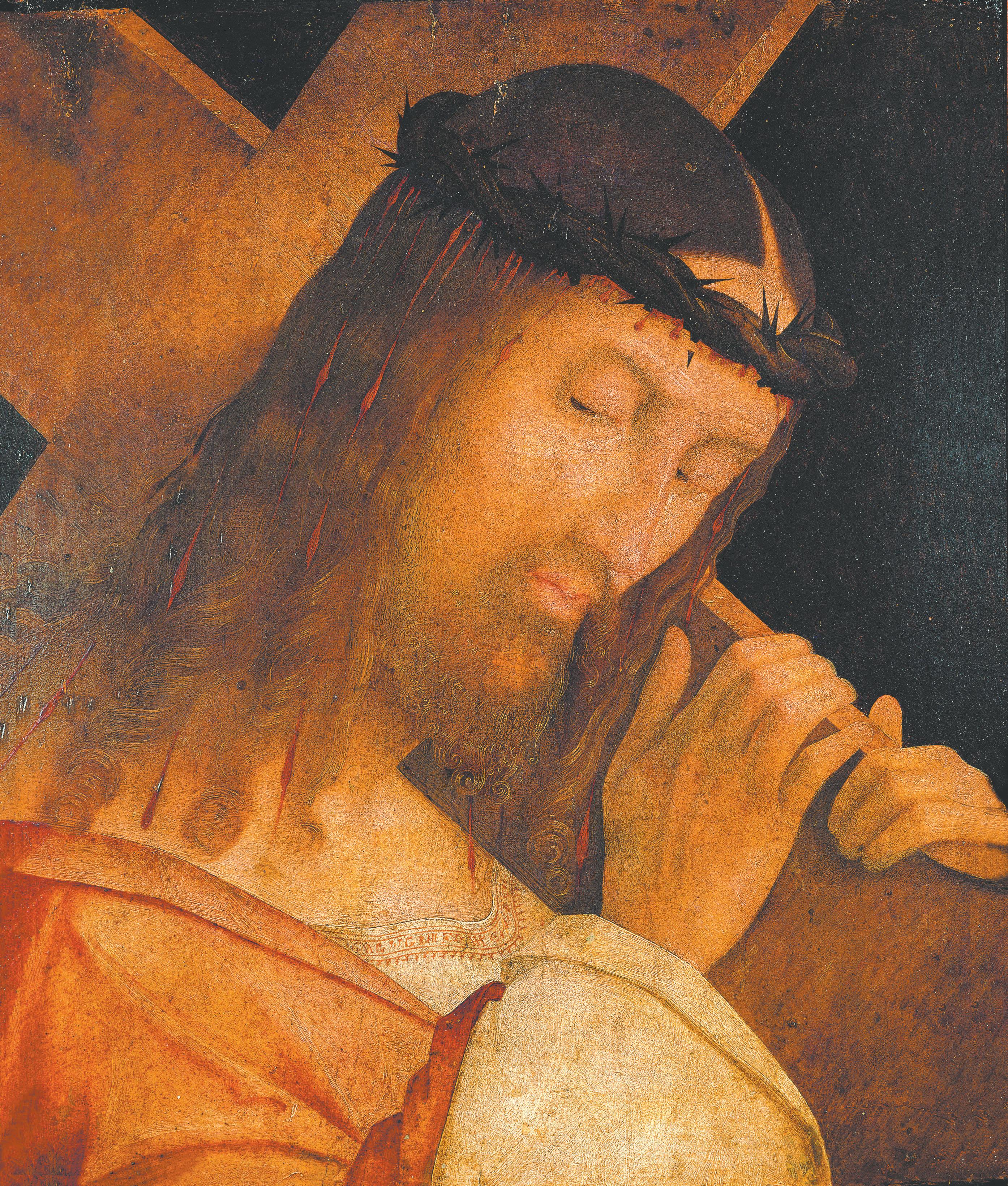
The Last 24 Hours 24 Hours
It is the only stor y that never really gets old in the telling and retelling.
WARREN CARROLL WARREN
t is the story that never gets old in the and retelling. But sometimes the sparse, unador ned and often disappointingly silent But sometimes the sparse, unadorned and often silent Gospels obscure the power and drama of the last day of the life of Jesus. obscure the power and drama of the last of the life of Jesus. Moder n historical research, however, can help uncover the real Christian code: Modern historical can uncover the real Christian code: God so loved us He decided to die for us Historian so us He to die us.
recounts the events and people in the last day of the life of Jesus recounts the events and people in the last of the life of Jesus ...
Paul’s words to the Corinthians:
“As often as you eat this bread and drink this cup, you proclaim the Lord’s death until He comes.”
In His discourses that followed, Jesus spoke over and over again of love. Though declaring that in the coming hour of apparent disaster to Him they would scatter and flee, that Peter would deny Him three times, that all would seem totally lost and hopeless, yet still He proclaimed that He loved them “to the end” and would keep them safe; that He had prayed to His Father that Peter’s faith would not fail under Satan’s temptation, and that after his fall Peter would recover and confirm his brethren; and that “in a little while” the Apostles
would see Jesus again.
This is my commandment, that you love one another as I have loved you. Greater love has no man than this, that a man lay down his life for his friends. You are my friends if you do what I command you. No longer do I call you servants, for the servant does not know what his master is doing; but I have called you friends, for all that I have heard from my Father I have made known to you. You did not choose me, but I chose you and appointed you that you should go and bear fruit and that your fruit should abide; so that whatever you ask the Father in my name, he may give it to you. This I command you, to love one another.
The discourse of the Lord recorded by St John, reaching if possible even greater heights than this, was climaxed by His last sublime prayer to the Father for the Apostles and their mission. Then He set out with them, through the night into which Judas had gone, for the Garden of Gethsemane.
Gnarled, ancient olive trees –some of which may have grown from the stumps of those there that night, later cut down by the Roman soldiers who destroyed Jerusalem – still cast their crooked shadows on Gethsemane’s stony soil. There is a formal garden around them now; it is most unlikely that there was anything of the sort then. Now
as then, beyond the immediate vicinity of the trees, the soil is hard, gritty, rock-studded, almost lifeless where not artificially watered. The site lies in the deep gully of the Kedron wadi, which is a “brook” or “torrent” only for a few weeks in the rainy season. The word Kedron comes from the Hebrew qadar, meaning dark or muddy. Though the paschal moon was full, down at the bottom of the canyon there were many areas of almost total darkness; the air was cold. Far above towered the wall and buildings of Jerusalem. They loomed even higher that night than they do today – the Holy City, become the domain of the killers of the Son of God. Taking Peter and James
Page 6 31 March 2010, The Record EASTER 2010
and John with Him – the witnesses of His Transfiguration and, with Andrew, the recipients of His final teaching about the end of the world – Jesus went off a little way from the others to pray. In a few minutes He had flung Himself face down on the harsh ground. The cruel rocks must have cut into His flesh like rasps.
Foreseeing in every detail what would be inflicted upon Him the next day, His human will recoiled, and He prayed to the Father to let this cup pass from Him – but only if it were the Father’s will. It was not the Father’s will. The Apostles, worn out with grief and apprehension, fell deeply asleep; they “could not watch for one hour” with their Lord. In some way it seemed that the Father Himself withdrew from the Son. All was abandonment, all was pain. Upon Jesus Christ face down upon the rock-laced grit of Gethsemane fell the appalling weight of innumerable human sins, the vivid awareness of the despair of lost souls, the future sufferings of the good, the endless war that would be waged against Him and His with undying ferocity through all the centuries of the Christian era. The historian can imagine the array of great malefactors and human monsters who gibbered at Him that night out of the years to come, after His blood had been poured out for the salvation of mankind: the Emperor Nero; the terrible Romula, harpy of the Great Persecution of the Christians which bears the name of the Emperor Diocletian; Attila the Hun; al-Hakim the mad Caliph, destroyer of the Holy Sepulchre; the Old Man of the Mountain, founder of the Assassins; Genghis Khan; Tlacaellel, architect of the Aztec system of mass human sacrifice; Caesar Borgia, the son of a Pope; the Anabaptists of Munster; the Marquis de Sade; Marat and Robespierre and Saint-Just of the French Revolution and the guillotine; Rasputin and Lenin and Stalin; Hitler and Heydrich and Adolf Eichmann. But no man can begin to imagine the additional weight of those secret and personal sins which history cannot chronicle. All of it fell on Him. The bloody sweat burst from His pores, and God sent the Angel of the Agony to strengthen Him.
From the black wadi came the scrape of many feet on the rocks, the clank and clash of arms, the gleam of lanterns. Against 11 exhausted, bewildered men armed with exactly two swords – and the Son of God – came marching a force of several hundred including temple guards armed with swords and clubs and led by members of the Sanhedrin, and more than 100 fully armed Roman soldiers commanded by no less a personage than the officer in charge of the Jerusalem garrison. Just ahead of them was Judas Iscariot. He went up to Jesus and kissed Him. It was the identifying signal to his captors.
Jesus defied the Sanhedrin’s men momentarily, as He had done before when physically threatened, by a look which caused them to fall to the ground, but only long enough to identify Himself to them. Then he submitted: “This is your hour, and the power of darkness.” Peter swung a sword wildly, striking off the ear of the high priest’s servant Malchus; Jesus healed Malchus by a touch. (History tells us no more of Malchus, but one wonders about him. Was he so blinded by hate that even the totally unmerited blessing of Jesus’ last healing miracle failed to impress him? Did he remember in the future, as he touched his restored ear, the Person who had healed it? Did he become, at length, a Christian? It is possible, perhaps even likely.)
The Apostles fled. Jesus was hustled out of the deep dark valley and up into the looming city to
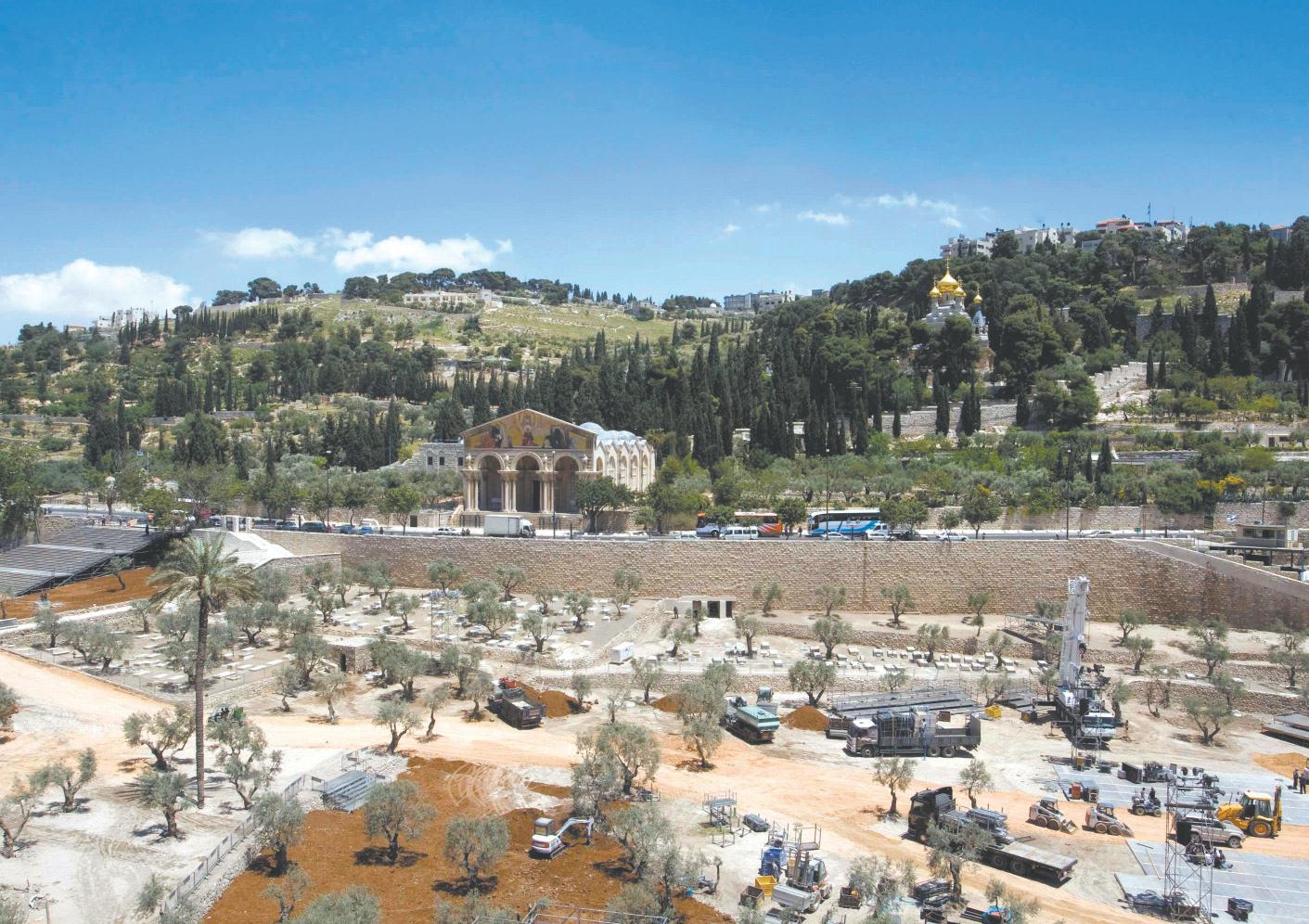
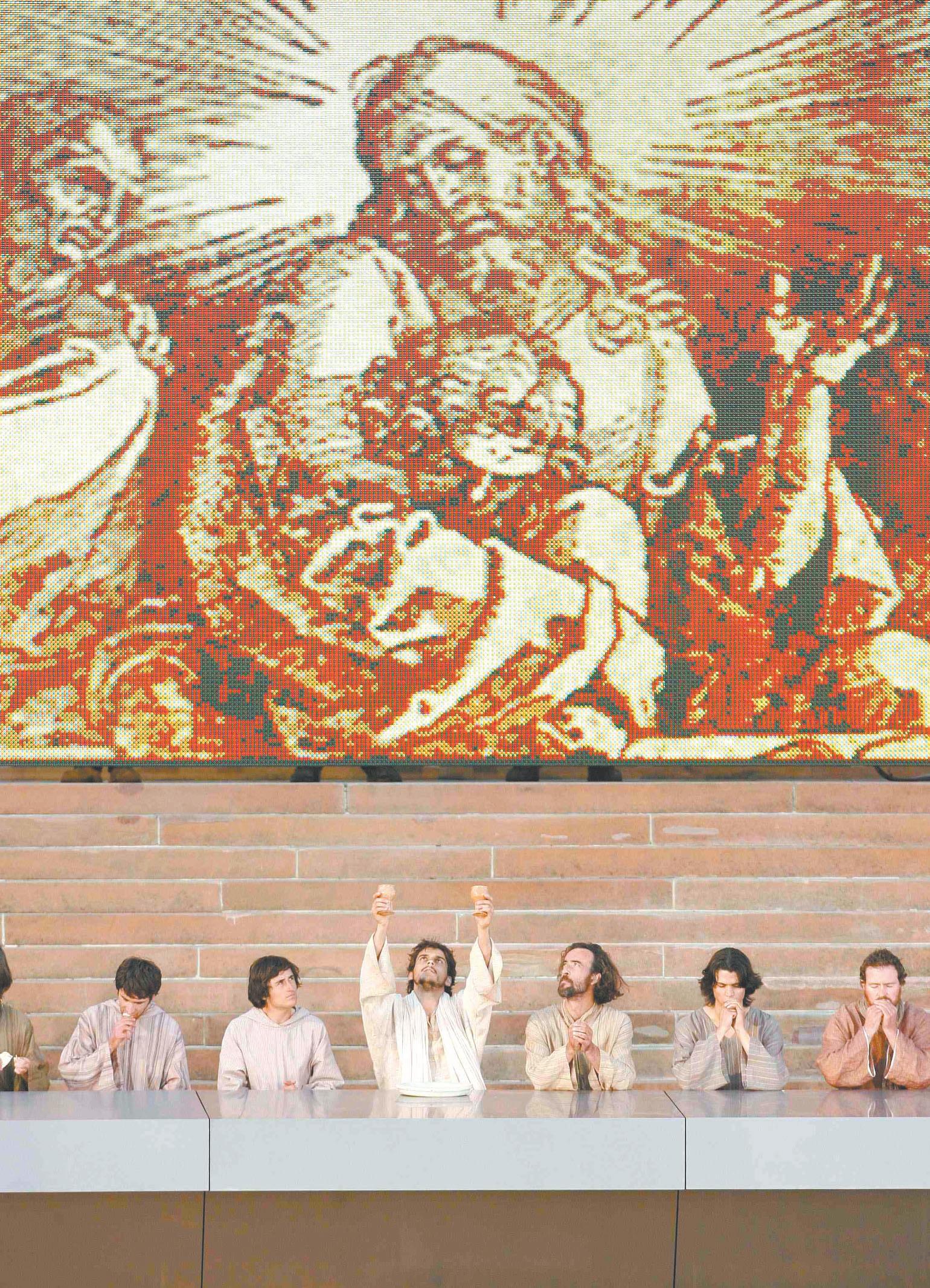
against agitators claiming to be the Messiah the Jews were expecting to bring them worldwide political power. To accuse Jesus to Pilate as such an agitator was a most promising course of action for the Sanhedrin. At the same time they must find at least some appearance of legal justification for what they were doing; as the world knows, the Pharisees set great store by appearances.
Consequently, in the trial before the Sanhedrin – probably held in the last hours of the night, around three or four o’clock in the morning – it was at first attempted to convict Jesus by perjured testimony. When this failed because the perjurers did not agree, Caiaphas himself took charge. Face to face with Jesus, he hurled the decisive question, intended to condemn the accused simultaneously in Jewish and Roman eyes, so put that Jesus, Who had been almost completely silent up to that point, could not fail to answer in loyalty to His Father.
“I adjure you by the living God, tell us if you are the Christ, the Son of God.”
Jesus answered: “I am; and you will see the Son of man seated at the right hand of Power, and coming with the clouds of heaven.”
As previously explained, despite some minor differences of detail, each of the four Gospels makes it unmistakably clear that Jesus was condemned to death by the supreme council of Judaism for claiming Divinity for Himself. He had said the same publicly, and been threatened with death for it, at the Feast of Tabernacles six months before and at the Feast of Dedication three months before. Now the Sanhedrin condemned Him with a unanimous shout, and the Temple guards and servants who had been holding Him in custody began to beat Him.
Meanwhile, Peter and another apostle, probably John, had managed to make their way into the courtyard of Caiaphas’ palatial residence where the Sanhedrin was meeting. They must have heard the shouts of condemnation and abuse, perhaps the sickening crack and thud of blows falling on Jesus’ body. Suspicious looks and questions had already been directed at Peter, a big man with a marked Galilean accent who found it hard to hide. Up to this point Peter may well have been expecting some new exertion of Christ’s miraculous powers. But as the curses and blows began falling unrestrained, he must have realised that no such powers would now be used. As at the time of Christ’s arrest when he had fled with the other Apostles, fear overwhelmed Peter; but from the enclosed courtyard it was not easy to flee. Then one of the men who had been with the arresting party in the Garden of Gethsemane, a relative of Malchus, suddenly realised that the burly man near the fire was the man who had swung the sword in defence of Jesus.
“Did I not see you in the garden with him?” he cried; and Peter was challenged on all sides as a follower of the condemned man. He was literally in the enemy’s camp, and it seemed that his Lord had surrendered. So he began to curse and swear that he did not even know Christ.
At that moment, in the halflight of earliest dawn, the long crow of a rooster rang out; and Christ appeared in the clutches of His captors and looked across the courtyard at Peter, who broke down in bitter weeping. As William Thomas Walsh memorably comments:
confront the High Priest who ruled in His Father’s name.
Annas and Caiaphas and their adherents in the Sanhedrin had long since resolved on Jesus’ death.
Years later, when men saw deep furrows on his cheeks, they said they had been worn by the tears he had never ceased to shed from that
Continued overleaf
31 March 2010, The Record Page 7
EASTER 2010
But for them to put a man to death required confirmation of the sentence by the Roman governor, the Procurator Pontius Pilate, a man who detested them – and,
indeed, all Jews and their religion. He was quite likely to refuse to endorse their death sentence on a purely religious charge. But Pilate was very much on his guard
The site of a papal Mass is prepared near the Garden of Gethsemane, in the background, in the Josafat Valley in Jerusalem in 2009. Pope Benedict XVI celebrated Mass in May during his visit to the Holy Land. Gethsemane is the site of the beginning of Christ’s passion, as He took upon himself all the sins of the world. PHOTO: CNS/RONEN ZVULUN, REUTERS
Actors re-enact the Last Supper on the steps of St Mary’s Cathedral in Sydney in 2008 during World Youth Day. On the final night of His life Christ established the Eucharist which Catholics and Orthodox Christians believe is Jesus Christ Himself and is His sacrifice on the Cross. He also gave some of His followers the power - and responsibility - to re-present His sacrifice to feed His sheep to the end of time. This is why priests and Bishops are so important to the Church.
PHOTO: CNS/DANIEL MUNOZ, REUTERS
Betrayal - and arrest

Continued from Page 7 moment. Those tears themselves were evidence that he had not lost the faith which Jesus Himself had promised at the supper to pray for. When divine grace had been withdrawn to let him be humbled for his rash presumption and to teach him many lessons for the future, he had yielded, under a sudden and irresistible temptation, to a fear that he might have to share the suffering accepted by his Lord. Cowardice made him lie and curse. And with those falsehoods and imprecations already smothered by sobs of remorse, he stumbled out of the court into the street and was swallowed up by the vast obscurity of that hellish night.
Where he went or what he did no one has ever known. For some 48 hours or more he disappears from the history of the Passion ... He did not go to the Mount of Golgotha with John, because he was ashamed to face the beautiful and stricken innocence of the Blessed Mother whose Son he had denied. But he loved Jesus, now in his remorse more than ever; and it is inconceivable that he could have torn himself away from the knowledge of what was happening to Him. The chances are that when the cold wind failed, and a brazen dawn brought back the parched breath of the Dead Sea and the desert to Jerusalem, Peter was somewhere at the edge of the crowd that saw the trial before Pilate in front of the Citadel Antonia.
As for Judas Iscariot, he felt remorse as terrible, but in the unfathomable mystery of iniquity, no genuine repentance and no hope for forgiveness. He hanged himself. His shattered body was buried close by Tophet, in the valley of Gehenna, where Satan’s own had made Israelite children into
burnt offerings in the Prophet Jeremiah’s time.
In his hall of judgement, the Praetorium, Pontius Pilate commenced the day’s business, as was customary among Romans and Greeks, at sunrise. It was, in all probability, 7 April 30 AD. There was nothing in the least distinguished about Pontius Pilate. He was a very ordinary Roman official – arrogant, narrow-minded, unimaginative, affecting a rough “practical” scepticism, yet still possessing both in himself and as a living tradition of government some of that sense of natural justice and law that had brought the Roman peace to the Western world. There is no doubt that, left to himself,
Pilate would have acquitted Jesus immediately and unreservedly. He recognised His innocence and the malice of His accusers. The Sanhedrin could put various kinds of pressure on him, and in the course of that murderous morning they tried them all; but none succeeded until the last one, because all that was good in Pontius Pilate revolted against what they wanted him to do. In one dialogue Jesus explicitly told His executioner that his was far from the greatest sin in this matter. Hoping to appeal to the pity of the crowd that was clamouring for Jesus’ death by giving Him a lesser though severe punishment, Pilate at length ordered Him scourged with some
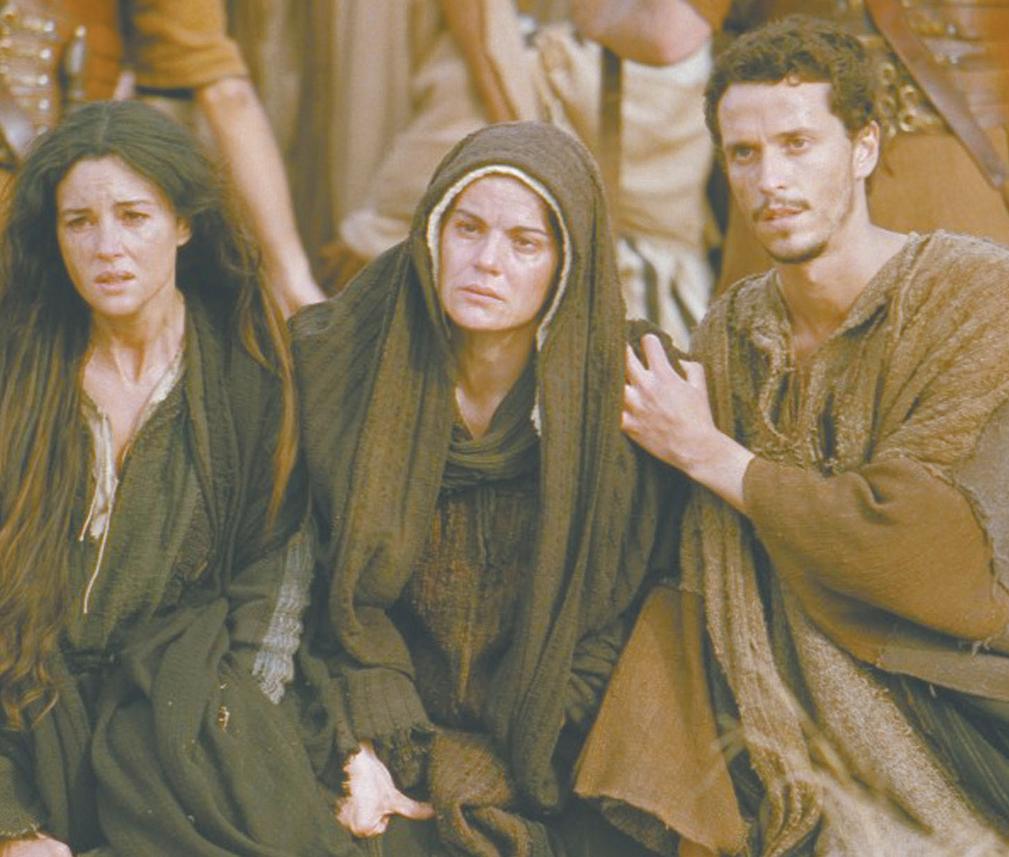
have no king but Caesar.” Then he handed him over to be crucified. Crucifixion was the most terrible death inflicted in the ancient world – the most painful and the most degrading. It was a “development” of impalement; there is reason to believe that it was originally invented by those masters of satanic cruelty, the Phoenicians and their descendants, the Carthaginians. Posts were set up at the place of execution and the victim, stripped naked, was forced to carry a hundred-pound beam to that place. There was a small space where a nail could easily be driven through a hollow just at the back of the heel of the hand, so that it would support much of the weight of a hanging body – but on its way through this space the nail pierced a major nerve, causing very intense pain. The victim was then “lifted up” and the beam attached as a crossbar to the post, into which his feet were nailed by a single nail driven either through the middle of both feet or through the heels. The weight of the lower body rested either on a wooden projection called a sedile or simply upon the ankle-bones above the nail in the feet. If there was a sedile the victim lived considerably longer, for the immediate cause of death in crucifixion was asphyxiation; after a time breathing was only possible by raising the body to take some of the weight off the arms, and this could be done for a longer time on an external support than on the ankle bones of nailed feet. In either case, each raising of the body produced great pain in the extremities, and each sagging of the body great pain in the chest. The torture was constant. Most crucified men took a full day to die. Death could be hastened by breaking their legs, causing almost immediate asphyxiation.
60 lashes of a bone-studded whip, after which his soldiers “crowned” Jesus with a crude cap of thorns pressed against His head by a circlet of rushes, inflicting approximately 20 bloody lacerations on His scalp. Pilate then showed Him to the crowd, saying: “Behold the man!” But there was no pity in the crowd that morning, at least in any who dared to speak. The spectacle of Jesus’ whip and thorn wounds may well have further convinced some who had acclaimed Him just five days before on Palm Sunday that He could not be the Messiah – because He was so obviously not the kind of Messiah they were expecting – and so must be an impostor deserving death.
Still Pilate held out against the Sanhedrin and the mob. He only gave way when their spokesmen finally invoked the prospect of the wrath of Tiberius – Tiberius the world’s ruler and victim, so terribly alone on Capri with his accumulated hatreds and desires for vengeance, Tiberius whom all the world feared because so much of the world had wronged him, Tiberius who so desperately needed the love of Christ Whom he was never to know on this earth, Who was killed in his name.
Pilate sought to release him, but the Jews cried out, “If you release this man, you are not Caesar’s friend; everyone who makes himself a king sets himself against Caesar.” When Pilate heard these words, he brought Jesus out and sat down on the judgement seat at a place called The Pavement, and in Hebrew, Gabbatha. Now it was the day of Preparation of the Passover; it was about the sixth hour [close to noon]. He said to the Jews, “Behold your king!” They cried out. “Away with him, away with him, crucify him!” Pilate said to them, “Shall I crucify your king?” The chief priest answered, “We
The Holy Shroud of Turin gives clear proof that all these tortures were endured by Jesus Christ – and He had no sedile. In 1968, for the first time, the skeleton of a man who had been crucified, with the nails still in his feet (see separate story in this edition on medical theories regarding Christ’s death by Bridget Spinks), was found just outside Jerusalem, confirming in many respects the data from the Shroud on the manner of crucifixion and the place of the wounds inflicted.
Upon The Pavement, outside
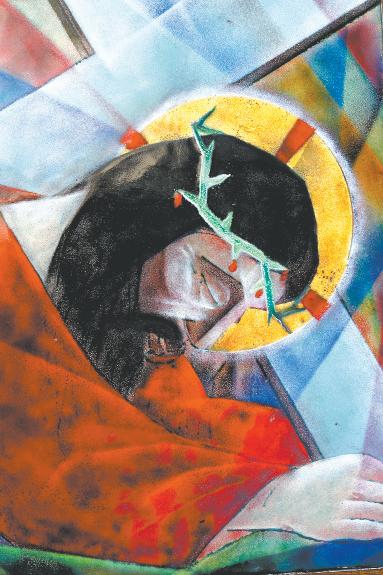
Page 8 31 March 2010, The Record
THE LAST 24 HOURS
the Antonia fortress, Jesus, bloody from the scourging, His face ravaged by blows from a two-inch cudgel which had broken His nose and battered His eyebrows and cheeks, staggered under the weight of the beam of His Cross as He set out surrounded by a troop of Roman soldiers under a centurion, and followed by the bloodthirsty crowd. The destination was Golgotha, the Place of the Skull, just outside the city walls, perhaps a thousand yards from the Antonia. The Via Dolorosa led downward
PHOTO: CNS FROM ICON PRODUCTIONS
Monica Bellucci stars as Mary Magdalene, Maia Morgenstern as Mary and Hristo Jivkov as John in a scene from the movie The Passion of the Christ. The film, produced and directed by Mel Gibson, is a vivid depiction of the last hours of the life of Jesus and regarded as an accurate portrayal of the events and nature of Christ’s sufferings.
The Caravaggio painting depicting the arrest of Christ being shown this year at the National Gallery of Art in Washington. The 16th century masterpiece was authenticated after being discovered at a Jesuit house in Dublin in the early 1990s.
PHOTO: CNS FROM US NATIONAL GALLERY OF ART
into the Tyropoeon valley, then upwards out of it; toward the end, therefore, Jesus had to climb uphill under the weight of the beam bearing down upon shoulders that had been scourged after having first sweated blood. He could not do it; He fell. We know from the Shroud as well as from the Gospels that He fell, adding wounds on His knees to all His other wounds.
The procession would now have been approaching a gate in the walls; the centurion in charge saw a man named Simon, originally from the African city of Cyrene, coming in from work in the fields. The centurion requisitioned Simon to carry Jesus’ cross. “Take up your cross and follow me!” Jesus had told His disciples; and here was a man to do exactly that, though under duress. We are not told that a single word was exchanged between Jesus and Simon of Cyrene; but later Scriptural references make it almost certain that Simon of Cyrene and his sons, most fittingly, became Christians.
At Golgotha the nails were driven through flesh into the wood of the crosses, and the condemned men were raised up in agony for their long dying. Jesus said: “Father, forgive them, for they know not what they do.” On each side of Him hung a robber. One reviled Him; the other adored Him. Jesus canonised the penitent thief from the Cross: “Today you will be with me in Paradise.” But there were others, dearest of all to Him, who yet adored, whom He could see even with His dimming human vision at the foot of the Cross: His mother, who now reappears in the gospels for the first time since Cana and Nazareth; her sister-in-law Mary; Mary Magdalen; and St John, the only one of the Twelve to stand by him at the end. “Woman, behold thy son,” said Jesus to Mary of John and all the faithful to the end of time; and “Behold thy Mother” to John and all the faithful to the end of time, of the Blessed Virgin Mary. Then there burst from Him the terrible cry: Eloi, Eloi, lama sabachthani – “My God, my God, why hast thou forsaken me?” GK Chesterton says of this moment:
There were solitudes beyond where none shall follow. There were secrets in the inmost and invisible part of that drama that have no symbol in speech; or in any severance of a man from men. Nor is it easy for any words less stark and single-minded than those of the naked narrative even to hint at the horror or exaltation that lifted itself above the hill. Endless expositions have not come to the end of it, or even to the beginning. And if there be any sound that can produce a silence, we may surely be silent about the end and the extremity; when a cry was driven out of that darkness in words dreadfully distinct and dreadfully unintelligible, which man shall never understand in all the eternity they have purchased from him; and for one annihilating instant an abyss that is not for our thoughts had opened even in the unity of the absolute; and God had been forsaken of God.
He thirsted, and was given vinegar to drink. The sky had grown strangely dark. Jesus’ work was done. He, God and man, had suffered the utmost agony possible to man, both mental and physical; from the beginning of His prayer in Gethsemane to the consummation on Golgotha, He had borne and expiated the sins of men and reconciled the human race with its Creator. Theologians may debate how and why; but the fact is that this is what He did. Isaiah had predicted it in his 53rd chapter, and David in the 22nd Psalm; He Himself, in the course of His teaching and ministry, had
THE LAST 24 HOURS
A Crown for a King
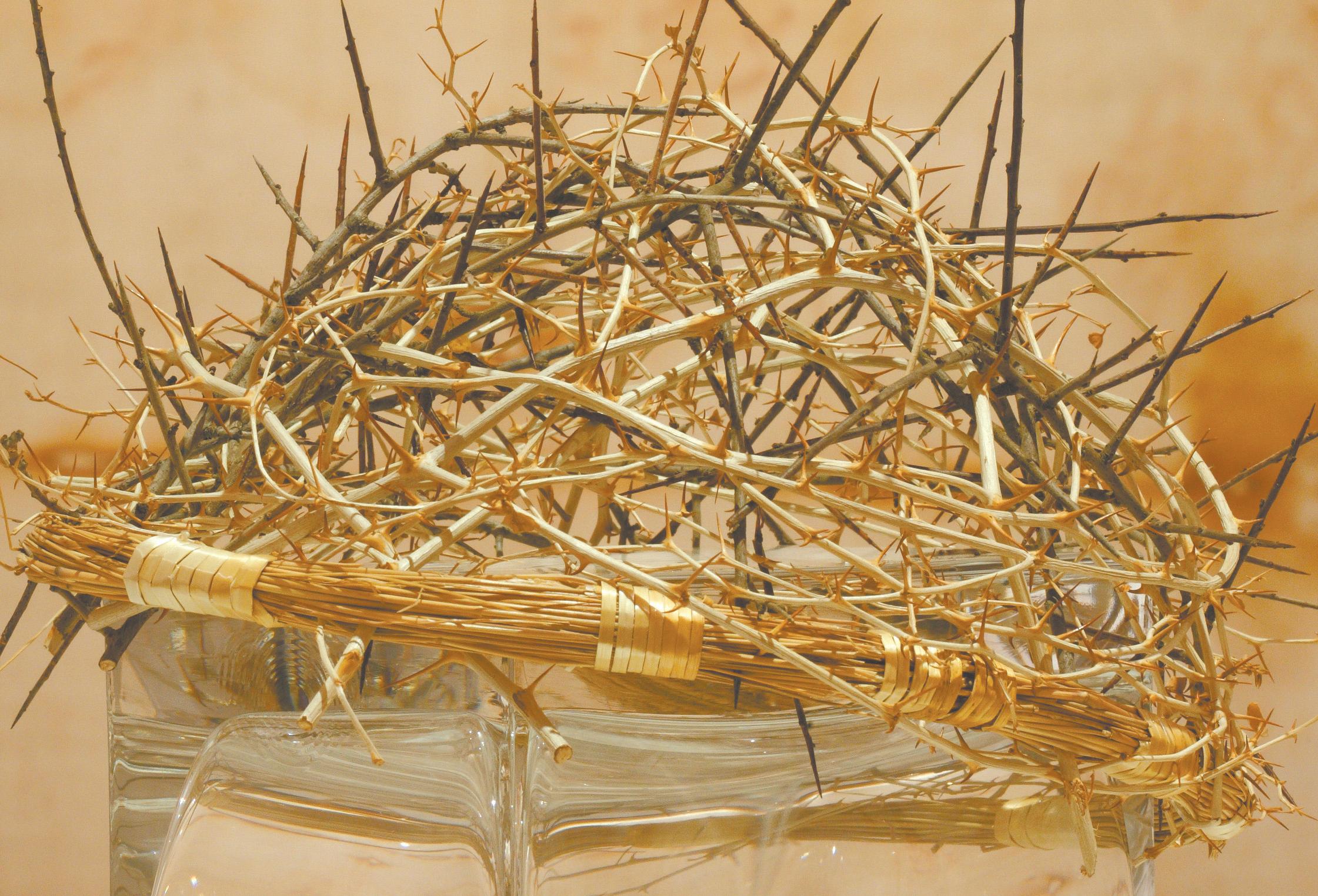
predicted and explained it. The Gospels and the Shroud tell us how much He suffered; the Gospels and the Shroud then provide the final confirmation of his Godhead through their evidence for His Resurrection.
“It is finished … Father, into thy hands I commend my spirit.”
The ground shivered. Across the valley and beyond the wall from Golgotha, the lintel of the great double-winged entrance to the sanctuary or “Holy Place” of the Temple, where stood the altar for incense, the table for the Showbread, and the sevenbranched gold candelabrum (the menorah) facing the Holy of Holies, cracked down the middle. The huge, ornate curtain hanging from it – a Babylonian carpet in white, purple, blue and red, 82 feet by 24 – tore in two. A brass gate of the inner Temple building that normally required 20 men to move it, swung open by itself. The
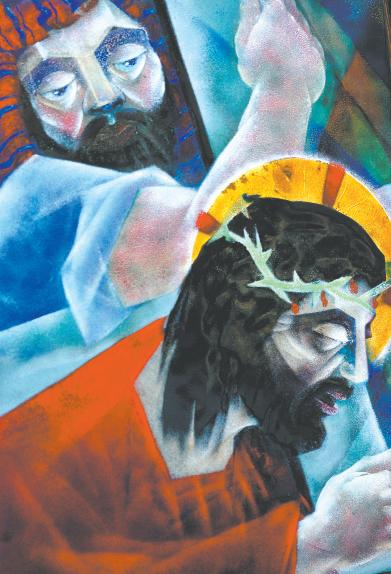
central light of the great candelabrum went out. Much of this information comes to us from Jewish, not Christian, sources (Josephus and the Talmud), substantially and very significantly supplementing the brief reference to the rending of the Temple curtain in the Gospels. The Talmud even dates the strange opening of the brass gate specifically to the year 30AD.
Jesus was dead. The mocking crowd had fallen silent at the frightening phenomena in the sky and earth. They began to fear that a great sin had been committed, and “returned home beating their breasts.” And the Roman centurion who had ordered the nails driven into the flesh of Jesus and had commanded His raising up on the Cross, exclaimed: “Truly, this was the Son of God!”
Perhaps emboldened by the natural prodigies and this reaction among the people, the two members of the Sanhedrin who are known to have been supporters of Jesus – Joseph of Arimathea and Nicodemus – now stepped forward to see that at least He received an honourable burial. Joseph had a new tomb, never yet used, just 22 yards from Golgotha. He obtained Pilate’s permission to bury Christ there. Pilate was surprised that Jesus had died so soon; but His death was soon confirmed. One of the troop of Roman soldiers assigned the grisly duty of carrying out crucifixions, ordered to break the legs of the men crucified that day so that they would die more quickly and therefore might be taken down from their crosses before sunset when Passover began, found Jesus apparently already dead. Consequently, the soldier did not break His legs; but he made sure of His death by a lance thrust straight into His heart. It left a gaping wound the size of a man’s hand. We may be sure that the Blessed Virgin Mary and the other women who had been at the foot of the Cross never
left His Body for a moment until
It was laid in the tomb. It was carried the short distance from Golgotha to the tomb probably by five bearers, two at the ends of the terrible crossbeam to which His hands were still nailed, two supporting the middle of His body with a sheet, and the fifth supporting His right heel. In the tomb His hands were at last withdrawn from the beam, the blood-soaked carrying sheet was discarded, and His body was laid on a linen shroud that Joseph of Arimathea had just bought. His hands and feet were bound (a necessity because the tetanic contraction of muscles in those who died by crucifixion would otherwise have caused them to return to the position of the torture) and His chin was supported by small linen bands.
The Sabbath was very close now. There was not time to wash or to properly anoint the Body. The hundred pounds of spices that Nicodemus had bought were quickly packed tight around It to help preserve and freshen It despite the five great wounds and the many open lacerations from which some of His Precious Blood still seeped. The sun had set; in a moment the appearance of the first three stars would signal the beginning of the Passover Sabbath. The massive blocking stone was rolled in front of the entrance to the tomb. Under the Law, nothing more could be done until Sunday.
Wherever Jesus went that night, it was beyond the bounds of history and of the world. The early Christians firmly believed that as one dead, He had joined all the other dead, from Adam to Gilgamesh to the Good Thief, in the place of waiting, the Limbo of Hell, and that night brought forth the just to be with Him. His recorded words from the Cross to the Good Thief provide strong evidence that something of this kind did happen. Meanwhile, His murderers were uneasy. Whatever
their public demeanour, they had hardly gone unaffected by what had happened in their precious Temple that afternoon. Very likely they began to remember, and at last to understand more truly, His words: “Destroy this Temple, and in three days I will raise it up.” They dared not risk any possibility that the people might come

to believe that such a thing had occurred. How easy it would be for His disciples to steal His body and proclaim a resurrection, especially since, in the tomb owned by Joseph of Arimathea, It was now directly under their control! So on the Sabbath day the spokesman of the Sanhedrin went to Pilate and obtained a guard of Roman soldiers for the tomb. They went with this guard to the tomb and sealed it, in such a way that any opening would leave clear marks. Did they look inside before the sealing? Almost certainly they did, though we have no specific testimony to the fact, because they would have felt it necessary to determine that no body-stealing had yet taken place. But there lay
Continued on Vista 4
Page 9 31 March 2010, The Record
An image of the Stations of the Cross at the Pope John Paul II Cultural Centre in Washington shows the fifth station, “Jesus is helped by Simon.”
The station images were created by artist Virgil Cantini.PHOTO: CNS/BOB ROLLER
An example of a crown of thorns is seen in an exhibit on the Shroud of Turin at Regina Apostolorum University in Rome on 21 January. The thorns were pressed deep into the skull as part of Christ’s physical torture but he was also draped in a purple cloth, spat on, struck with a wooden cudgel and mocked by Roman soldiers. The result, as intended, was suffering at every leverl - psychological, emotional, physical and spiritual. Christians believe that even as the soldiers mocked and struck him, Christ was loving them. He made them.
PHOTOS: TOP: CNS/PAUL HARING; RIGHT: CNS/BOB ROLLER
THE EVENTS OF
THE LAST 24 HOURS
GRAPHICS BY RIAN ’BOX’ GALLIOTT, TEXT BY STAFF OF THE RECORD
Early evening
Thursday, 6 April 30AD*
Jesus celebrates the paschal meal, known as the Last Supper, with His 12 disciples in the upper room of an inn in Jerusalem. Peter and John hold the places next to Him. At this meal, Jesus institutes the Eucharist and the Sacrament of Holy Orders (priesthood). He washes the feet of his disciples, thereby terminating an argument about precedence and as a sign of the humility to which all Christians are called. He reveals He will be betrayed, but privately identifies His betrayer only to John. Judas Iscariot leaves to carry out the betrayal, arranged with the Pharisees the previous evening. Jesus delivers His final discourse on love and then prays to His Father for them and the mission He is leaving them.
* See note on date below
GETHSEMANE THE AGONY BEGINS
Mid-evening (approx 8-9pm)
Thursday, 6 April 30AD
Jesus and His disciples go to the Garden of Gethsemane in the deep gully of the Kedron wadi to pray.
In Gethsemane, He leaves the disciples and takes Peter, James and John with Him a little further but they fall asleep as He prays.
Knowing what will happen to Him, He begins to suffer. One sign of His distress is the sweating of blood.
This period of prayer with His Father is described as the Agony in the Garden.
It is at this point that many Christians believe He begins to experience the horror of every individual sin ever to be committed and which will be committed in human history as He takes the place of sinful humans as a sacrifice to His Father in order to reconcile human beings with God.
BETRAYAL AND ARREST
Late evening (midnight)
Thursday, 6 April 30AD
Judas guides an estimated several hundred men including temple guards led by members of Judaism’s highest authority, the Sanhedrin, and approx 100 fully armed Roman Soldiers to Gethsemane to identify Jesus. His signal for identification of the man to arrest is the one he kisses in a traditional sign of peace.
Jesus defies their authority briefly with a look that causes many to fall to the ground in mysterious circumstances which suggests a momentary revelation of His power.
Peter cuts off the ear of Malchus with a sword, which Jesus heals instantly.
The disciples flee. Jesus is arrested, bound and hustled out of the Kedron valley for trial before Judaism’s supreme authority, the Sanhedrin.
Many people only have a vague idea of the timeline and the personalities central to the last hours of Christ, from His suffering in the garden of Gethsemane up until His crucifixion at the hands of the Roman soldiers, probably of the Sixth Legion, stationed in Jerusalem under the administration of Pontius Pilate, Equestrian procurator of the Roman Province of Judea from AD26-36.
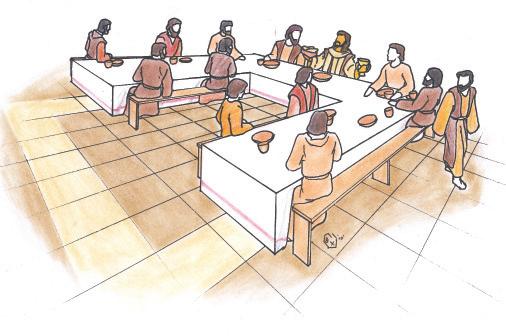
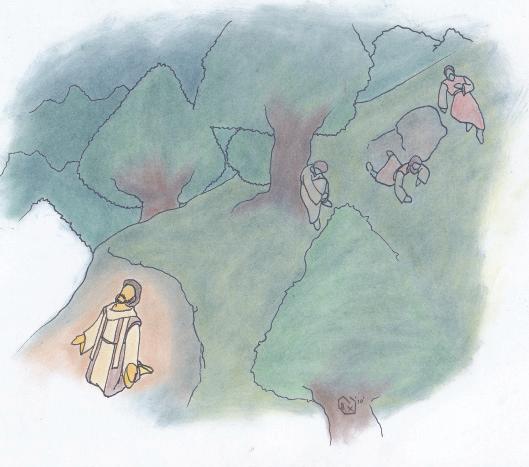
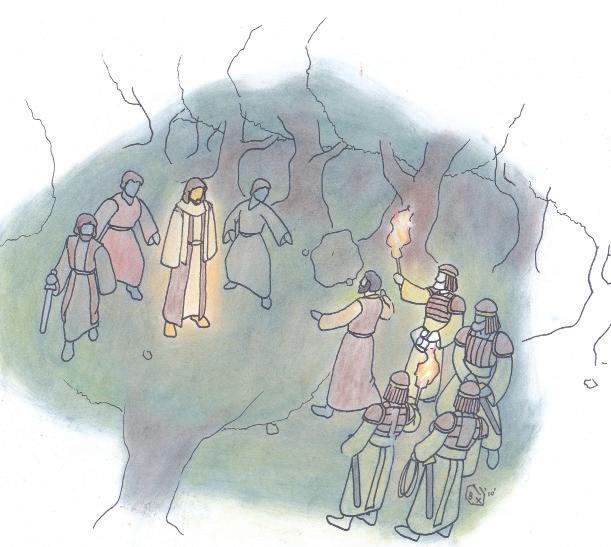
A KANGAROO
COURT CHRIST BEFORE THE SANHEDRIN
Early morning (probably 3-4am)
Friday, 7 April 30AD
Jesus is put on trial before the Sanhedrin in the palatial residence of Caiaphas, the High Priest, for blasphemy by claiming to be the Son of God and therefore the Messiah prophesied by the Scriptures. The trial is predetermined. Sanhedrin leaders Annas and Caiaphas have previously decided Jesus must die but require confirmation of the sentence by the Roman governor, Procurator Pontius Pilate.
The first attempt to convict Jesus using perjury fails when witness accounts contradict each other.
Caiaphas takes charge and asks the question he knows Jesus will not refuse to answer - whether He is the Son of the living God. Christ answers in the affirmative and is condemned to death for claiming Divinity for Himself. Peter and another disciple, possibly John, are outside in the courtyard; Peter is questioned and denies Christ, confirming Christ’s own prophecy of the previous evening that Peter would deny him. Judas Iscariot commits suicide by hanging himself.
CHRIST BEFORE PONTIUS PILATE
Early morning (sunrise)
Friday, 7 April 30AD
Jesus is brought before Pontius Pilate in the hall of judgement, the Praetorium. Pilate recognises Jesus is innocent and easily discerns the malevolent intentions of His accusers. He attempts to satisfy the crowd calling for his execution by giving Him a lesser punishment. Jesus is taken away to be whipped.
THE SCOURGING AND CROWNING WITH THORNS
Morning Friday, 7 April 30AD
Christ is tied into position to be whipped, also known as being scourged. In a brutal process He is subjected to probably 60 lashes with a bone-studded whip. At each whipping, the bone fragments cut deep into His body including His back, sides, arms and legs. Jesus begins to lose blood from the severity of His wounds. The soldiers also strike Him in the face with a wooden cudgel, breaking His nose, and subjecting him to intimidation and ridicule at every level. They fashion a ‘Crown of thorns’ and force it onto His head, causing approximately 20 lacerations. By the end of the process He has suffered injuries of the kind one would see in a car crash victim and is beginning to go into shock.
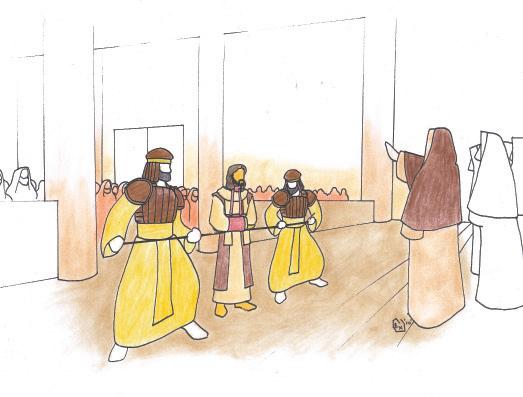
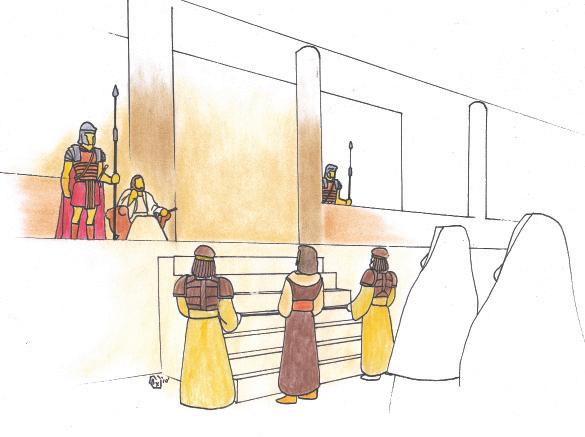

PILATE PRESENTS CHRIST TO THE CROWD
Morning Friday, 7 April 30AD
Pilate presents the scourged figure of Christ to the crowd but, agitated by Sanhedrin agents, they demand the execution go ahead. Pilate still tries to have Jesus released by offering them a choice between executing Christ or a known murderer, Barrabbas. His wife has warned him she dreamed of Jesus the night before and urges him not to give in to the crowd. He holds out but succumbs when their leaders threaten to tell the Emperor Tiberius in Rome that Pilate has saved an individual threatening Caesar’s imperial authority by claiming to be a rival king. Pilate hands Christ over to Roman soldiers to be crucified.
CARRYING OF THE CROSS
Morning
Friday, 7 April 30AD
Departing from the area known as ‘The Pavement’ outside the Antonia Fortress in Jerusalem where Roman troops are garrisoned, Jesus is forced to carry the crossbeam of the crucifix estimated to be 45kg in weight through the streets of Jerusalem along the Via Dolorosathe Way of Sorrows. Surrounded by Roman troops led by a Centurion and followed by the crowd, he must carry it approx 1km down into the Tyopoeon valley, then up out of it to the place of execution. He falls several times. The Centurion requisitions Simon, originally form the African city of Cyrene, to help carry the Cross. He is the only other person to have ever carried the Cross.
THE CRUCIFIXION
Midday
Friday, 7 April 30AD
Christ arrives at the place of execution outside the city walls known as Golgotha, the Place of the Skull. He is nailed to the Cross between two thieves. One reviles Him and the other adores Him. Jesus promises the Good Thief he will join him in paradise the same day.
THE DEATH
Approximately 3pm
Friday, 7 April 30AD
As Christ is dying on the Cross, His Mother Mary, her sister-in-law Mary, Mary Magdalen and St John have remained with Him to the end. Before He dies, He canonises the first official saint of the Church, known as the Repentant Thief. He gives his Mother to St John and St John to His Mother, always viewed by the Church as an action giving the human race and the Church to the special care and intercession of His Mother. Blood loss has caused extreme thirst. He is given a sponge soaked in vinegar to drink. Close to the end, He cries out asking His Father why He has abandoned His Son, a statement which has riveted theologians ever since. Then He gives His Spirit to His Father and dies at approximately 3pm. At the moment of death, the great curtain separating the Holy of Holies in the Temple in Jerusalem is torn from top to bottom and numerous individuals who had previously died are seen by many alive and walking about.

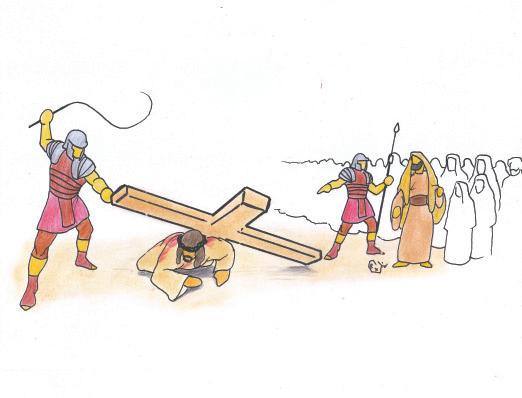


Dates and years? There have been numerous debates over the correct dates of the events of Christ’s last days. The first three Gospels describe the Last Supper as a Passover meal, seeming to contradict St John, who says Jesus died on the day before the Passover, the “preparation day,” in which case the paschal meal would normally have been eaten on Friday evening rather than Thursday evening. The Passover was always celebrated on the 15th day of the Jewish month of Nisan: all four gospels are unanimous Christ died on a Friday. If he died on the passover it must have been in a year when the 15th of Nisan fell on a Friday. Two separate, detailed and highly accurate caculations have been made of the days of the week on which the 14th and 15th Nisan fell during these years. Both agree the 15th Nisan did not fall on a Friday in any year from 28-33AD. Since almost all commentators conclude the Crucifixion happened in one of those 6 years this strongly suggests John must be right. SOURCE: THE FOUNDING OF CHRISTENDOM, WARREN H.
VISTA 2 VISTA 3 31 March 2010, The Record Easter 2010
LAST
SUPPER - BEGINNING OF THE END
1 4 7 2 5 8 3 6 9 10
CARROLL
Crucifixion: the worst way to die at every
AT 33 years of age, Jesus was in the prime of His life. After three years of public ministry, He was unjustly convicted and crucified. But how did the Son of God suffer a human death? How would our Redeemer have felt emotionally as He died for humanity?
BRIDGET SPINKS talks to a West Australian surgeon and an Opus Dei priest about how Christ might have suffered physically and psychologically during His final hours.
Surgeon Prof Kingsley Faulkner emphasises from the outset that his opinion is conjectural. There’s not enough evidence in the modern era to prove with any scientific certainty the actual medical cause of Christ’s death, he says. But we can make an assessment as to how He might have died based on how other people deal with extreme suffering and injury.
“We’re relying on case reports and they’re not even recent case reports. I want to emphasise that my analysis is conjectural [because] it’s based on how other people’s physiology and psychology is challenged by extreme physical circumstances, but not crucifixion,” Prof Faulkner, who is also a Director of Clinical Teaching in the Private Hospital Sector at the University of Notre Dame
Continued from Vista 1
Jesus, silent, motionless, untouched, in His Shroud. It seemed death ruled Him, as it had ruled every man since Adam.
The Sabbath ended, the initial Passover celebration completed, and the second night fell upon the Holy Sepulchre. It was Sunday, 9 April 30AD, the 16th day of the month Nisan.
Guard detachments of Roman soldiers, such as the one on duty at Jesus’ tomb, usually consisted of 16 men, with four on watch at all times. Sleeping on watch was punishable by death. These were still the same kind of soldiers who had conquered most of the known world for Rome. To imagine all 16 of them asleep, on duty only 600 yards from Pilate’s praetorium, simply beggars the imagination – however dull and unimportant their curious duty that night may have initially seemed to them.
At the Transfiguration on Mount Tabor, Peter and James and John had seen Jesus radiating light from His body and clothes, in a manner outside all earthly experience. The evidence of the Holy Shroud of Turin, analysed scientifically by micro-densitometer, VP-8 image analyser, spectroscope and other modern scientific instruments and methods, suggests that the extraordinary impressions upon its cloth could only have been formed by

Australia’s School of Medicine in Fremantle, says.
In the Gospels of Matthew, Mark, Luke and John, little is stated about how heavy the Cross was, nor the distance Christ walked to Golgotha. Matthew, Mark and Luke all mention that Christ was assisted to carry the Cross. “And as they led him away, they seized one Simon of Cyrene who was coming in from the country, and laid on him the cross, to carry it behind Jesus,” Luke 23:26.*
But the Gospel of John does not mention Simon of Cyrene: “So they took Jesus, and He went out, bearing His own cross, to the place called the place of the skull, which is in Hebrew Golgotha” John 19: 7.
For Fr Flader, Director of the Catholic Adult Education Centre of the Archdiocese of Sydney, the carrying of the cross “impresses me greatly”.
“Because whether He’s been given part of it or all of it, He makes His way out of Jerusalem ... and He falls. We don’t know whether He tripped, was pushed or whether it was exhaustion. But He was exhausted and every fibre of His being is saying ‘I can’t, I’m exhausted’. Nonetheless, He takes up His cross again, staggers forward, and falls a second time. But His will overcomes His weakness of the flesh, and again He rises. He goes forward and falls a third time, but again He gets up. In so doing, He teaches us that when we are carrying a burden of whatever sort, when we feel tired and think we cannot go on, we can look at Christ’s example and find the strength to continue forward,” Fr Flader says.
The Gospel of Mark recounts the prelude to Christ’s death as follows, “So, Pilate wishing to sat-
isfy the crowd, released for them Barabbas; and having scourged Jesus, he delivered Him to be crucified” (Mark 15:15).
After this scourging, the soldiers placed a crown of thorns on Him, mocked Him both in word and in deed: by clothing Him in a purple cloak (cf Mark 15:16-21).
Professor Faulkner says the scourging would have been not only “physically terribly painful” but “psychologically stressful” too, as the method “was vicious enough to lacerate and break the skin and expose raw flesh which would bleed and seep serum”.
While Christ could have suffered “significant haemorrhage (blood loss)” from the crown of thorns, which was “designed to be painful,” Prof Faulkner suggests that He would have suffered “more blood loss from the scourging from the flagrum which was designed to

a brief scorching flash at a level of energy approaching the thermonuclear.
“Let there be light …”
Christ had slain death, the last enemy. He had come back from the fathomless abyss from which no man had ever emerged.
The Roman guard lay huddled,
prostrate. An angel wreathed in lightning rolled back the stone at the entrance of the tomb. Before such power, the shields and swords that had won the Western world were toys. When at last the soldiers could struggle to their feet, they fled.
Earliest dawn glimmered in the
inflict injury and expose underlying tissue”.
“In turn, this [haemorrhaging] could lead to a degree of orthostatic hypotension (where you fall over when you try to stand up) and even hypovolaemic shock (lack of blood circulation),” Prof Faulkner says.
It is possibly due to the extensive blood loss caused during the scourging that Christ fell while journeying to Calvary.
And yet, Jesus went to His death “freely out of love to fulfill that decree of the Trinity [and] in this way to reveal the depth of God’s love,” Fr Flader says, quoting John 10:17-18. There, Christ says, “For this reason the Father loves me, because I lay down my life, that I may take it again. No-one takes it from me, but I lay it down of my own accord. I have power to lay it down, and I have power to take it again; this charge I have received from my Father’”.
But how would Christ have felt mentally, emotionally and psychologically in His final hours of human life?
What degree of moral suffering would He have borne?
Fr Flader says that Christ would have endured “great moral suffering” for several reasons: including that “Jesus, who was absolutely sinless, pure and holy takes upon Himself not only original sin but all the sins of humankind”.
For it says in Isaiah 53:4-5, “Surely He has borne our griefs and carried our sorrows; yet we esteemed Him stricken, smitten by God, and afflicted. But He was wounded for our transgressions, He was bruised for our iniquities; upon Him was the whole chastisement that made us whole, and with His stripes we are healed.
“He is in a sense overburdened by the weight of all those sins as he comes before the Father whom He loved so dearly and so He became sin for us (cf 2 Cor 5:21),” Fr Flader says.
Extra pain would have been caused in knowing that “for many of those sins that we commit, we wouldn’t be sorry,” he says.
ran on ahead, to come back just as quickly as she could to all that remained of her beloved Master. It was Mary Magdalen.
But one was not there at all: Blessed Virgin Mary, the mother of God. As His mother, Mary loved Jesus as no other human being has ever loved or could ever love Him. Is it conceivable that she would have left others to attend to Him in the tomb if, like them, she believed Him to still be there? Here is the best evidence for the truth of the ancient Christian tradition that it was to His mother that Christ first appeared after His Resurrection. The Blessed Virgin Mary did not go to the tomb on Easter morning because she knew that her Son had already left it.
eastern sky beyond the pinnacle of the Temple. The women who had been at the foot of the Cross were hastening to complete the work upon the Body of their Lord that the coming of the Sabbath Friday evening had interrupted – the washing and anointing. Some went to buy spices and perfumes. One
Reaching the tomb first, Mary Magdalen found it empty. She ran back to tell Peter and John. They ran at top speed to the tomb, John outrunning Peter because he was much younger and lighter; but at the tomb John waited for Peter, so that they went inside together. They saw, lying on the rock within, the linen bands which had been round Jesus’ wrists, ankles and chin, and one burial cloth, which may well have been the Shroud itself, “rolled up in a place by itself.” No grave robber or body stealers would have done this; they would have taken the Body as it was, in the shroud. John tells us that after beholding the burial linens
A woman prays on the Stone of Anointing after entering the Church of the Holy Sepulchre for Palm Sunday Mass in Jerusalem’s Old City. Christians believe, not without foundation, that this is the stone on which Christ was laid after his body was taken down from the Cross. It still inspires pilgrims after 2000 years.
PHOTO: CNS/DARREN WHITESIDE, REUTERS
Actor Jim Caviezel portrays Jesus on the cross in a scene from the 2004 movie The Passion of the Christ. The scenes of Christ’s suffering are widely regarded as being extremely realistic, unlike many depictions of the Crucifixion which show Christ as largely untouched.
Reaching out to touch... Faith Vista 4 31 March 2010, The Record
PHOTO: CNS C FROM ICON
THE LAST 24 HOURS
level - physical, emotional, psychological
“We would excuse ourselves, we would say ‘I was tired, I was under stress. [He knew] that we wouldn’t take responsibility for them and that would have caused him extra suffering,” Fr Flader says.
In a letter to Timothy (1 Tim 2: 3-6) Paul says “... and it is acceptable in the sight of God our Saviour, who desires all men to be saved and to come to the knowledge of the truth. For there is one God, and there is one mediator between God and men, the man Christ Jesus, who gave Himself as a ransom for all, the testimony to which was borne at the proper time.”
Thus, Fr Flader says, Christ died that all might be saved, but He knew that in spite of his suffering and death many would not be saved. “That sorrow of knowing souls would not be saved in the end, would have been an additional suffering,” Fr Flader says.
In John’s account (John 19:36), it is reported that the scriptures that said ‘Not a bone of Him shall be broken’ were fulfilled.
So how was Christ nailed to the cross without experiencing any broken bones?
“[The nails] were probably driven between the bones of the wrists and the feet. They could have severely injured the median nerve causing intense neuralgic pain. If it hit the median nerve, the hand would be partially paralysed,” Prof Faulkner says.
But Christ’s moral suffering on the cross would have also been intensified, Fr Flader says, by the sins of those closest to him, beginning with the apostles, one of whom betrayed him, another of whom denied him and those who ran away (Mark 14: 32-72).
“And then down the ages, the sins of all of us who are striving to be better people, better Catholics. That hurts Him more because he loves us; He has chosen us. That has to hurt Him more than the sins of someone who doesn’t have the graces He’s given us,” Fr Flader said.
While Christ hung on the cross, the Gospel of Matthew reports that after they had crucified Him, the
he “saw and believed”. In light of all that we now know about the Holy Shroud, it seems very likely that John saw immediately the unique picture of Jesus on the cloth which, along with its position, convinced him that a supernatural event had taken place, that Jesus Christ had risen from the dead as He had predicted, though the Apostles –even John – had not until then understood just what His prediction really meant.
Jesus had risen in His glorified body, which could pass through walls, move from place to place without traversing space as we know it, and was not always immediately recognisable even to those who had known Him best. During that Easter day, He appeared to the ineffably loving Mary Magdalen, to the other women who came a little later to the empty tomb, to Peter alone, to two disciples on the road to Emmaus, and to all the 11 Apostles except Thomas, gathered in the Cenacle. He took care to impress upon them that He was really, physically present – that it was in His own body, flesh and blood that He stood before them, while also emphasising that He would soon ascend to His Father after a last brief sojourn with them in Galilee.
Also that morning, Annas and Caiaphas took the testimony of the bewildered guards, and the Sanhedrin (or its leaders) met
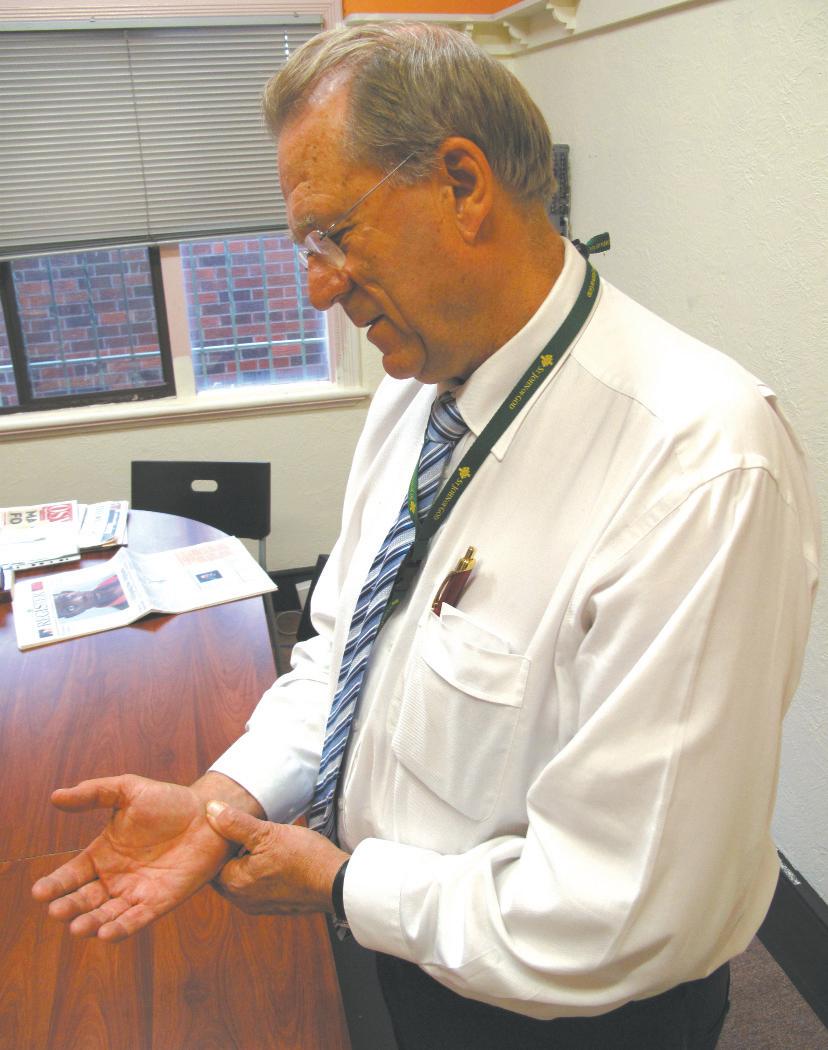
chief priests, scribes and elders, mocked Christ. And, as He hung there, His mother Mary stood by the Cross (John 19:25) and “knowing that His mother was suffering so intensely would have increased His suffering even more,” Fr Flader said.
“Her suffering was greater because her soul was so sensitive; she was all pure. There was no selflove, no coarseness in Mary’s soul. And that made her sensitive to Jesus’ suffering; that, added to the fact that Jesus was not guilty, He was innocent,” he said. “Now from
to consider what to do. Reason gave them only two choices: to believe the story of the guards, or to disbelieve it. If they believed the guards, they had no rational alternative to admitting that Jesus had risen from the dead by Divine power, thereby giving final proof of the truth of His claim to be God, for making which they had killed Him. If they disbelieved the guards, then their obvious course was to denounce them to Pilate and arrest the Apostles for stealing Jesus’ body either with the complicity of the guards or because of their negligence.
Otherwise, the very claim of a resurrection, which the leaders of the Sanhedrin had posted the guard to prevent, could be very convincingly made. But instead of doing this, Annas and Caiaphas and their immediate associates bribed the guards to say that Jesus’ disciples had stolen His body while they slept – and promised to protect them from Pilate. The absurdity of such an explanation for what had happened is so patent – St Augustine put it best: “How is this? Do you call upon witnesses who were asleep?” that speaks volumes that this was the best story these highly intelligent men could devise. Evidently, it was the only story that offered any hope of convincing at least some of the people of a natural explanation for what had happened to the
Prof Faulkner’s conjectural assessment, would have been multifactorial, including hypovolaemia (low blood volume), hypoxia (low oxygen levels) and metabolic disturbances (alteration to normal metabolism of nutrients and fluids).
“Traditionally, asphyxia (absence of oxygen) following exhaustion with increasing difficulty to breathe was thought to be the main cause ... The final cause of death would have been a cardiac arrhythmia (irregular heart beat) and then asystole (cardiac arrest) secondary to the hypoxic, hypovolaemic and metabolic disturbances, which gradually developed,” Prof Faulkner said.
In John’s account of the crucifixion, he notes that when the soldiers came to take down the men who had been crucified, “when they came to Jesus and saw that He was already dead, they did not break His legs. But one of the soldiers pierced His side with a spear, and at once there came out blood and water” (John 19: 33-34).
The effusion of the blood and water possibly from the lung (pleural effusion) and heart (pericardial effusion) due to earlier possible “sequestration of fluid from intravascular compartment into the interstitial tissues and potential compartments” has great symbolic value.
eternity to redeem us by the death of the Son of God on the cross,” Fr Flader says.
“He chose the crucifixion of the Son of God made man as the way of redeeming us and he shows us in that the depth of His love. ‘No greater love does a man have than that he lay down his life for his friend.’ And He was laying down his life for his enemies in a sense, because we were all estranged from Him by sin.”
To contemplate the pierced side of Christ is to contemplate that God Is Love, Pope Benedict XVI said in his 2005 encyclical Deus Caritas Est (God is Love): “His death on the Cross is the culmination of that turning of God against Himself in which He gives him-
True love
the sixth hour there was darkness over all the land until the ninth hour. And about the ninth hour, Jesus cried with a loud voice, Eli, Eli, lama sabachthani? that is, ‘My God, my God, why have you forsaken me?’ Matthew 27: 45-46.
Some bystanders wondered whether Elijah would come to save Christ, while another filled a sponge with vinegar and offered it to Christ to drink.
“And Jesus cried again with a loud voice and yielded up His spirit,” Matthew 27:50.
The cause of Christ’s death, in
body of Jesus, while preventing any close questioning of the guards that could cause them to tell more people what they had actually seen – a telling that the leaders of the Sanhedrin had evidently concluded was, and would be, very persuasive. The whole proceeding casts grave doubt on the sincerity of Annas and Caiaphas at least. It strongly suggests that they knew the guards were telling the truth and that Jesus had risen from the dead by His power, yet still maintained their adamant refusal to believe in Him.
Among the Apostles, only Thomas had not yet seen the Risen Jesus. Thomas was another Peter, or even more so, in his stubbornly literal mind and outlook. He insisted that he would never believe what the others were telling him about the Resurrection unless and until he not only saw but touched the flesh of the Risen Lord and the marks of His wounds. Such truculent scepticism would have seriously endangered many souls; therefore Christ said to him, after offering the proof he demanded: “blessed are those who have not seen and yet believe!” But Thomas had been made for a mission, and for that mission the very qualities he here displayed in an unlovely manner would, when perfected by grace, be indispensable.
The 40 days from Resurrection to Ascension were, above all, the
Fr Flader says that the Fathers of the Church “draw the analogy that just as Eve, the spouse of Adam, was formed from his side while he slept, so the Church, the spouse of Christ, was formed from Christ’s side as He [metaphorically] slept on the cross”.
“On the other hand, they saw the sacraments: the blood representing the Eucharist, and the water representing Baptism,” Fr Flader said.
But remind me again, why did Christ die on the cross?
“After the original sin of our first parents, God promised Adam and Eve a redeemer (cf Genesis 3:15) ... now we come to the fullness of time in which our redemption is to be carried out. God in His love and mercy has determined from all
preparation for the Church and its universal mission. Before the followers of Christ could understand the Church and its mission, they must know its Founder in His fullness, understand the Redemption He had wrought, humble themselves before the Victor over death.
All this they achieved, as their preaching on and soon after Pentecost, reported in the Book of Acts, makes very clear. Every one of the Eleven had fallen in the hour of trial, except John, and even he had fled from Gethsemane; but now they were restored, Peter above all as he made his humble threefold confession of love at the Mensa Christi rock on the beautiful, quiet little bay of Tabgha of the Sea of Galilee. Atoning for his threefold denial of Christ in the courtyard of the high priest, Peter’s primacy was restored, his commission as head of the Church given by Christ, to continue with God’s guarantee of unfailing constancy until the hour of his martyrdom.
“Feed my lambs …. Feed my lambs …. Follow me.”
Somewhere during this period,the Risen Jesus appeared to no less than 500 of His followers gathered together. It could have been in Galilee, where His mission had begun, or in Jerusalem where it ended. Wherever it was, the 500 were made sharers in the cosmic mission, which, Jesus most explicitly proclaimed, to the Eleven on a
“He who does not love does not know God; for God is love. In this the love of God was made manifest among us, that God sent His only Son into the world, so that we might live through Him. In this is love, not that we loved God but that He loved us and sent His Son to be the expiation for our sins. Beloved, if God so loved us, we also ought to love one another. No man has ever seen God; if we love one another, God abides in us and His love is perfected in us.”
1 JOHN 4:813
“This is love in its most radical form.” POPE BENEDICT XVI
self in order to raise man up and save him. This is love in its most radical form. By contemplating the pierced side of Christ (cf 19:37), we can understand the starting-point of this Encyclical Letter: “God is love” (1 Jn 4:8). It is there that this truth can be contemplated. It is from there that our definition of love must begin. In this contemplation, the Christian discovers the path along which his life and love must move”.
mountain in Galilee:
All authority in heaven and on earth has been given to me. Go therefore and make disciples of all nations, baptising them in the name of the Father and of the Son and of the Holy Spirit, teaching them to observe all that I have commanded you; and lo, I am with you always, to the close of the age.
For 2,000 years the Word had been confined to the Chosen People. Now it was to go out to all the world.
In His last hour on earth with the Apostles, in response to a thoughtless and backsliding question about when He was going to “restore the kingdom to Israel,” Jesus repeated the same universal theme:
You shall receive power when the Holy Spirit has come upon you, and you shall be my witnesses in Jerusalem and in all Judea and Samaria and to the ends of the earth.
Then He took them out from Jerusalem and up to the Mount of Olives, looking from its highest point across on the one hand to the Holy City where He had died and conquered death forever, and on the other hand to Bethany where He had loved and been loved so much. He raised His arms in blessing, was lifted up into a cloud, and returned to His Father.
UNDA’s Professor Kingsley Faulkner, Director of Clinical Teaching at UNDA’s School of Medicine, deomstrates in The Record’s offices the most likely point for a nail to be driven through the wrist during crucifixion so that it would support the weight of the body.
Page 9 31 March 2010, The Record
PHOTO: PETER ROSENGREN
THE LAST 24 HOURS
This victory is not imaginary

My Dear People
ARCHBISHOP BARRY HICKEY Archbishop of Perth
Recalling moments of grace around JPII’s death
The perennial message of Easter is one of hope, but a hope that is set against the background of suffering and death and, inevitably, of evil.
Easter was the first feast of the Church because it was the most significant event for new Christians, followed closely by the coming of the Holy Spirit at Pentecost.
For those who lived at the time of Jesus, especially for the Apostles, His resurrection meant that Jesus had not really left them but had returned to live among them in a new way. His appearances assured them that His resurrection was real, not imaginary.
It also became clear to them that Jesus was transformed by the resurrection, into a new way of living, unrestricted by the limitations of time or space. Jesus could remain with His people for all time and be a constant reminder of the new life promised to us when this life is over.
Beyond all this, the resurrection of Jesus signalled a triumph over evil. Jesus saw that the world was in the grip of Satan and His sacrifice broke that hold.
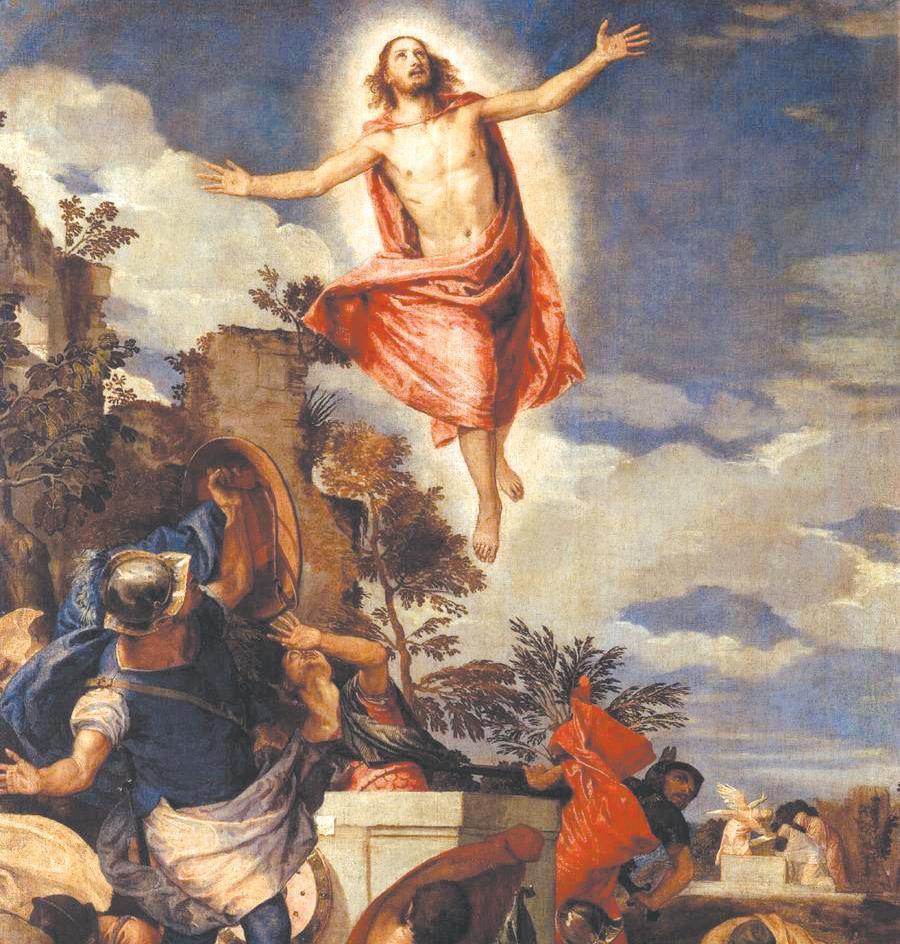
This Easter, let us reflect on these three truths:
1 Jesus’ resurrection was not imaginary. He truly rose from the dead to a new life. We can therefore be absolutely sure of His living presence among us now. We speak to Him in prayer. He is with us as our constant companion. It is the Risen Lord whom we receive in Holy Communion as food for our daily journey.
2 Jesus’ resurrection reminds us of the ultimate goal of our journey, the Kingdom of Heaven. It is the end of our Baptismal commitment, to be one with Christ our Saviour in the fullness of His Kingdom. At Easter, we think of Jesus’ death and recall that we too must follow Him into death. Part of the joy of Easter is knowing that death gives way to eternal life.
3 Jesus’ resurrection is the defeat of Satan and the overthrow of the kingdom of evil.
At first this seems to be clearly untrue because evil still flourishes. There is so much evil in the world, violence, suffering, exploitation, sexual abuse, pornography, killing of the unborn, to mention some of today’s evils. How can we say Jesus’ death was a victory over the forces of evil?
We understand this in the context of free will. No-one can be forced to be good. It must be a choice.
Now that the forces of evil which led to Jesus’ death have been defeated, the triumph of evil is not inevitable. The Risen Lord gives us in His grace the power to rise above evil and to live a life of integrity and wholeness despite the evil around us that would bring us down.
Evil cannot overcome us now that Jesus is risen. He is our strength.
We still need to carry our cross daily to follow Him, but the cross can be a source of great strength and grace if we remain faithful to Christ who has already carried His cross to the limit for our salvation. There is much to rejoice in at this time of Easter. Let its good news fill us with joy and may it radiate outwards to others.
A Happy and Holy Easter to you all.
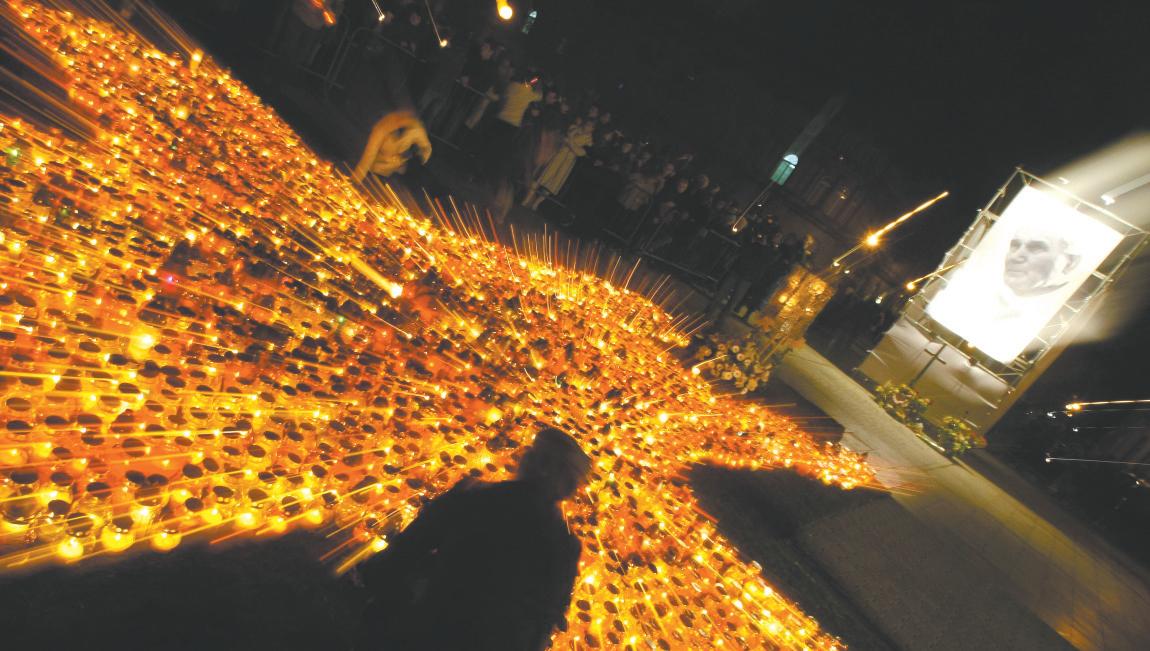 BY JOHN T HAVIS Catholic News Service
BY JOHN T HAVIS Catholic News Service
VATICAN CITY - The Church is preparing to mark the fifth anniversary of the death of Pope John Paul II, an event that stirred intense emotion, expressions of faith and worldwide attention in April 2005.
At the Vatican, a Mass celebrated by Pope Benedict XVI will offer an occasion to look back and remember a pontificate that has not, and could not, be forgotten.
Pope John Paul shaped the policies and charted the directions for the Church in the 21st century, and his German successor has very much stuck to the same course.
The next big event commemorating Pope John Paul is expected to be his beatification, which could occur as early as next fall.
But in hundreds of other ways, from the documents he wrote to the vocations he inspired, his legacy lives on daily in his Church.
Pope Benedict references Pope John Paul often, as when he recently praised the Sahel Foundation established by the late Pope or quoted amply from one of his letters to young people in his own message for World Youth Day.
From the beginning, Pope Benedict made clear that he would carry out his papal ministry under the banner of continuity.
“We feel reverberating within our hearts his repeated invitations to advance without fear on the path of fidelity to the Gospel, to be heralds and witnesses of Christ in the third millennium,” Pope Benedict said in 2006.
Pope Benedict will celebrate a memorial Mass for Pope John Paul on 29 March, as the 2 April anniversary of his death falls on Good Friday. The liturgy is in St Peter’s Basilica, not the much larger square outside, and there’s been no Vatican effort to turn this into a mega-event for the mass media.
That doesn’t mean the huge crowds and the global interest of five years ago have been forgotten, however.
Pope John Paul’s final days are recalled by many as a time of special grace. The late Pope made his final public appearance on 30 March 2005, when he was recovering from a tracheotomy to relieve breathing problems.
He blessed pilgrims in St Peter’s Square and tried in vain to speak to them. After a few minutes, aides wheeled him from view and drew

the curtains of his apartment window for the last time.
Those who witnessed the scene sensed it was a farewell, and an incredibly poignant one. The Vatican later described it as “the last public ‘station’ of his painful Via Crucis.”
The next day, the Pope suffered septic shock and heart failure.
He was treated immediately with antibiotics and respiratory equipment, but his condition deteriorated. Vatican officials later said it was the Pope himself who decided to be treated at the Vatican instead of being taken to the hospital again.
An Italian Cardinal who visited the dying Pope described the scene in the papal bedroom: Assisted by several doctors and his personal staff, the pontiff lay serenely on a bed in the middle of his room, comforted by cushions, occasionally opening his eyes in greeting to the handful of visitors allowed inside.
Outside, in St Peter’s Square, the first groups of faithful - many of them young people - assembled to pray and sing songs beneath the Pope’s window. Some 48 hours later, the vigil had grown to include some 100,000 people.
On the afternoon of 2 April, according to his aides, the Pope murmured in Polish, “Let me go to the house of the Father.” They were his last words. Six hours later, at 9.37pm, Pope John Paul died.
The announcement was made to the vast crowd in St Peter’s Square shortly before 10pm, at the close of a candlelit prayer service. Many in the crowd wept. Then, after a
long wave of applause, the square was enveloped in silent prayer. The bells of St Peter’s Basilica tolled a death knell.
In Pope John Paul’s native Poland, the bells tolled and air-raid sirens were sounded. On Polish TV, commentators were in tears as they announced the Pope’s death.
What happened in the hours and days to follow surprised Vatican officials. For one thing, people did not leave St Peter’s Square after the death announcement - they stayed and prayed well into the early morning. And, by the next day, it was clear that many, many people wanted to pay their respects to Pope John Paul in person.
Eventually, more than two million mourners came to view the Pope’s body as it was laid out in St Peter’s Basilica. They came from every continent. Some waited in line as long as 12 hours, and many took photos on their cell phones when they approached the papal bier. That broke with tradition, but it seemed fitting.
The unprecedented global media coverage hit a peak at Pope John Paul’s funeral, presided over by Cardinal Joseph Ratzinger, the dean of the College of Cardinals and soon to be the next Pope. In retrospect, the transition seemed to have already begun, though the conclave was still 10 days away. In his homily at the funeral Mass, Cardinal Ratzinger drew long applause when he imagined Pope John Paul standing at the “window of the Father’s house” and blessing the crowd below. Even after five years, many Catholics keep that image in their hearts.
Page 10 31 March 2010, The Record THE WORLD
Easter Message from Archbishop Hickey
People place candles in Pilsudski Square to mark the fourth anniversary of the death of Pope John Paul II on 2 April 2009 in Warsaw, Poland.
PHOTO: CNS/PETER ANDREWS, REUTERS
Pope John Paul II blesses the crowd from his apartment overlooking St Peter’s Square at the Vatican in 2005. The Church is preparing to mark the fifth anniversary of the pontiff’s death, an event that stirred intense emotion, expressions of faith and worldwide attention in April 2005.
PHOTO: CNS
Easter - the supreme gift of Faith
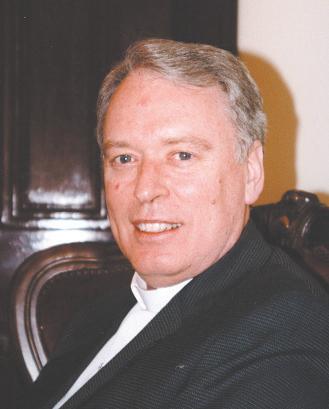 WBISHOP DONALD SPROXTON Auxiliary Bishop of
WBISHOP DONALD SPROXTON Auxiliary Bishop of
Perth
ith the completion of St Mary’s Cathedral, there has been a palpable sense of rejoicing during these months that have followed. It is as though ‘the beloved old lady’ has entered into a new and glorious phase, something like a resurrection experience.
The Easter Vigil will be very special for us this year because of the beautiful space that has been created by the architect, Mr Peter Quinn, which forms the forecourt for the Cathedral.
In its centre is the place where the Easter Fire will be lit for the first time.
The Fire will be seen right down Murray Street into the heart of the city.
This would be reminiscent to the Irish historian of the night St Patrick lit a huge bonfire on the Hill of Tara, in defiance of the King who had forbidden the lighting of any fire before the one he lit celebrating the New Year.
The light from Patrick’s fire was testimony to the strength and victory of Christ. May our city of Perth see the Fire of Easter Victory and be drawn to Christ our Saviour.
The Resurrection of Christ is our greatest reason for hope. Before the birth of Jesus, despite the many efforts made to be faithful to God, His people always eventually succumbed to human doubt about God and the wisdom of His plan for them.
The Hebrew Scriptures are full of examples of how the people made new covenants with God, one after another, only to fail in their responsibilities.
Jesus, from the time of the temptations in the wilderness to the moment He breathed His last on the Cross, revealed His utter faithfulness and confidence in God.
The way in which He accepted the kind of death He suffered, showed His belief that the plan of the Father, however mysterious in a moment of time, was good and wise.
Resurrection is our hope.
We believe that when our life here is ended, the new life revealed by Christ awaits us. It is also granted to us that we should have resurrection experiences along our way.
Easter reassures us when we are full of doubt and the plan of God for us seems incomprehensible. The Easter Proclamation of the Vigil – the Exsultet –joyfully announces: The power of this Holy Night dispels all evil, washes guilt away, restores lost innocence, brings mourners joy; it casts out hatred, brings us peace, and humbles earthly pride.
I pray for each family that our Easter celebrations bring the blessing of new life and hope. May the power of Christ‘s victory over death bring us healing, renewal of faith and courage to give authentic witness to Christ.
The sacrifice to which no artist can do justice

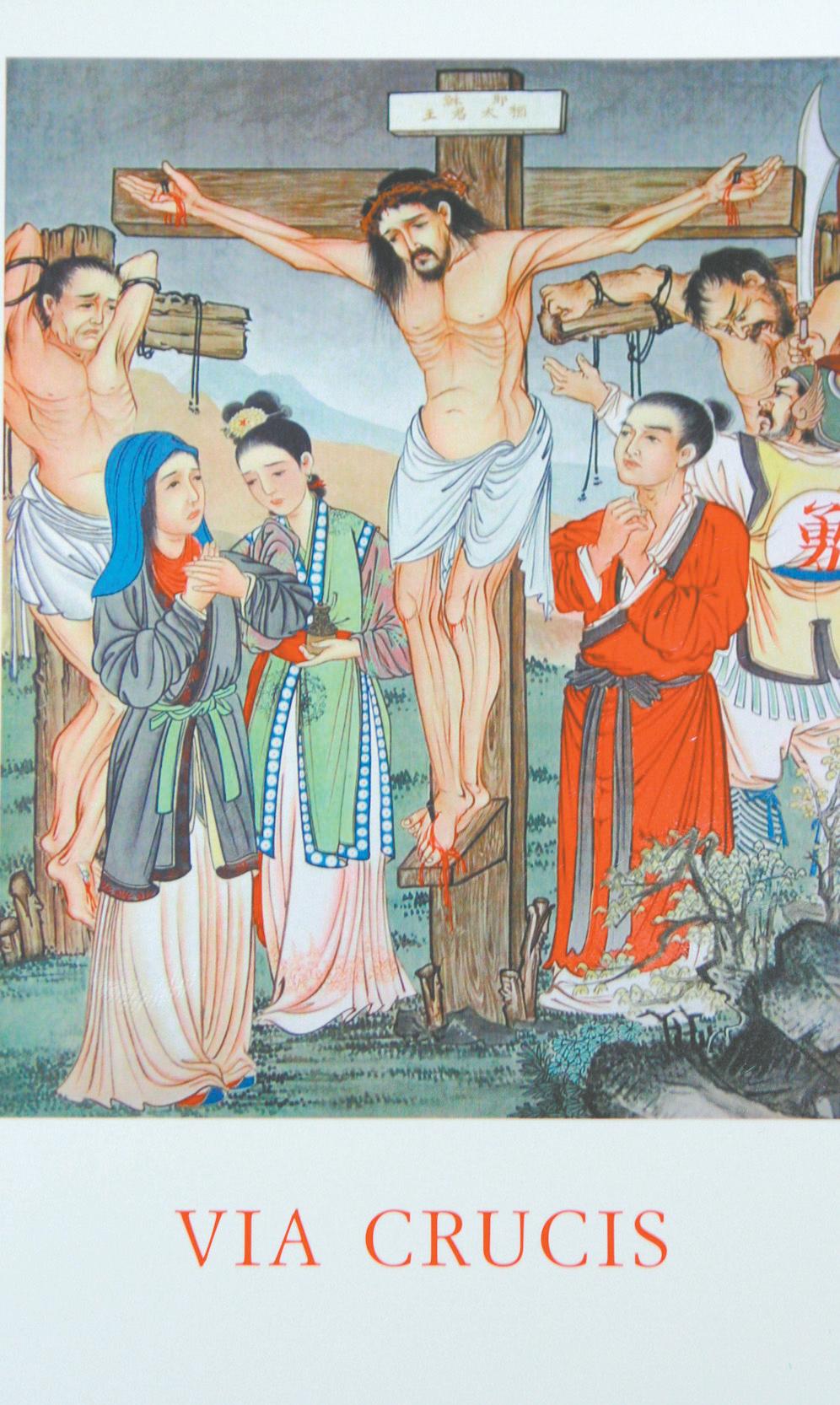
II wanted something that went beyond the pious, shallow art that so often adorns the pages of our press this time of the year.
I have looked far and wide for an art form of any kind that communicates graphically and wonderfully Christ’s rising from the dead.
It will be no surprise that I have found nothing that captures the gravity and mystery of that moment, or even comes near the expectations of my imagination of what that Gospel scene may have looked like.
I have seen some wonderful paintings recorded in art books and on the web.
I have looked at oils, water-colours and crayons, even at scenes constructed in soft light by world renowned photographers as they tried to seize that sacred second when Christ breathed anew and humanity was saved.
However, each image seemed incomplete as the magnitude of what it proclaimed could never be contained or captured within the physical limits of a piece of art.
I have examined many memorable renditions of the crucifixion of Christ found in the great galleries of the world.
had happened.
It was as close to the real thing that Gibson dared venture.
I don’t blame him.
I am sure he knew we would all feel severely disappointed with any attempted celluloid portrayal of such a mystery.
No artist can recreate the magnificence of the resurrection so as to do it justice.
Similarly, the theologians simply haven’t the words to craft an explanation of the resurrection of Christ that satisfies us, nor can they explore in their conjectures the details of this profound occurrence; one that so changed humanity and humanity’s relationship with God.
And neither can any of us with the most fertile of imaginations ensnare for a moment the full meaning of this mystery. Easter, it would seem, is nothing less than pure faith.
It is a time for the true believers. “Blessed are those who do not see and yet believe”. What a superb gift to us is faith.
The Paschal Mystery in our lives
 IBISHOP C HRISTOPHER SAUNDERS Bishop of Broome
IBISHOP C HRISTOPHER SAUNDERS Bishop of Broome
They evoke an appreciation of Jesus as the one who has given everything, even unto death, for a sinful world.
I am convinced of the authenticity of the rigours of the scourging at the pillar and the crowning with thorns portrayed in great works by the masters, and in modern films by directors such as Mel Gibson in his Passion
have been looking for an image of the resurrection – a painting, a sketch, a mosaic or a block-print. I wanted to use it in our magazine to accompany an article and a prayer-card for Easter and
I remember flinching through gruesome scene after scene of the Passion in a city cinema and looking forward to the resurrection ‘finale’, wondering then how it might look from Gibson’s perspective. Cleverly he avoided it.
Well, almost.
Bandages lay abandoned on the cold stone slab and an eerie light beckoned us to appreciate that something super-significant
Our faith compels us to believe in the risen Christ, one who demands that we love as He loved.
“This is my commandment: love one another as I have loved you”. He now awaits our response to His supreme gift of love.
He who has loved us to the point of death gathers us in this new life which He breathes into us through the power of the Spirit and urges us to live and love as He did.
Easter is a remarkable time that leads us to the edge of pure mystery and begs us to contemplate our relationship with God and with each other … and set it right.
With this in mind, I wish you a happy and a Holy Easter.
May the joy that your faith promises you lift you up in happy expectation of new beginnings in the company of the resurrected Christ.
BISHOP JUSTIN BIACNHINI Bishop of Geraldton
was privileged to spend two months of my sabbatical last year in the Holy Land. One month was in the walled city of Jerusalem itself at a centre called Ecce Homo run by the Sisters of Zion.
Three of the very special places for me, and for us all as Christians, are Nazareth (the place of the Incarnation), Bethlehem (the Nativity) and Jerusalem (the place of the Death and Resurrection of Jesus).
Each of these sites has a special church. Even with a GPS, I don’t think we could get much closer than these actual sites where the saving work of Jesus for us and our world took place.
From the roof top of Ecce Homo I often looked out and prayed over Jerusalem and its people – the Jews, Christians and Muslims. I would look over at the Church of the Holy Sepulchre and Resurrection.
This special church was close enough for us to visit at various times of the month to reflect and pray there.
One morning our group of 30 had the rare privilege of celebrating the Eucharist there, close to the site of the crucifixion of Jesus.
The place of resurrection is also close by. It is so close that when Emperor Constantine built the first church, after his mother had discovered what we believe to be Jesus’ cross, it was able to encompass (as the present one does) both sacred sites.
This church is just so special because of where it stands and what it honours –the death and resurrection of our loving Saviour and His Paschal Mystery which we celebrate in the rich Church’s Liturgy of Easter. The Paschal Mystery is at the core of our Christian Faith.
The point I want to make in this Easter message is that the two sites of the dying and rising of Jesus are not far apart. For Jesus, they were close in space (perhaps just a stone’s throw away) and in time (just the three days).
It is important to remember that in our lives our dyings and risings are connected closely to each other. Our whole life is a continual succession of dying and rising.
In the course of one day we can “die” and “rise”.
There are times of course when the ‘dying’ part is very prolonged and the suffering seems endless.
Just as surely as the cross we experience is real, there will be a ‘rising’ because of Jesus’ Paschal Mystery.
I would like to quote St Paul who had a deep love for and appreciation of Jesus and the Paschal Mystery - “Blessed be the God and Father of our Lord Jesus Christ, the Father of mercies and the God of all consolation, who consoles us in all our affliction, so that we may be able to console those who are in any affliction with the consolation with which we ourselves are consoled by God” (2 Cor 1:3-4).
Through Paul’s own experience he is teaching us not only the value of the cross but encouraging us as he did to embrace it in our lives. Jesus will then give us consolation.
In other words He will bring us through to peace and greater life. We in our turn then can use that consolation to help others who are going through difficult times. We can do both of these things because Jesus is with us, bringing us consolation as well as empowering us to offer that same help to others.
Jesus’ death and resurrection were not far apart. Ours (our many small and bigger deaths and resurrections) likewise are unquestionably connected.
What is more important is that Jesus and His big Paschal Mystery are never apart from us and all that we are called to do. This is what we celebrate at Easter and at each Mass.
Happy Easter. Happy Passover.
31 March 2010, The Record Page 11
BISHOPS’ MESSAGES
Catholicism takes to the streets as World
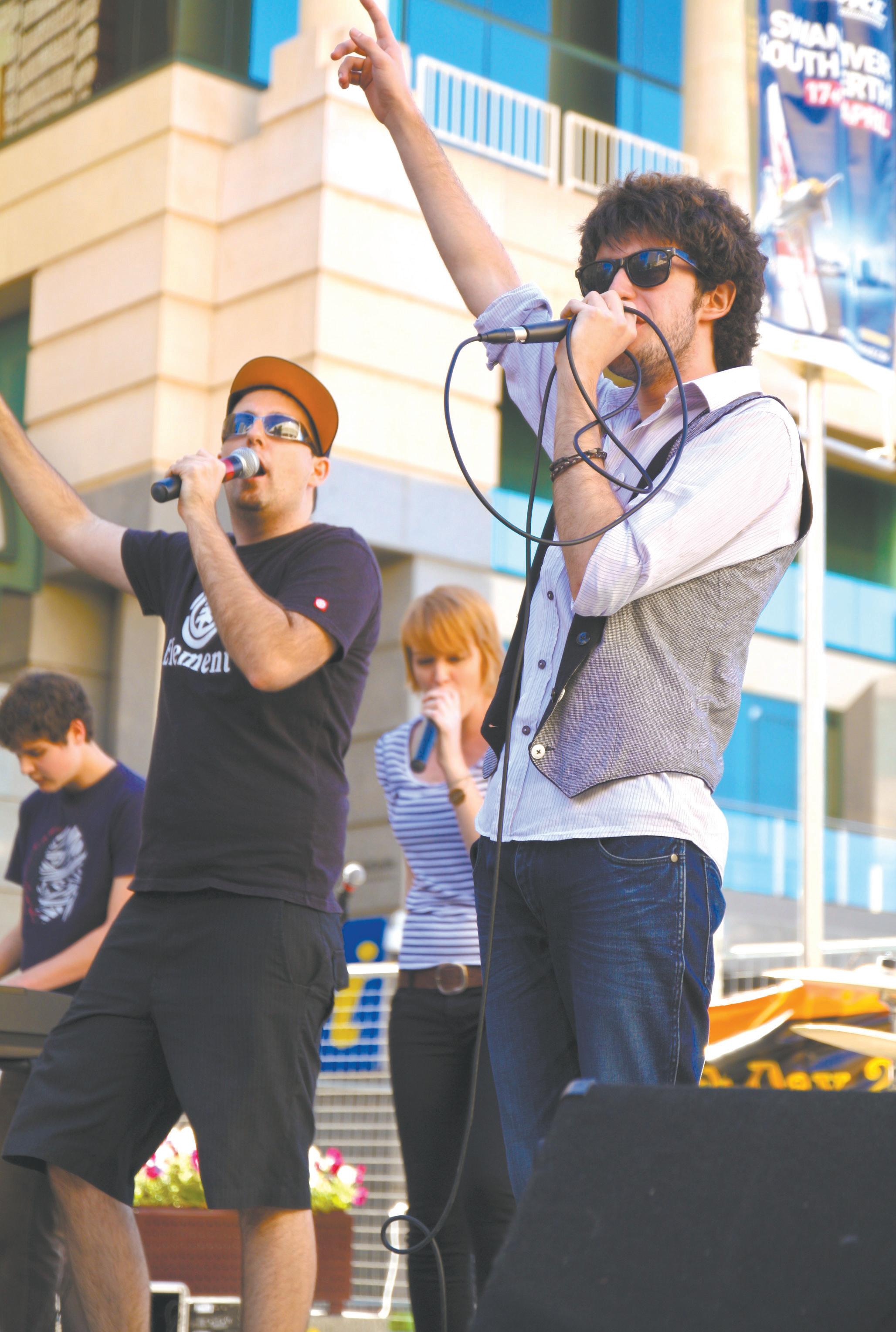

World Youth Day 2010 Perth celebrations go public
HUNDREDS of Catholic youth gathered in Forrest Place from 12-4pm on Sunday, 28 March to celebrate the 25th World Youth Day.
A free youth festival was held with performers and speakers bringing alive the message of Pope Benedict XVI which was based on the scriptural theme ‘Good Teacher, what must I do to inherit eternal life?’ (Mk 10:17).
Bishop Don Sproxton and Anita Parker, Director of Catholic Youth Ministry, opened the event sharing thoughts for young people on the Pope’s message and also launching the CYM Madrid Pilgrimage options for 2011.
Pope John Paul II initiated WYD to be a gathering where Bishops meet with young people to dialogue about their faith and to bring alive the young heart of the Church.
These World Youth Day gatherings have been held annually for the past 25 years on Palm Sunday and every two to three years are held in a larger international forum.
“It is a fantastic way to keep alive the WYD spirit and for the young people to continue to be witnesses to our faith as the 2008 WYD theme called us to” said Anita Parker, director of the Perth
Archdiocesan Catholic Youth Ministry Office and former WYD officer.
The Perth celebrations had a great variety of performers for the Catholic Community.
The international flavour came from the African Choir, the Spanish music of the NeoCatechumenal Way community, and also the sound volunteers from the Burmese community.
There was a drama performance by Youth Mission Team and entertainment by Fr Hong Pham. The diverse music groups came from Flame Ministries international, Apokalypsis, and Youth Impact band. Many of the general public also enjoyed the entertainment as they stopped by on a Sunday shopping day in the city.
Street evangelisers were able to meet interested people to share the Easter message with them and also advertise Easter celebrations at the Cathedral this coming week.
Bishop Don encouraged the young people gathered to reflect on the message of Pope Benedict XVI, in particular the questions: “What is the meaning of our life? What is the purpose of our existence? Where is that we are going? Eternal life awaits all of us and it is what helps us live our lives with a certain purpose.”
To read the Pope’s full WYD 2010 message go to: http://www.vatican.va/holy_father/ benedict_xvi/messages/youth/documents/ hf_ben-xvi_mes_20100222_youth_en.html
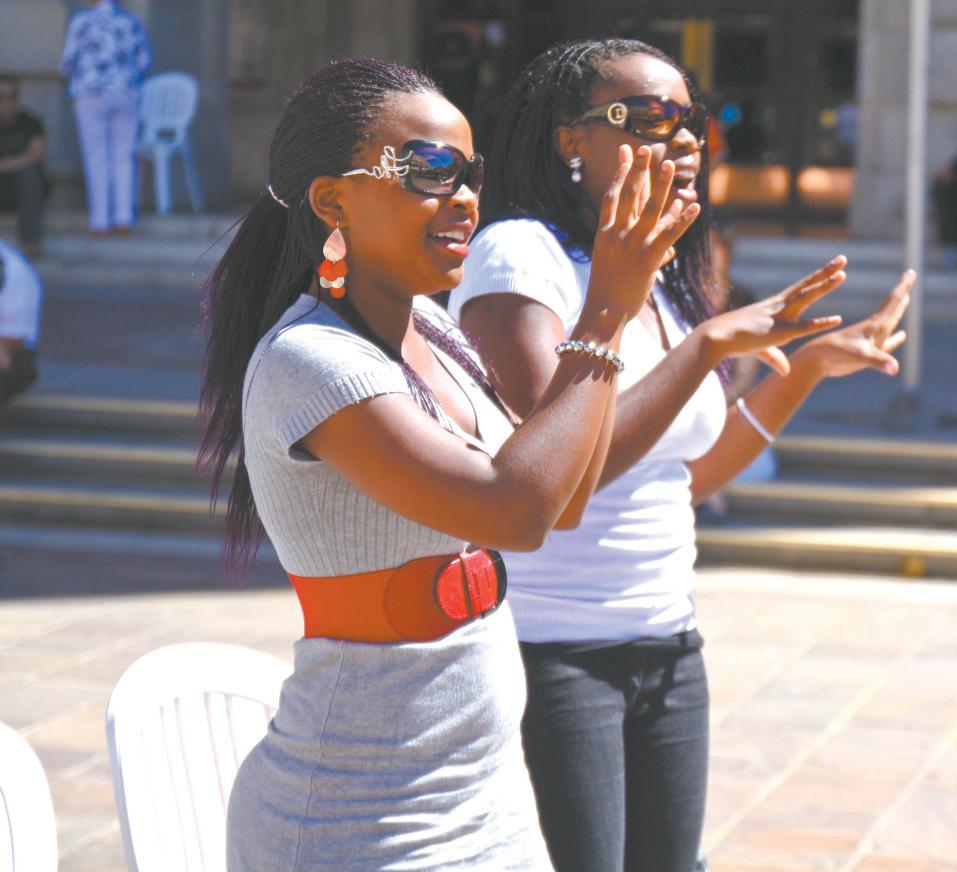
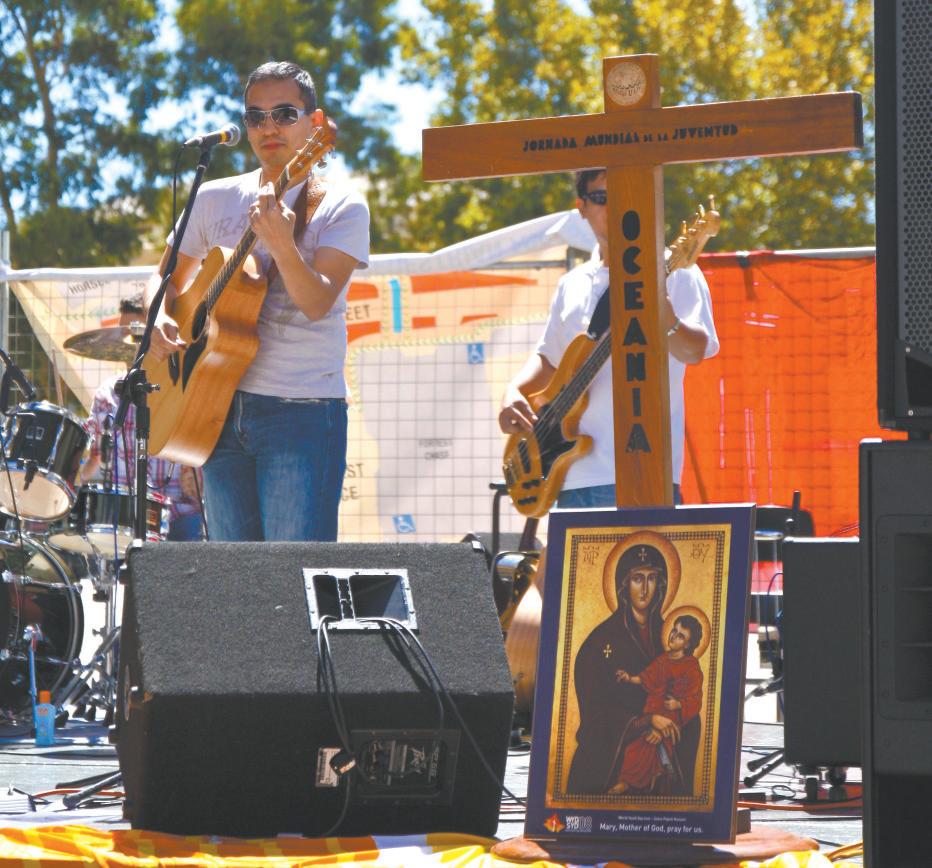
Page 12 31 March 2010, The Record WORLD YOUTH DAY
Above, below: Youth Impact’s band performs during the World Youth Day celebrations. PHOTOS: MATT LIM
Top: Young Catholics enjoy the performance during the World Youth Day celebrations in Forrest Place; above: Flame Ministries International band plays during the celebrations.
PHOTOS: MATT LIM
Youth Day rocks Forrest Place in CBD
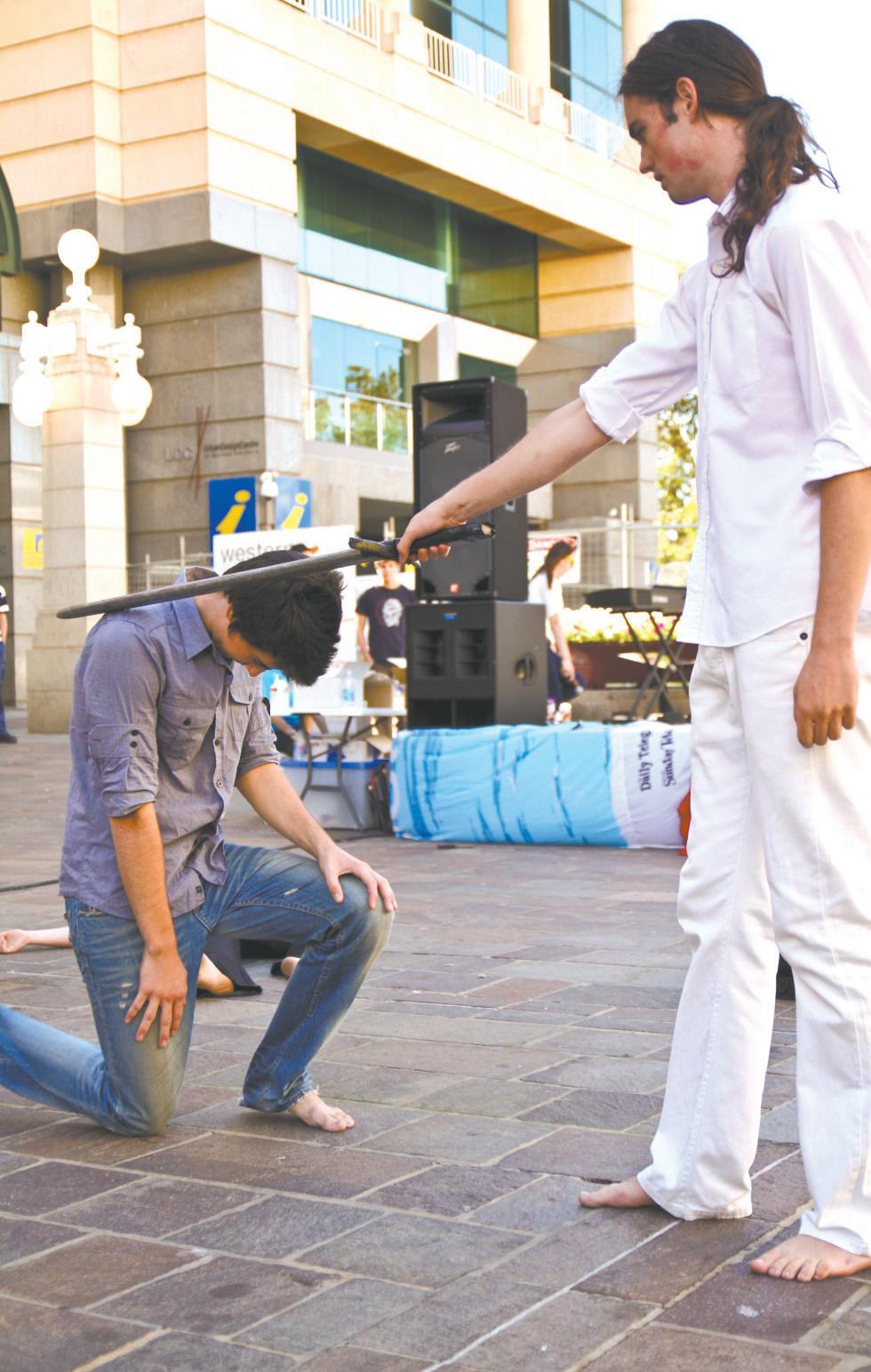

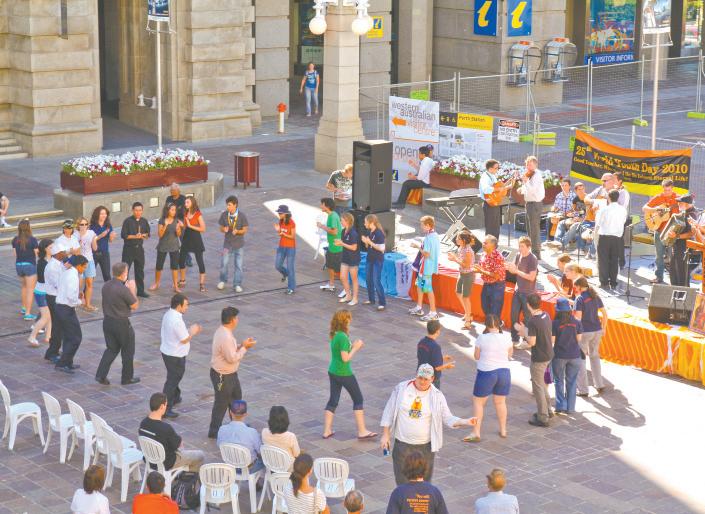
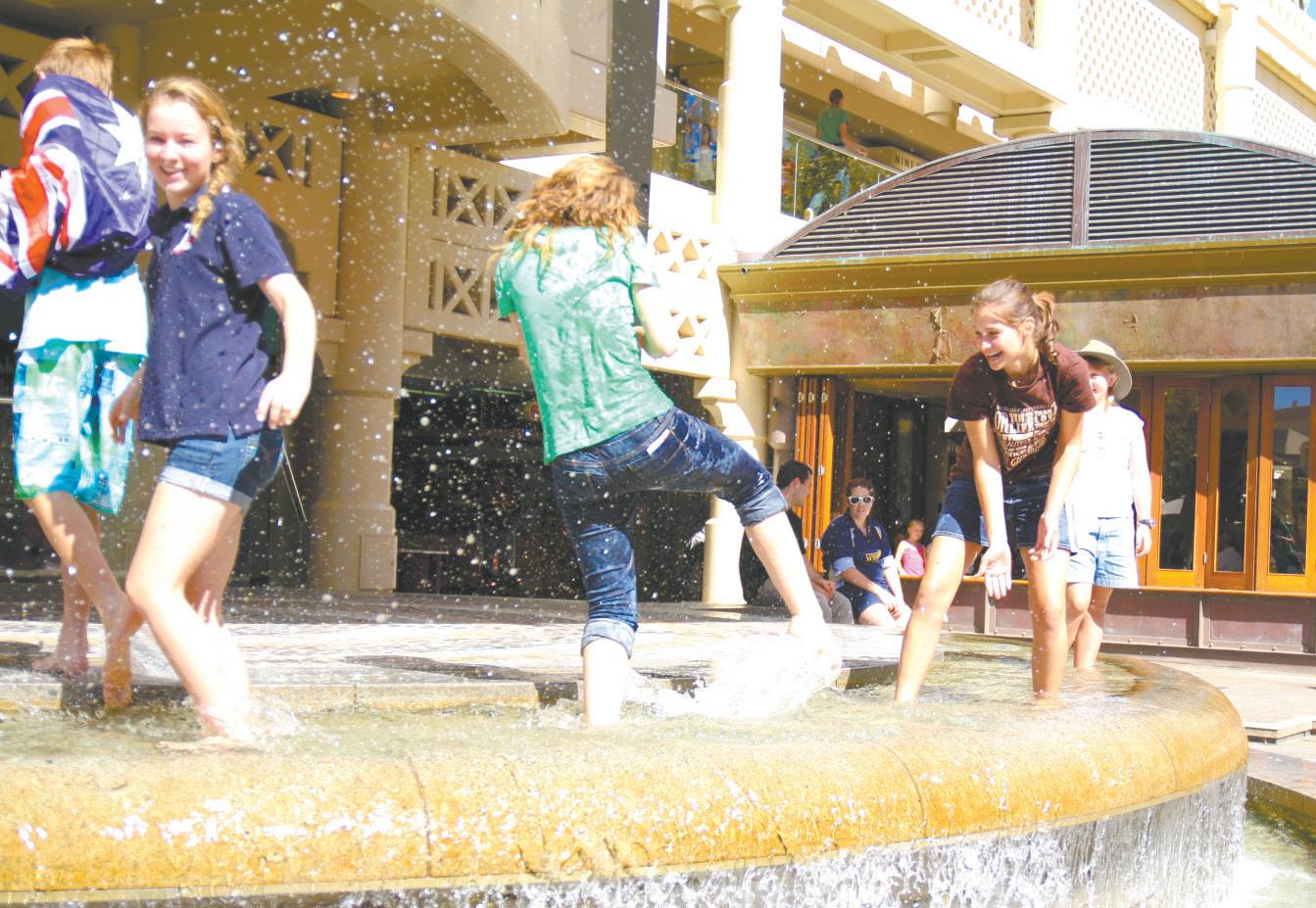
Pope offers life lessons to youth on World Youth Day 2010
For the beautiful life, just add Christ - and follow Him:
Benedict XVI
VATICAN CITY (Zenit.org)Benedict XVI has advised youth around the globe how to live a beautiful and joyful life, saying that even sacrifice is attractive if there is a reason for it.
The Pope gave life lessons on 25 March when he participated in an event to mark the 25th World Youth Day. During the activity, he responded to three questions from young participants.
The three questions related to this year’s Youth Day theme: “Teacher, what must I do to have eternal life.”
The first questioner noted that “I don’t even know what eternal life is.” “Is it possible to make something beautiful and great of my life?” the youth asked the Pontiff.
Pope Benedict XVI responded, acknowledging that no-one can imagine eternal life, but “we can begin to understand what eternal life is”. The trick to finding this “true life,” he suggested, lies in following the commandment of love.
“To love God implies to know God, to recognise God. And this is the first step we must take: to seek to know God,” Pope Benedict told the youth. “And thus we know that our life does not exist by accident, it is not an accident.
“My life is willed by God from eternity. I am loved, I am necessary.
“God has a plan for me in the totality of history; he has a plan specifically for me.
“My life is important and also necessary. Eternal love has created me in profundity and awaits me.”
The Holy Father described the Ten Commandments as “rules” in this “essential” element of love. Love, he continued, is God’s fundamental will for all of us.
“But,” he clarified, “its application is different in every life,
because God has a specific plan for each man.
“Very different is the holiness of a monk and that of a politician, of a scientist and a peasant, and so on; and thus for every man God has his plan and I must find, in my circumstances, my way of living this unique and common will of God.”
Being loved
The next youth asked Benedict XVI what it means for Jesus to look at us with love and “how can we also have this experience today.”
The Pope began by affirming that it is possible to experience Christ’s love. Then he explained how to do it.
The first step, he said, is knowing Christ, and he proposed the Gospels as the tool par excellence for this endeavour.
“Only with the opening of the heart to Him, only with knowledge of the whole of what He has said and done, with our love, with our going to Him, can we little by little know Him ever more and thus also have the experience of being loved,” the Holy Father said.
But that isn’t enough, he added. One must also act: “To do good things, to be committed to one’s neighbour.”
He summarised the recipe in this way: “I would say these elements: to listen, to answer, to enter the believing community, communion with Christ in the Sacraments, where he gives himself to us, whether in the Eucharist or in Confession, etc and, finally, to do, to carry out the words of the faith, so that they become the force of my life and the look of Jesus also truly appears to me and His love helps me and transforms me.”
Leaving everything
Finally, the third youth challenged the Pope to explain how to have the strength to make renunciations. Like the rich young man of the Gospel, the youth said, “I
also find it hard to follow [Christ], because I am afraid of leaving my things and sometimes the Church asks me for difficult renunciations.”
Renunciation, the Pontiff responded, is a “hard word for us.” But he contended that sacrifices become beautiful “if they have a reason and if this reason then justifies even the difficulty of the renunciation.”
The Holy Father pointed to St Paul’s teaching on the matter, which illustrates that even nontranscendent goals like winning a race require sacrifice.
“The same thing that is true, with this image of St Paul for the Olympics, for the whole of sport, is true also for all the other things of life,” the Pope proposed.
“A good professional life cannot be achieved without renunciations, without an adequate preparation, which always calls for discipline, it calls for giving up something, and so on, also in art and in all the elements of life.”
Attaining a goal in any fieldprofessional, athletic, artistic, cultural, etc - requires denying ourselves, the Pope said.
“In this connection, it seems to me, we must see that without a ‘no’ to certain things the great ‘yes’ to true life does not grow, as we see it in the figures of the saints.”
And the saints, in fact, are our helpers along this path, Benedict XVI suggested.
“We are helped by the great figures of the history of the Church, by the Word of God, by the parish community, movements, charitable work, etc,” Pope Benedict told the young people.
“And we are helped by the friendships of men who ‘go forward,’ who have already made progress on the way of life and who can convince me that to walk thus is the right way.
“Let us pray to the Lord that He will always give us friends, communities that help us to see the way of goodness and thus find the beautiful and joyful life.”
31 March 2010, The Record Page 13 WORLD YOUTH DAY
Catholic youth have fun in the sun in Forrest Place during the 2010 World Youth Day celebrations, which saw Catholicism take to the streets in one of the most public acts of evangelisation Perth has seen for some time. PHOTOS: MATT LIM
Above: The Disciples of Jesus Youth Mission Team perform a skit in Forrest Place; below: the choral team Memories of Africa perform on stage; bottom: Members of the Neocatechumenal Way lead a public display of faith in Forrest Place in the Murray Street Mall in Perth CBD.
PANORAMA
A roundup of events in the Archdiocese
Panorama entries must be in by 12pm Monday. Contributions may be emailed to administration@therecord.com.au, faxed to 9227 7087, or mailed to PO Box 75, Leederville WA 6902.
Submissions over 55 words will be edited. Inclusion is limited to 4 weeks. Events charging over $10 will be put into classifieds and charged accordingly. The Record reserves the right to decline or modify any advertisement.
FRIDAY, 2 APRIL
Good Friday Service
10.30am at Catholic Agricultural College, Bindoon. Confessions, followed at 11am by the Stations of the Cross and confessions continue. 2.30pm, Solemn ceremony, The Lord’s Passion. All are welcome! Enq: Fr Paul 9571 1839 or CAC 9576 1040.
Stations of the Cross
7.30pm at St Lawrence and Mary Immaculate Church, Balcatta. The Stations of the Cross will be held outside the church in Italian. Candles will be available. All are welcome. Enq: Fr Irek 0438 344706 or 9344 7066.
Stations of the Cross
10am at University Chapel, 32 Mouat St, Fremantle. The University of Notre Dame will follow the Stations of the Cross. All are welcome. Enq: Cate 9433 0580.
The Desolata
7.30pm at St Denis Church, Osborne and Roberts Sts, Joondanna. Reflect on the sorrows of Mary as she journeyed with her son Jesus through to His death, burial. Spend time with Mary in her desolation and sorrow, this can help us to better cope with our own way of the cross. Enq: Barbara 0401 016 399.
SUNDAY, 4 APRIL
Easter is Coming
2pm at Russell Sq, James St, Northbridge. In our ever increasingly secular world, the real meaning of Easter is getting lost. Come and remind the people of Perth what Easter is about. Join with hundreds of Christians from many different denominations to celebrate. Enq: awakeningwa@fusion.org.au or 08 9472 3470.
Easter Latin Mass
12 noon at the Good Shepherd Parish, 40 Streich Ave, Kelmscott. Mass will be according to the 1962 Missal. All welcome.
Easter Sunday - Taize Worship
7pm at Anglican Catholics (TAC), 11 Susan St, Maylands. Enq: 0417 180 145. www.tradanglican.iinet.net.au.
THURSDAY, 8 APRIL
St Peregrine Healing Mass
7pm at Ss John and Paul Church Willetton. Mass, in honour of St Peregrine, Patron Saint of cancer sufferers and helper of all in need, followed by veneration of the relic and anointing of the sick.
SATURDAY, 10 APRIL
Sand Sculpture Competition
9am-1.30pm at Scarborough Beach. Have fun in the sun and help promote WYD 2011. Youth groups and communities encouraged to put a team together to get creative in the sand and join in the fun activities. Great prizes, high profile judges, beach games and bring your own picnic. Download registration form, www.cym.com. au or 9422 7912.
Garage Sale
9.30am-12 noon at St Bernadette’s Church, 49 Jugan St, Mt. Hawthorn. Sausage sizzle. Cost of items: donation.
SUNDAY, 11 APRIL
The Feast of Divine Mercy
3-6pm at Holy Family Church, Lot 375, Alcock St, Maddington. The programme includes Reconciliation, Divine Mercy Chaplet and Novena, Eucharistic Adoration, Holy Mass, healing prayers. To be preceded by a Novena to the Divine Mercy from 2-10 April every day from 3-4pm. Inviting all faithful to know more about Divine Mercy through the sharing of the word on all 10 days.
Enq: 9493 1703.
Feast of Divine Mercy 1.30pm at St Mary’s Cathedral, Victoria Sq, Perth. Confessions and Holy Rosary, followed by Holy Mass, celebrant Fr Alphonsus Saviciks and other Priests are invited to concelebrate. 3.30pm Benediction, followed 3.45 Veneration of First Class relic. Refreshments later.
Enq: John 9457 7771.
Divine Mercy Sunday 3pm at St Thomas More Catholic Church, Dean Rd, Bateman. Known as the Feast of Divine Mercy, we will celebrate this beautiful feast in a prayerful, sung devotion. Accompanied by Exposition and followed by Benediction. Mass in conjunction with the Chaplets, will be at 2pm at the same venue. All are welcome. Enq: George Lopez on 9310 9493(h) or 9325 2010(w).
Bullsbrook Shrine Virgin of the Revelation 2pm at The Shrine, 36 Chittering Rd, Bullsbrook. The Annual celebration of the apparition of the Virgin of the Revelation Ire Fontane, Rome will be celebrated with Rosary, Procession, Mass and Benediction. All are welcome. Enq: SACRI 9447 3292.
MONDAY, 12 APRIL THURSDAY, 22 APRIL
National Pilgrimage 2010 - In the Footsteps of Mary MacKillop Enq: Laura lmccarthy@sosjwa.org.au.
SATURDAY, 17 APRIL
St Padre Pio Pilgrimage
8am depart, pickup points for Bullsbrook. 9.30am Stations of the Cross, 11am Holy Mass, Bindoon. BYO lunch, tea and coffee provided. 2pm, Gin Gin, Procession, Rosary, Adoration, Divine Mercy and Benediction. 3.45pm return Perth. Transport, $15. Enq: Midland, Catrina 9255 1938; Bassendean, Ivana 9279 7261; Morley, Christine 9276 3264; Leederville, Leena 9444 3617; Balcatta, Rosa 9276 1952; Glendalough, Des 6278 1540; St Joachim, Mirrabooka, Girawheen, Nita 9367 1366.
SUNDAY, 18 APRIL
April Sunday Sesh
6pm at St Francis Xavier Parish, 279 Forrest Rd, Armadale. Mass, followed by Sesh at 7.15pm. Open for youth of all ages 15-35). Guest Speaker, Fr Robert Cross, presenting, The Truth Matters, Authority in the Church. The night includes music, activities, prayer time and group discussions. Bring money for supper. Enq: www.cym.com.au or 9422 7912.
Taize Meditation Prayer
7pm to 8pm at Sisters of St Joseph Chapel, 16 York St, South Perth. Come and join in the prayer, singing the chants from Taize in the stillness, peace in a candlelit Chapel. All welcome. Enq: Sr Maree Riddler 0414 683 926.
FRIDAY, 23 APRIL
Mass for Year of the Priest
7pm at St Thomas More Parish, Bateman. A big welcome to priests, deacons, seminarians and people who have ministered at the parish since 1986. We also invite all parishioners to express their gratitude, in a few words, to any priest who has inspired and supported them on their faith journey. These will be carried in the entrance procession and placed in front of the altar. Enq: Secretary, 9310 1747.
SUNDAY, 2 MAY
30th Anniversary May Rosary CelebrationBusselton
12.30pm at Queen of the Holy Rosary Shrine, Bove’s Farm, Roy Rd, Jindong, Busselton. Hymn singing. 1pm Holy Concelebrated Mass led by Bishop Gerard Holohan, followed by Rosary Procession and Benediction. Tea provided. All welcome. Bus bookings; Francis 0404 893 877 or 9459 3873. Note: Roy Rd runs off the Bussell Hwy, approximately halfway between Busselton and Margaret River.
FRIDAY, 7 MAY TO SUNDAY, 9 MAY
Retreat St John of God Retreat Centre, 47 Gloucester Cres, Shoalwater. Come journey with us into the inner sanctum where the Trinity dwells. Reflective days for single women who wish to deepen their relationship by applying the Trinitarian model. Enq: Sr. Ann 93108248 or 0409602927 or www.inroadspirituality.com.
MONDAY, 17 MAY FRIDAY, 28 MAY
Tour of the Holy Land 12 day tour with Fr Roy Pereira visiting Sea of Galilee, Jericho, Masada, The Dead Sea, Bethany, Jerusalem and Cana. For cost, itinerary and more details, please contact: Francis Williams (Coordinator) T: 9459 3873 M: 0404 893 877 Email: francis@perthfamily.com.
GENERAL NOTICES
Book of Remembrance
St Brigid’s College Lesmurdie. For students, Sisters and staff members of St Brigid’s College, Lesmurdie who have gone to their eternal rest. If you know of loved ones, friends or acquaintances who have passed away and who attended or worked at St Brigid’s, please contact Jenny Lewis 92918129 or cream.annamaria@stbrigids.wa.edu. au for inclusion in the Book of Remembrance to be placed in the College Chapel.
Perpetual Adoration
Perpetual Adoration of the Blessed Sacrament is in its seventh year at Christ the King Church, Beaconsfield. Open 24 hours, except at Mass times. All welcome. Enq: Joe 9319 1169.
Pilgrimage to the Holy Land
The Church of St Jude in Langford is seeking to put together a visit to Jordan, the Holy Land and Egypt, leaving mid-August 2010. Expect the pilgrimage to be for circa 19 days and could accommodate 28-30 people. Fr Terry Raj will be the Spiritual Director. Enq: Matt 6460 6877, mattpicc1@gmail.com.
St Paul’s Mt Lawley - Lenten Services Weekday Masses, 7.45am and 5.45pm. Stations of the Cross and Benediction, Fridays 6.15pm. Wednesday Fasting and Almsgiving Supper, any time between 5-6.45pm in the church undercroft. 9.30-10.30am, Wednesdays Bible study on St Paul and the Power of the Cross in the RSL Chapel, and 7-8pm in the church undercroft.

EVERY SUNDAY
Pilgrim Mass - Shrine of the Virgin of the Revelation
2pm at Shrine, 36 Chittering Rd, Bullsbrook. Commencing with Rosary followed by Benediction. Reconciliation is available before every celebration. Anointing of the Sick administered during Mass every second Sunday of the month. Pilgrimage in honour of the Virgin of the Revelation, last Sunday of the month. Side entrance to the church and shrine open daily between 9am-5pm. Enq: SACRI 9447 3292.
EVERY 3RD SUNDAY OF THE MONTH
Oblates of St Benedict
2pm at St Joseph’s Convent, York St, South Perth. Oblates affiliated with the Benedictine Abbey New Norcia welcome all who are interested in studying the rule of St Benedict and its relevance to the everyday life of today for lay people. Vespers and afternoon tea conclude meetings. Enq: Secretary 9457 2758.
EVERY FOURTH SUNDAY OF THE MONTH
Holy Hour for Vocations to the Priesthood, Religious Life 2-3pm at Infant Jesus Parish, Wellington St, Morley. The hour includes Exposition of the Blessed Eucharist, silent prayer, Scripture and prayers of intercession. Come and pray that those discerning vocations to the Priesthood or Religious life hear clearly God’s loving call to them.
LAST MONDAY OF EVERY MONTH
Christian Spirituality Presentation
7.30-9.15pm at the Church Hall behind St Swithan’s Anglican Church, 195 Lesmurdie Rd, Lesmurdie. Stephanie Woods will present The Desert Period of Christianity, 260 to 600AD. From this time period came the understanding of the monastic lifestyle and contemplative prayer. No cost. Enq: Lynne 9293 3848.
EVERY TUESDAY
Bible Teaching with a Difference
7.30pm at St Joachim’s Parish Hall, Shepparton Road, Victoria Park. Exciting revelation with meaningful applications that will change your life. Meetings incorporate a Novena to God the Father. Light refreshments will follow. Bring along your Bible, a notebook and a friend. Enq: Jan 9284 1662.
EVERY WEDNESDAY
Holy Spirit of Freedom Community
7.30pm at The Church of Christ, 111 Stirling St, Perth. We are delighted to welcome everyone to attend our Holy Spirit of Freedom Praise Meeting. Enq: 9475 0155 or hsofperth@gmail.com.
EVERY 2ND WEDNESDAY
Year of the Priest Holy Hour
7-8pm at Holy Spirit Catholic Church, 2 Keaney Pl, City Beach. Reflections on St John Vianney, Patron Saint of Priests. Light refreshments later in the parish centre. Chaplets of the Divine Mercy
7.30pm at St Thomas More Catholic Church, Dean Rd, Bateman. A beautiful, prayerful, sung devotion accompanied by Exposition, and Benediction. All welcome. Enq: George 9310 9493 H or 9325 2010 W.
Businesses and Companies – Support our Youth Catholic Youth Ministry is looking for donation of prizes or financial support to help with Diocesan youth events such as WYD in Forrest Place, Inter-Parish Sand Sculpture Competition and the WYD Fundraising Ball. All contributions will be acknowledged. Any assistance would be greatly appreciated. For more information, admin@cym. com.au or 9422 7912.
The Alliance, Triumph and Reign of the Two Hearts
Due to Good Friday there will not be the first Friday Eucharistic Prayer Vigil and devotion to the Two Hearts for April but will recommence on the first Friday of May (7th) as usual at St Bernadette’s Church Glendalough. Enq: Father Doug Harris 9444 6131 or Dorothy 9342 5845.
Day With Mary
The first Saturday in April is Holy Saturday, so there will be no ‘Day With Mary’ on this day. The next Day With Mary will be on the 1st of May in Ellenbrook. Enq: Franciscan Sisters of the Immaculate 9250 8286 or Nita 9367 1366.
Urgent News - for all Catholic Youth
Connect with Catholic Youth Ministry Perth to engage in local events, Parish youth groups, social events, retreats and much more. Visit our website: www.cym.com.au, mailing list to receive a monthly e-newsletter, or facebook group Catholic Youth Ministry Perth. Volunteer with us to meet new people and share your skills with the Church. Feel free to visit us, or call 9422 7912.
Every Wednesday Night
Holy Hour for 2010 at Catholic Youth Ministry 5.30pm at The Catholic Pastoral Centre, 40A Mary St, Highgate. Mass, followed by Holy Hour at 6.30pm, dinner afterwards for a $5 donation. Enq: www.cym.com.au or call 9422 7912.
EVERY THURSDAY
Group 50 Charismatic Group
7.30pm at the Redemptorist Church, 190 Vincent St, North Perth. During these meetings messages from Lalith Pereira who gave the Four Step Retreat recently will be broadcast by satellite from Sri Lanka. The next broadcasts will be on 11 and 22 April.
FIRST FRIDAY OF THE MONTH
Mass for Vocations
7pm at the Sisters of the Poor, 2 Rawlins Street, Glendalough. Celebrated by Fr Dough Harris, followed by Holy Hour and Benediction, refreshments will follow.
Page 14 31 March 2010, The Record
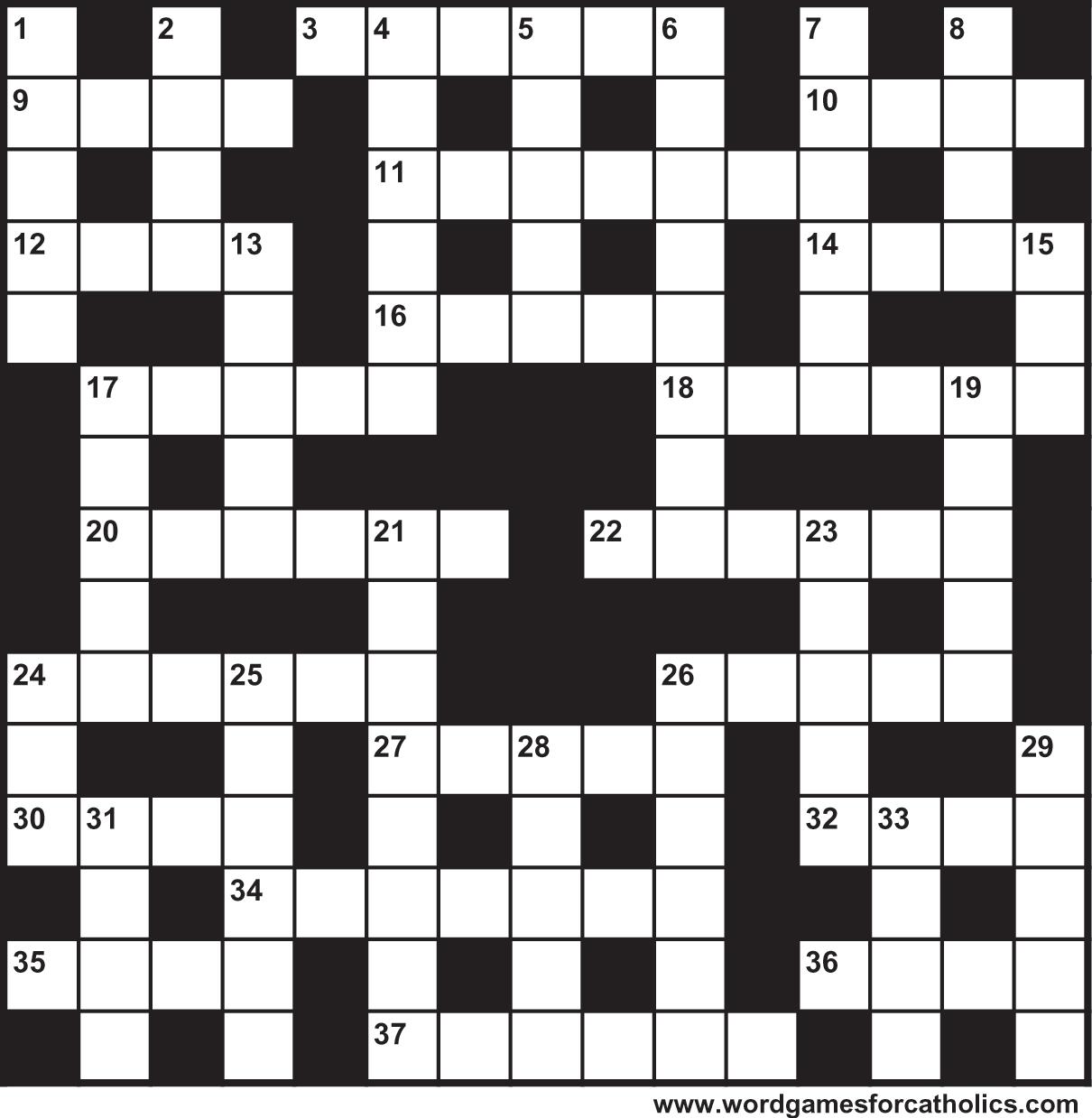
3
22
35
1


ACCOMMODATION
HOLIDAY ACCOMMODATION
ESPERANCE 3 bedroom house f/ furnished. Ph: 08 9076 5083.
GUADALUPE HILL TRIGG www.beachhouseperth.com
Ph: 0400 292 100.
HOUSE TO SHARE for clean living male, $120p/w Riverton. Ph: 0449 651 697.
MATURE WOMAN SEEKS SIN
GLE tenancy $150pw, S Suburbs. POLCL. 0448 938 348.
AVAILABLE IN NORTH PERTH AND NORTH BEACH. Rent negotiable according to circumstances. Enquiries to phone 08 94488109.
BUILDING
TRADES
BRICK REPOINTING Ph: Nigel 9242 2952.
PERROTT PAINTING Pty Ltd For all your residential, commercial painting requirements. Ph: Tom Perrott 9444 1200.
PICASSO PAINTING Top service.
Ph: 0419 915 836, fax 9345 0505.
COUNSELLING
PSYCHOLOGY and PSYCHOTHERAPY
www.peterwatt.com.au
Ph: 9203 5278.
FURNITURE REMOVAL
ALL AREAS Mike Murphy
Ph: 0416 226 434.
CLASSIFIEDS
Deadline: 11am Monday
TRADE AND HIRE
BRENDON HANDYMAN
SERVICES Home, building maintenance, repairs and renovations. NOR. Ph 0427 539 588.
MINI EXCAVATOR HIRE
Trenching and civil works. Daniel
Mob: 0428 170 379.
RELIGIOUS PRODUCTS
CATHOLICS CORNER Retailer of Catholic products specialising in gifts, cards and apparel for Baptism, Communion and Confirmation. Ph: 9456 1777.
Shop 12, 64-66 Bannister Road, Canning Vale. Open Mon-Sat.
OTTIMO Convenient city location for books, cds/dvds, cards, candles, statues, Bibles, medals and much more. Shop 108, Trinity Arcade (Terrace level), 671 Hay Street, Perth. Ph: 9322 4520. MonFri 9am-6pm.
RICH HARVEST YOUR CHRISTIAN SHOP Looking for Bibles, CDs, books, cards, gifts, statues, Baptism/Communion apparel, religious vestments, etc? Visit us at 39 Hulme Court (off McCoy St), Myaree, Ph: 9329 9889 (after 10.30am Mon to Sat). We are here to serve.
KINLAR VESTMENTS Quality hand-made and decorated vestments: Albs, Stoles, Chasubles, altar linen, banners etc. 12 Favenc Way, Padbury. By appointment only. Ph: Vicki 9402 1318 or 0409 114 093.
THANKSGIVING
THANK YOU ST JUDE for praying for Nathan to complete his mining Engineering Degree and obtaining good job. Please continue to pray for him to do well in life always. Thanks. Mercia
SETTLEMENTS
ARE you buying or selling real estate or a business? Why not ask Excel Settlements for a quote for your settlement. We offer reasonable fees, excellent service and no hidden costs. Ring Excel on 9481 4499 for a quote. Check our website on www.excelsettlements.com.
HEALTH
MASSAGE BY QUAL. LADY for neck, back & sciatic. 22 years experience. Ph 9334 4409.
LAWNS
WRR LAWN MOWING and Weed Spraying. Get rid of Bindii & Jojo clovers. 9443 9243, or 0402 326 637, e-mail william.rao@iinet.net. au.
HEALTH
LOSE WEIGHT SAFELY with natural products. Free ongoing support. 02 9807 5337.
BOOK BINDING
BOOK REPAIR SERVICE New Book Binding, General Book Repairs, Rebinding, New Ribbons; Old Leather Bindings Restored. Tydewi Bindery 9377 0005.
Walking with Him
Heavenly things
[Alt. 1 Cor 5:6-8 Let us celebrate]
Jn 20:1-9 Failure to understand
[Alt. Lk 24:1-12 Women at the tomb] [Lk 24:13-35 The recognised him]
5 M EASTER MONDAY
Wh Acts 2:14.22-33 God raised Jesus
Ps 15:1-2.5.7-11 My soul is glad
Mt 28:8-15 Filled with awe
6 T EASTER TUESDAY
Wh Acts 2:36-41 Lord and Christ
Ps 32:4-5.18-20.22
ACROSS
Many are ____, but few are chosen 9 “Blessed are the ____...” (Mt 5) 10 Nordic Saint 11 Bishop with no regional jurisdiction
Catholic actor _____Guinness 14 Altar linen
Biblical general 17 John Paul II’s given name
Nihil ____
Articles of clothing or bones of saints
12
16
18
20
St Stephen ___
Reader at Mass 26 Make void a sacrament 27 ____ in terris 30 “...is now, and ____ shall be...” 32 Liturgical ____ 34 Catholic news commentator, Maria ____
24
God, in Paris 36 “By the sweat of your ____...” 37 St Theresa, the __ Flower DOWN
Biblical measure
Leader of the Church
Type of grace 5 Language of the Church 6 Mater ____ 7 ___ Christi 8 Major character of Acts
Christmas song 15 He travelled with Abraham 17 ____ eleison 19 Possible Easter month 21 ____Works of Mercy 23 First Catholic US Supreme Court Justice 24 Be untruthful 25 Hometown of St Paul 26 Morally neutral 28 Commandment word 29 ____ of thorns 31 Veronica’s ____ 33 Land of Sts Brendan and Brigid
2
4
13
31 March 2010, The Record Page 15 CLASSIFIEDS
C R O S S W O R D W O R D S L E U T H
SOLUTION
LAST WEEK’S
S EASTER SUNDAY Mass during the day Wh Acts 10:34.37-43 God raised Jesus Col 3:1-4
4
Alive in famine Jn 20:11-18 I am ascending 7 W EASTER WEDNESDAY Wh Acts 3:1-10 At the ninth hour Ps 104:1-4.6-9 He is our God Lk 24:13-35 Eyes opened 8 Th EASTER THURSDAY Wh Acts 3:11-26 Jesus glorified Ps 8:2.5-9 How great your name Lk 24:35-48 It is indeed 9 F EASTER FRIDAY Wh Acts 4:1-12 Apostles arrested Ps 117:1-2.4.22-27 The Lord is good Jn 21:1-14 It is the Lord 10 S EASTER SATURDAY Wh Acts 4:13-21 Associates of Jesus Ps 117:1.14-21 Joy and victory Mk 16:9-15 Refused to believe Advertise with The Record $4.40 FOR FIRST 2 LINES of a classified ad Please write one word per space/if you need more space attach paper $4.40 $5.50 $6.60 $7.70 $8.80 $9.90 $11.10 This advertisement to be included in the next issue of The Record and for ......... weeks after DEADLINE: Monday, 11am. Post to Attention Record Classifieds, 587 Newcastle St, West Perth WA 6005 Fax to Attention Record Classifieds, 9227 7087 Phone Bibiana 9227 7080
Keeping the record straight
Important aspects
of Benedict’s papacy on abuse are being misconstrued or sloppily
charcaterised
BY JOHN ALLEN JR
Intense scrutiny is being devoted these days to Pope Benedict XVI’s history on the sex abuse crisis. Revelations from Germany have put his five years as a diocesan Bishop under a spotlight, and a piece on 24 March in The New York Times, on the case of Fr Lawrence Murphy of Milwaukee, also called into question his Vatican years as prefect of the Congregation for the Doctrine of the Faith.
Despite complaints in some quarters that all this is about wounding the Pope and/or the Church, raising these questions is entirely legitimate. Anyone involved in Church leadership at the most senior levels for as long as Benedict XVI inevitably bears some responsibility for the present mess.
My newspaper, the National Catholic Reporter, called editorially on 26 March for full disclosure about the Pope’s record, and it now seems abundantly clear that only such transparency can resolve the hard questions facing Benedict.
Yet, as always, the first casualty of any crisis is perspective. There are at least three aspects of Benedict’s record on the sexual abuse crisis which are being misconstrued, or at least sloppily characterised, in today’s discussion. Bringing clarity to these points is not a matter of excusing the Pope, but rather of trying to understand accurately how we got where we are.
The following, therefore, are three footnotes to understanding Benedict’s record on the sexual abuse crisis.
1 Not the ‘Point Man’
First, some media reports have suggested that then-Cardinal Joseph Ratzinger presided over the Vatican office with responsibility for the sex abuse crisis for almost a quarter-century from 1981 until his election to the papacy in April 2005, and therefore that he’s responsible for whatever the Vatican did or didn’t do during that entire stretch of time. That’s not correct.
In truth, Ratzinger did not have any direct responsibility for managing the overall Vatican response to the crisis until 2001, four years before he became Pope.
Bishops were not required to send cases of priests accused of sexual abuse to the Congregation
A Cardinal thanks a Pope
BY CARDINAL ROGER MAHONY Archbishop of Los Angeles
WHILE I have no personal information on some of the specific allegations against our Holy Father, Pope Benedict XVI, when he served the Church of Munich in Germany, I am able to assert without hesitation the action steps which he undertook in the Congregation for the Doctrine of the Faith when he served as Prefect of that Congregation. Beginning in that dark year of 2002, the then Cardinal Ratzinger responded quickly and affirma-
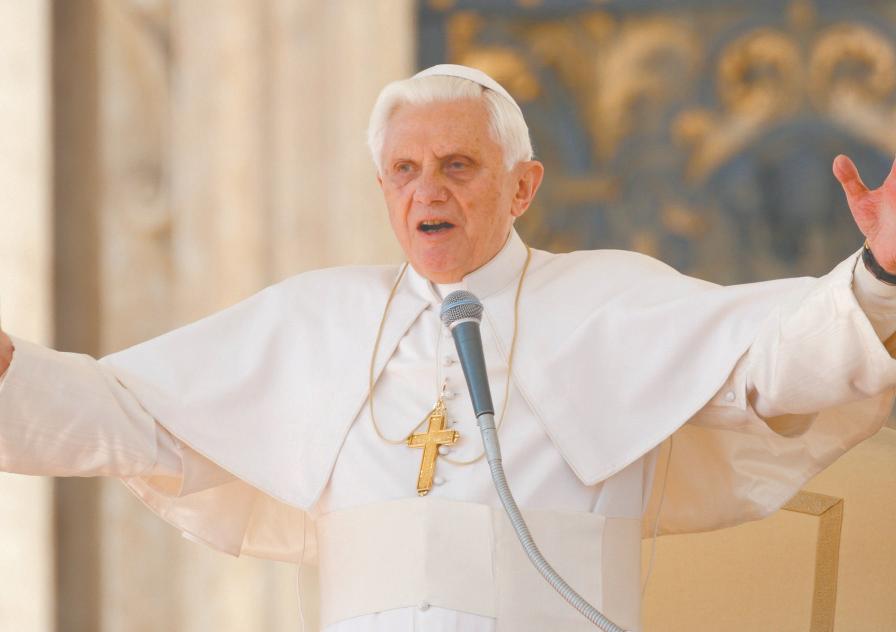
for the Doctrine of the Faith until 2001, when they were directed to do so by Pope John Paul II’s motu proprio titled Sacramentorum sanctitatis tutela. Prior to that, most cases involving sex abuse never got to Rome. In the rare instance when a Bishop wanted to laicise an abuser priest against his will, the canonical process involved would be handled by one of the Vatican courts, not by Ratzinger’s office.
Prior to 2001, the Congregation for the Doctrine of the Faith got involved only in the exceedingly rare instances when the sex abuse occurred in the context of the confessional, since a canonical tribunal within the congregation handled cases involving abuse of the Sacrament of Penance.
That, for example, is how the case of Fr Marcial Maciel Degollado, the founder of the Legionaries of Christ, ended up in the congregation, and it’s also why officials in the Milwaukee Archdiocese directed the case of Fr Lawrence Murphy there.
One certainly can question how Ratzinger’s office handled those exceptional cases, and the record seems painfully slow and ambivalent in comparison with how similar accusations would be dealt with today. Moreover, Ratzinger was a senior Vatican official from 1981 forward, and therefore he shares in the corporate failure in Rome to appreciate the magnitude of the crisis until terribly late in the game.
To suggest, however, that Ratzinger was the Vatican’s “point man” on sex abuse for almost 25 years, and to fault him for the mishandling of every case that arose between 1981 and 2001, is misleading. Prior to 2001, Ratzinger had nothing personally to do with the vast majority of sex abuse cases, even the small percentage which wound up in Rome.
2 The 2001 letter
In some reporting and commentary, a May 2001 letter from
tively to all our requests for assistance here in the United States.
Recall that Canon 1324, par 4, states that in Canon Law a minor is a person under the age of 16 years. However, in the civil laws of the United States, a minor is deemed to be a person under the age of 18 years.
After we brought this gap to the attention of Cardinal Ratzinger, the canonical age was also raised to 18 years to accommodate civil law in our country and in other countries.
With respect to the processes of dealing with cases of alleged sexual abuse by priests in our Archdiocese, Cardinal Ratzinger and his Congregation responded swiftly and gave us advice on how to proceed with each of these
forward, the Congregation for the Doctrine of the Faith would play the lead role. Beginning in 2001, Ratzinger was forced to review all the files on every priest credibly accused of sexual abuse anywhere in the world, giving him a sense of the contours of the problem that virtually no-one else in the Catholic Church can claim.
In a recent article, I outlined the “conversion experience” Ratzinger and his staff went through after 2001. Beforehand, he came off as just another Roman Cardinal in denial; after his experience of reviewing the files, he began to talk openly about the “filth” in the Church, and his staff became far more energetic about prosecuting abusers.
where the Apostolic Signatura, in effect the Vatican’s supreme court, ordered him reinstated. Wuerl then took the case to Rome himself, and eventually prevailed. The experience left many American Bishops, however, with the impression that lengthy canonical trials were not the way to handle these cases.
When the new American norms reached Rome, they ran into opposition precisely on the grounds that everyone deserves their day in court - another instance, in the eyes of critics, of the Vatican being more concerned about the rights of abuser priests than victims.
Ratzinger to the Bishops of the world, titled De delictis gravioribus, is being touted as a “smoking gun,” proving that Ratzinger attempted to thwart reporting priestly sex abuse to the police or other civil authorities by ordering the Bishops to keep it secret.
That letter indicates that certain grave crimes, including the sexual abuse of a minor, are to be referred to the Congregation for the Doctrine of the Faith, and that they are “subject to the pontifical secret.”
The Vatican insists, however, that this secrecy applied only to the Church’s internal disciplinary procedures, and was not intended to prevent anyone from also reporting these cases to the police or other civil authorities. Technically, they’re correct, since nowhere in the 2001 letter is there any prohibition on reporting sex abuse to police or civil prosecutors.
In reality, few Bishops needed a legal edict from Rome ordering them not to talk publicly about sexual abuse. That was simply the culture of the Church at the time, which makes the hunt for a “smoking gun” something of a red herring right out of the gate.
Fixing a culture - one in which the Vatican, to be sure, was as complicit as anyone else, but one which was widespread and deeply rooted well beyond Rome - is never as simple as abrogating one law and issuing another.
That aside, here’s the key point about Ratzinger’s 2001 letter: Far from being seen as part of the problem, at the time it was widely hailed as a watershed moment towards a solution.
It marked recognition in Rome, really for the first time, of how serious the problem of sex abuse really is, and it committed the Vatican to getting directly involved. Prior to that 2001 motu proprio and Ratzinger’s letter, it wasn’t clear that anyone in Rome acknowledged responsibility for managing the crisis; from that moment

cases. We never had delays or a lack of proper response.
Whenever I proposed that a certain priest be returned to the lay state and no longer serve as a priest, the Congregation responded quickly and in accord with my recommendations.
Whether the priest petitioned himself for a return to the lay state, or whether I insisted upon his return to the lay state,
For those who have followed the Church’s response to the crisis, Ratzinger’s 2001 letter is therefore seen as a long overdue assumption of responsibility by the Vatican, and the beginning of a far more aggressive response. Whether that response is sufficient is, of course, a matter for fair debate, but to construe Ratzinger’s 2001 letter as no more than the last gasp of old attempts at denial and cover-up misreads the record.
3 Canonical Trials
Ratzinger’s top deputy at the Congregation for the Doctrine of the Faith on sex abuse cases, Maltese Msgr Charles Scicluna, recently gave an interview to an Italian Catholic paper in which he said that of the more than 3,000 cases eventually referred to Rome, only 20 percent were subjected to a full canonical trial. In some reporting, including the Thursday piece in The New York Times, this figure has been cited as evidence of Vatican “inaction.”
Once again, however, those who have followed the story closely have almost exactly the opposite impression. Back in June 2002, when the American Bishops first proposed a set of new canonical norms to Rome, the heart of which was the “one strike and you’re out” policy, they initially wanted to avoid canonical trials altogether. Instead, they wanted to rely on a Bishop’s administrative power to permanently remove a priest from ministry. That’s because their experience of Roman tribunals over the years was that they were often slow, cumbersome, and the outcome was rarely certain.
Most famously, Bishops and experts would point to the case of Fr Anthony Cipolla in Pittsburgh, during the time that Donald Wuerl, now the Archbishop of Washington, was the local Bishop. Wuerl had removed Cipolla from ministry in 1988 following allegations of sexual abuse.
Cipolla appealed to Rome,
Cardinal Ratzinger and the Congregation responded in favour of the Church, not of the priest individually. Without the proactive and helpful assistance of Cardinal Ratzinger and the Congregation over these years, the Archdiocese of Los Angeles would never have been able to move forward aggressively to remove priests from ministry who were proved to be guilty of the sexual abuse of minors.
The Congregation continues forward with the same vision and policies of then Cardinal Ratzinger, and I am grateful to the present Prefect and staff of the Congregation for their proactive efforts to assist us in our local dioceses and Archdioceses to remove from active ministry
A special commission of American Bishops and senior Vatican officials brokered a compromise, in which the Congregation for the Doctrine of the Faith would sort through the cases one-by-one and decide which ones would be sent back for full trials.
The fear at the time was that the congregation would insist on trials in almost every case, thereby dragging out the administration of justice, and closure for the victims, almost indefinitely. In the end, however, only 20 per cent were sent back for trials, while for the bulk of the cases, 60 per cent, Bishops were authorised to take immediate administrative action, because the proof was held to be overwhelming.
The fact that only 20 per cent of the cases were subjected to full canonical trial has been hailed as a belated grasp in Rome of the need for swift and sure justice, and a victory for the more aggressive American approach to the crisis.
It should be noted, too, that bypassing trials has been roundly criticised by some Canon lawyers and Vatican officials as a betrayal of the due process safeguards in Church law.
Hence, to describe that 20 percent figure as a sign of “inaction” cannot help but seem, to anyone who’s been paying attention, rather ironic.
In truth, handling 60 percent of the cases through the stroke of a Bishop’s pen has, up to now, more often been cited as evidence of exaggerated and draconian action by Ratzinger and his deputies. Obviously, none of this is to suggest that Benedict’s handling of the crisis - in Munich, at the Congregation for the Doctrine of the Faith, or as Pope - is somehow exemplary.
An accounting needs to be offered if this Pope, and the Church he leads, hopes to move forward. For that analysis to be constructive, however, as opposed to fueling polarisation and confusion, it’s important to keep the record straight.
John Allen is NCR senior correspondent. His e-mail address is jallen@ncronline.org.
any priest or Religious found guilty of the sexual abuse of minors. We have had a large number of former priests and Religious returned to the lay state under the auspices of Cardinal Ratzinger and the Congregation for the Doctrine of the Faith. Without those insights by the Congregation, many guilty priests would still be considered priests in our Church.
That is no longer the case.
All of the procedures and processes which Cardinal Ratzinger implemented over the years have helped me and the Archdiocese of Los Angeles resolve many unfortunate cases in a manner to make certain that the Church is a safe place for all peoples, especially children and young people.
Page 16 31 March 2010, The Record The Last Word


















































 BY BRIDGET SPINKS
BY BRIDGET SPINKS




































 BY JOHN T HAVIS Catholic News Service
BY JOHN T HAVIS Catholic News Service

 WBISHOP DONALD SPROXTON Auxiliary Bishop of
WBISHOP DONALD SPROXTON Auxiliary Bishop of


 IBISHOP C HRISTOPHER SAUNDERS Bishop of Broome
IBISHOP C HRISTOPHER SAUNDERS Bishop of Broome













